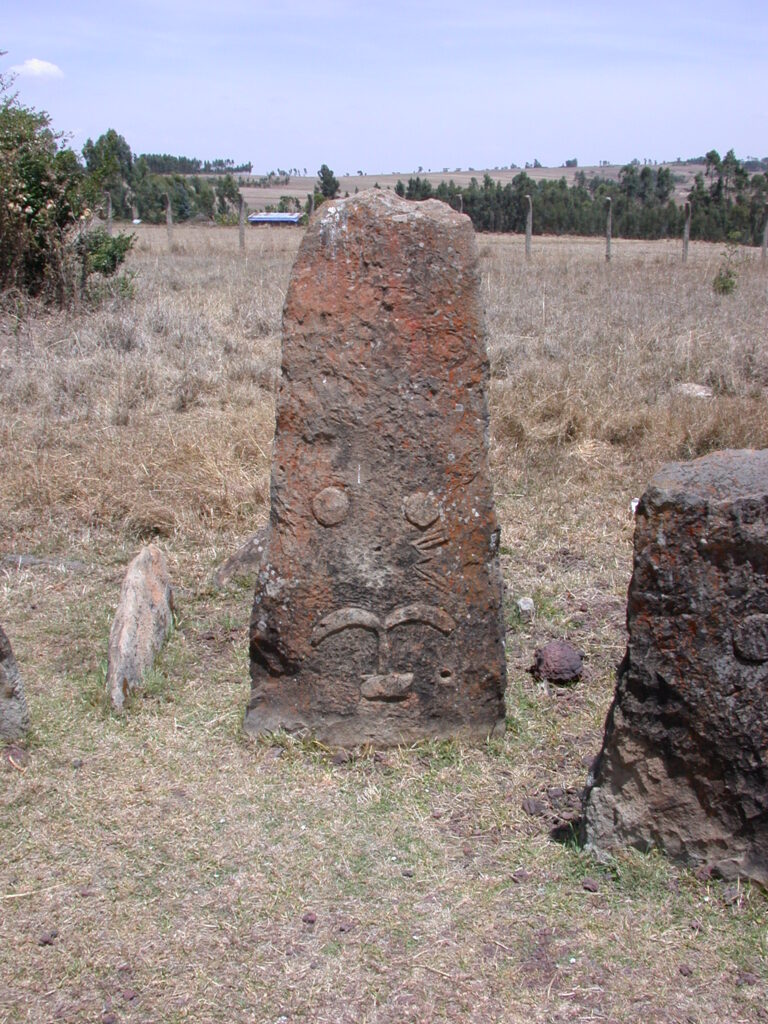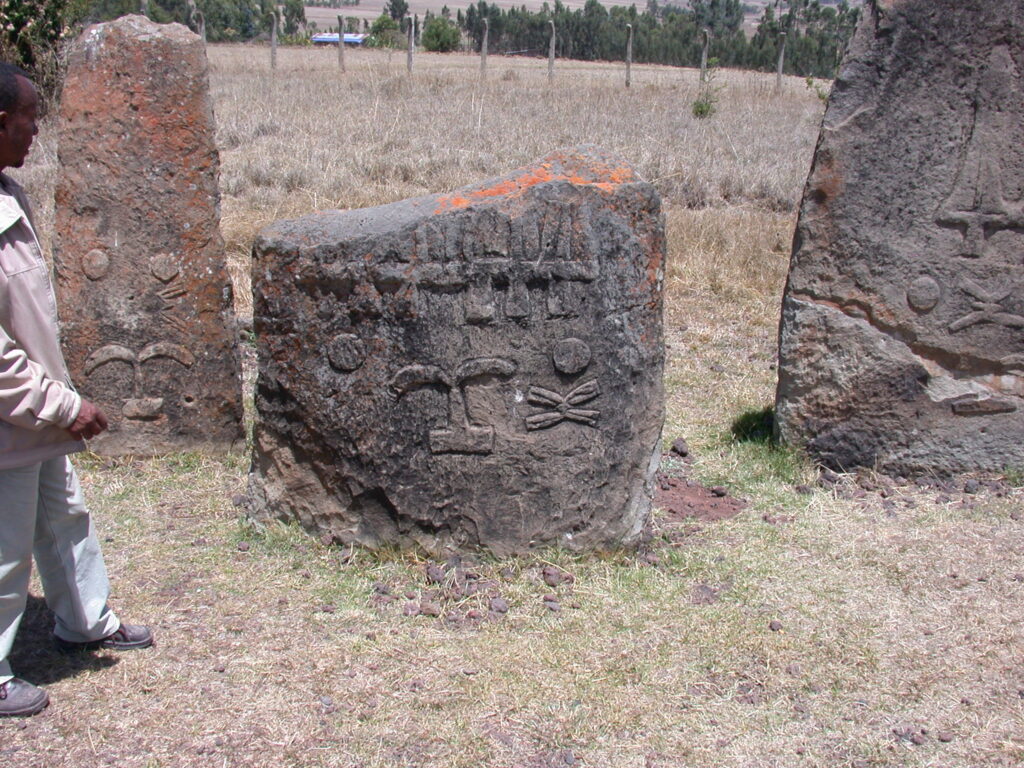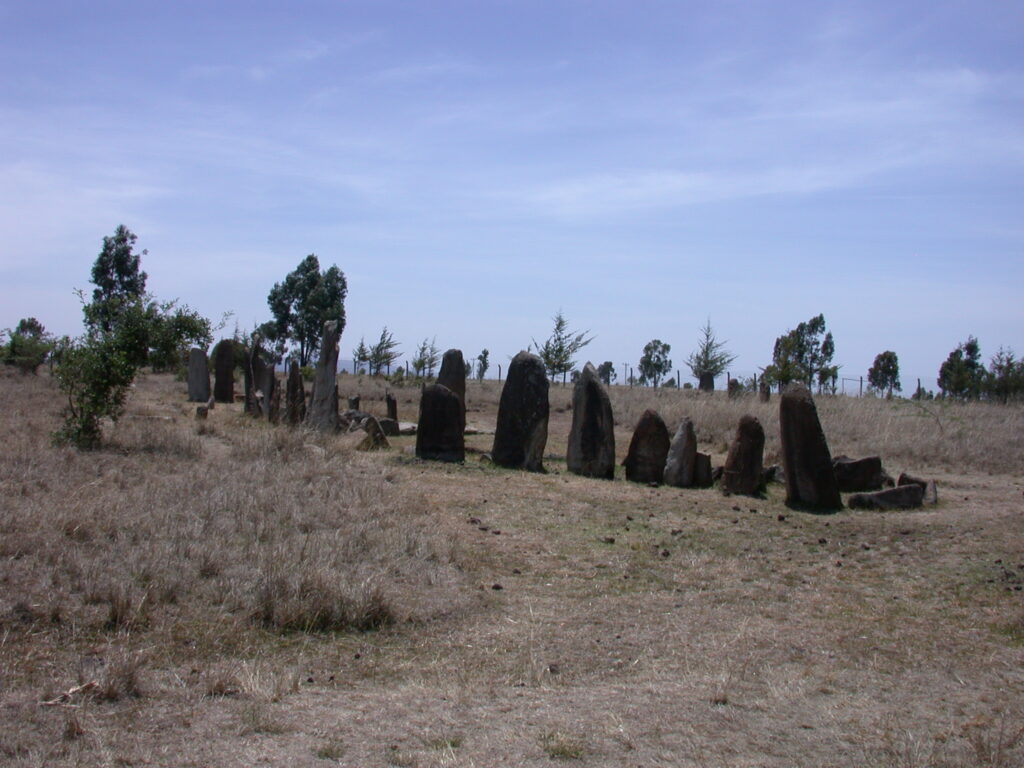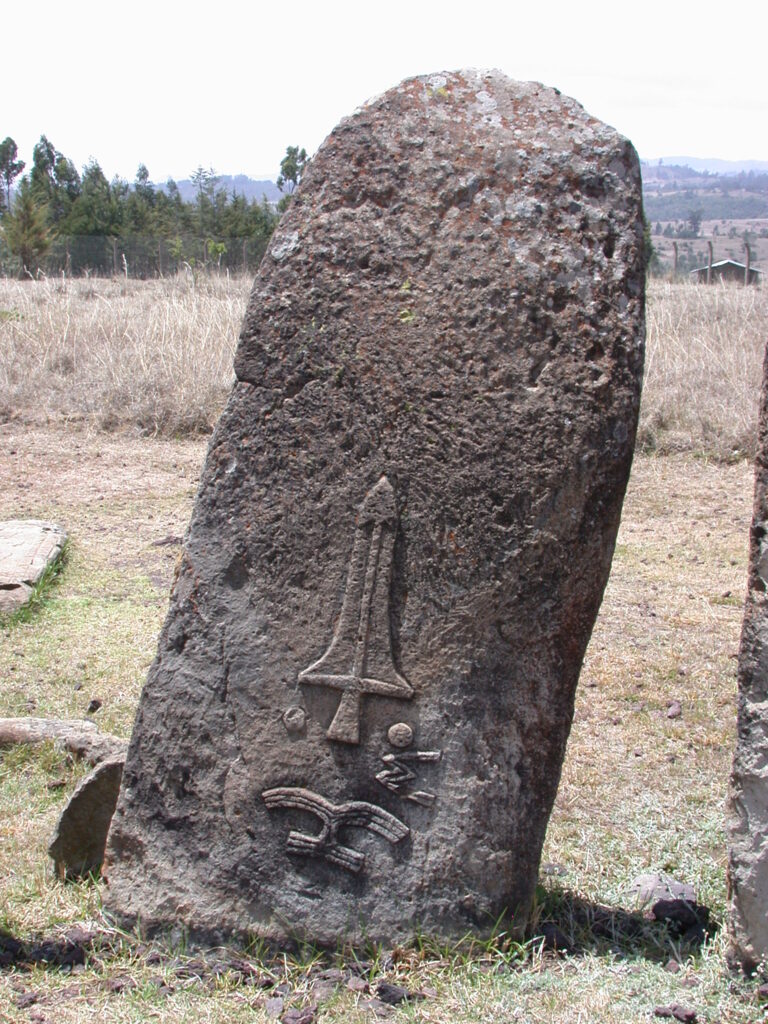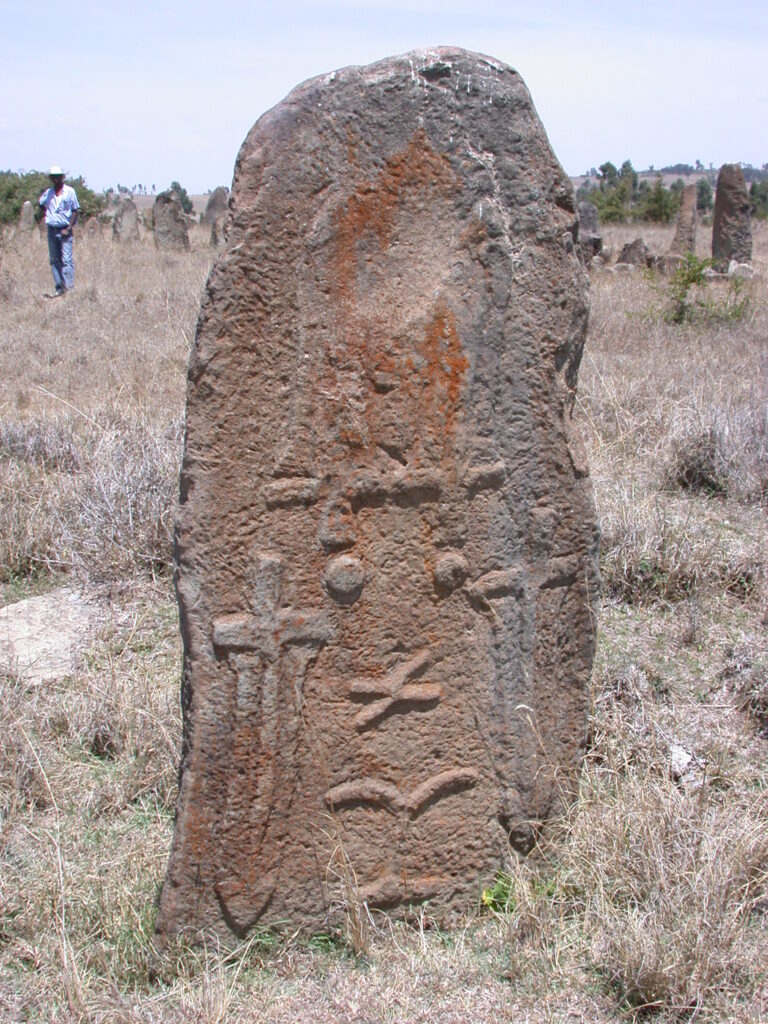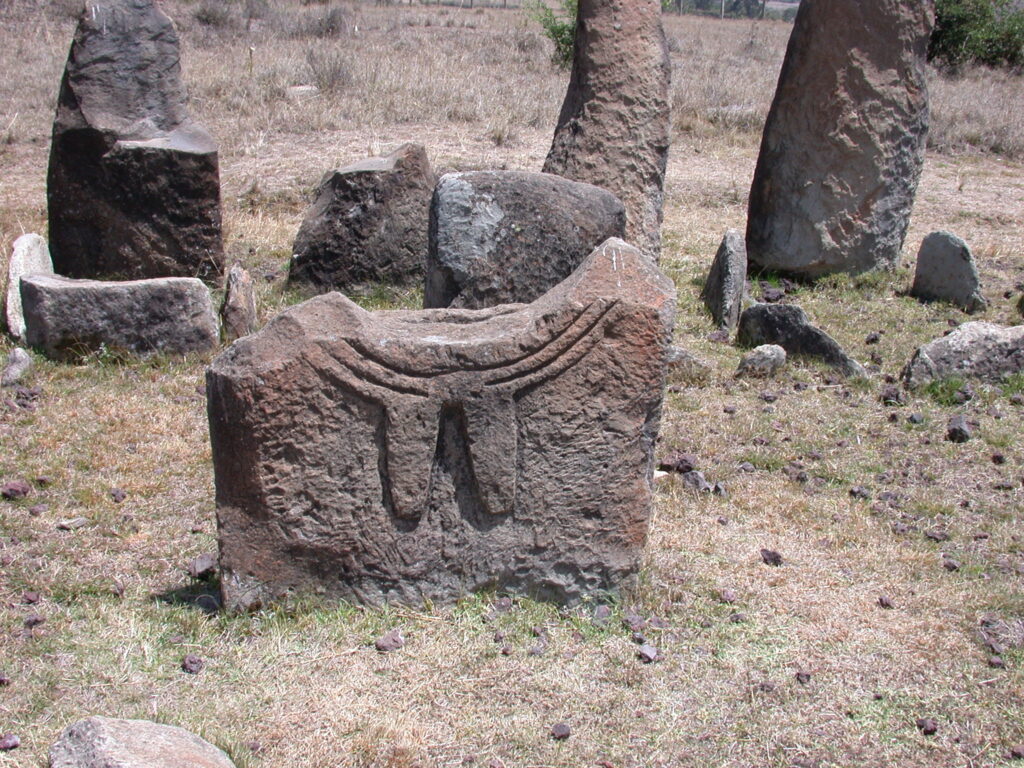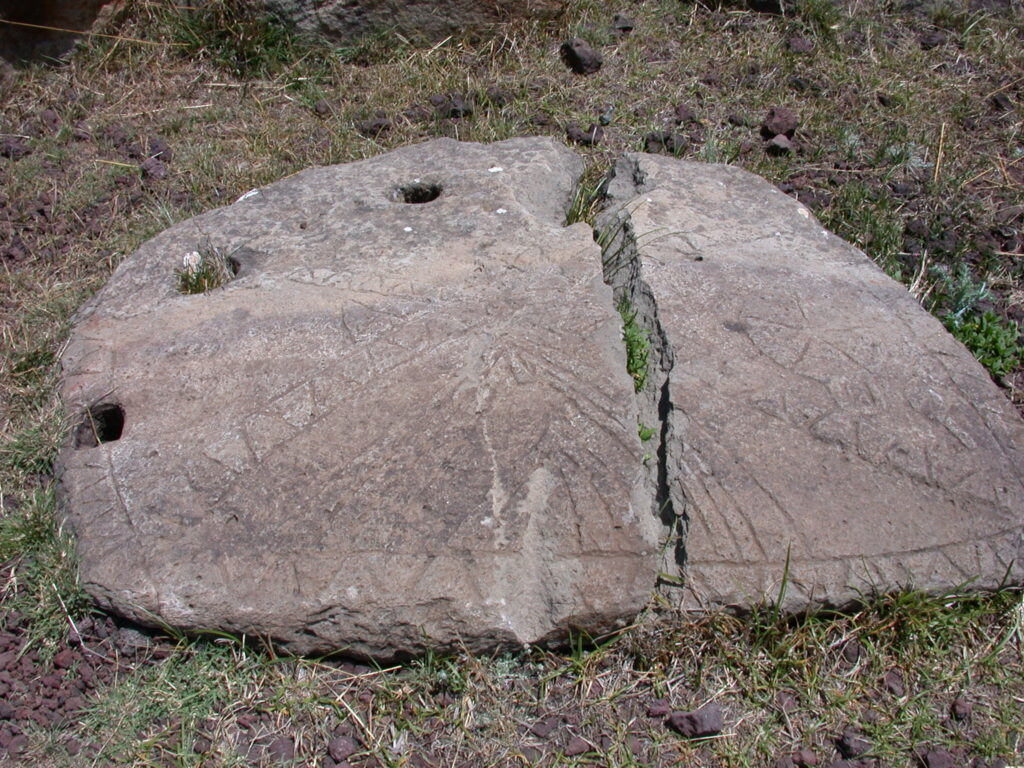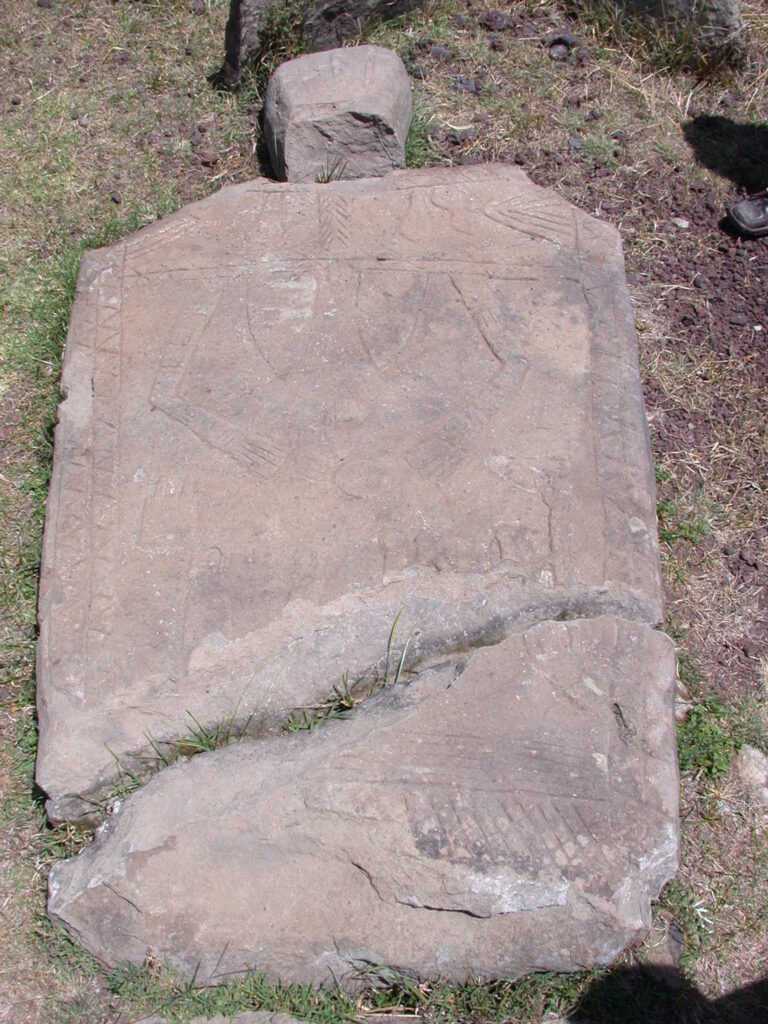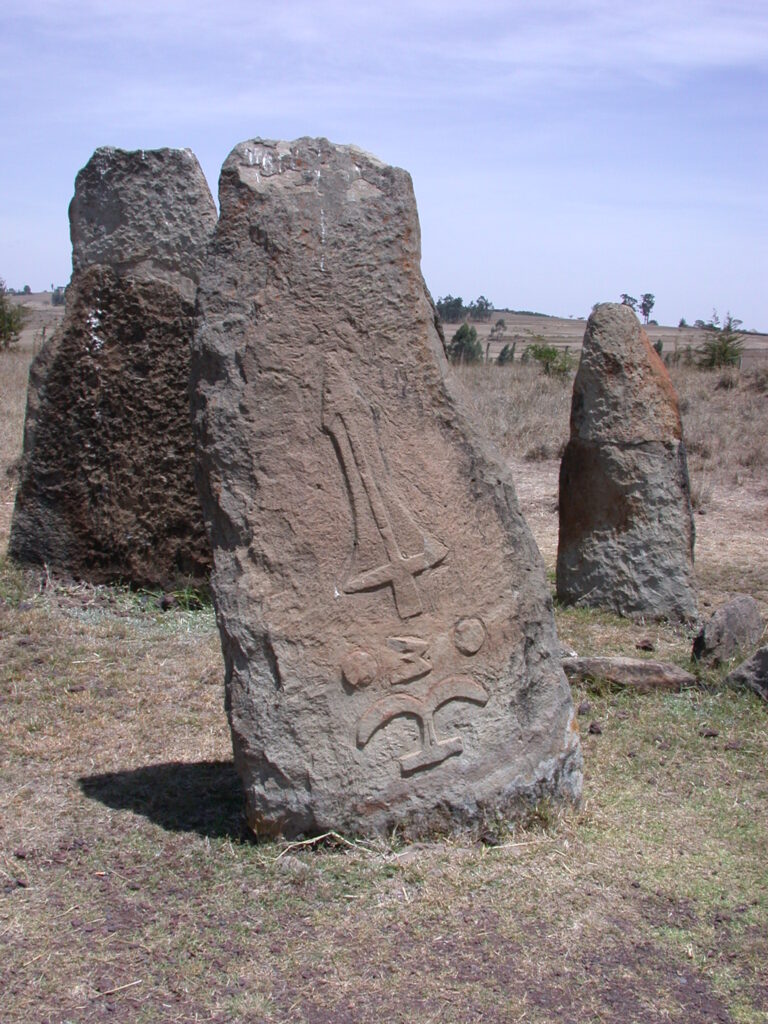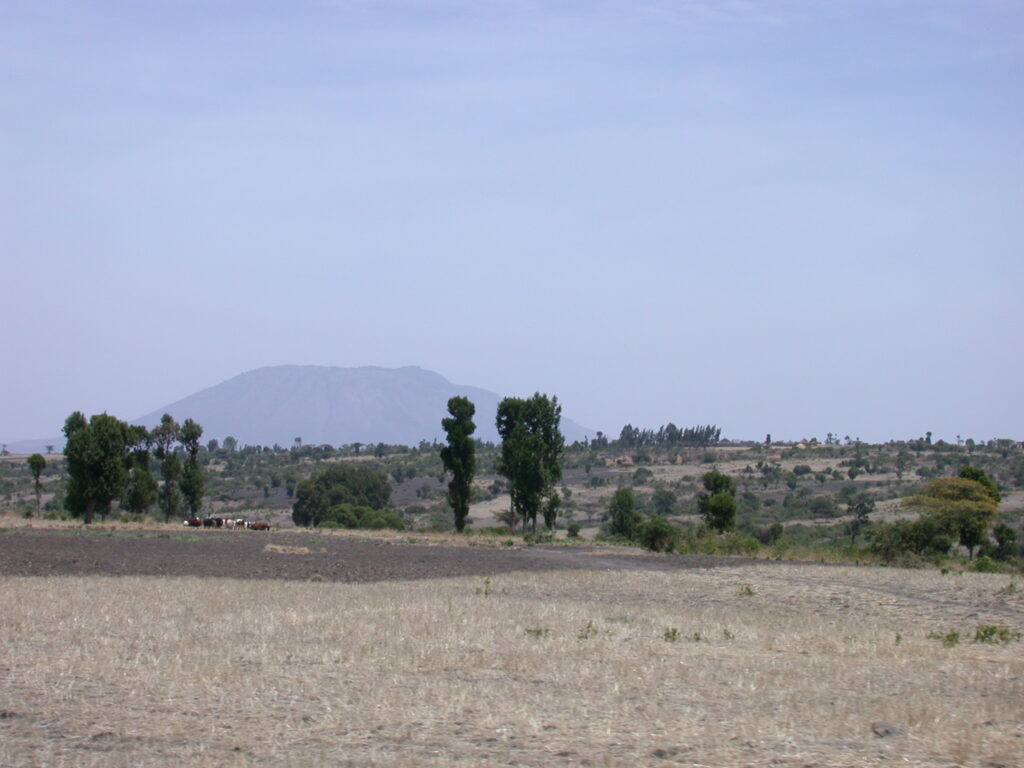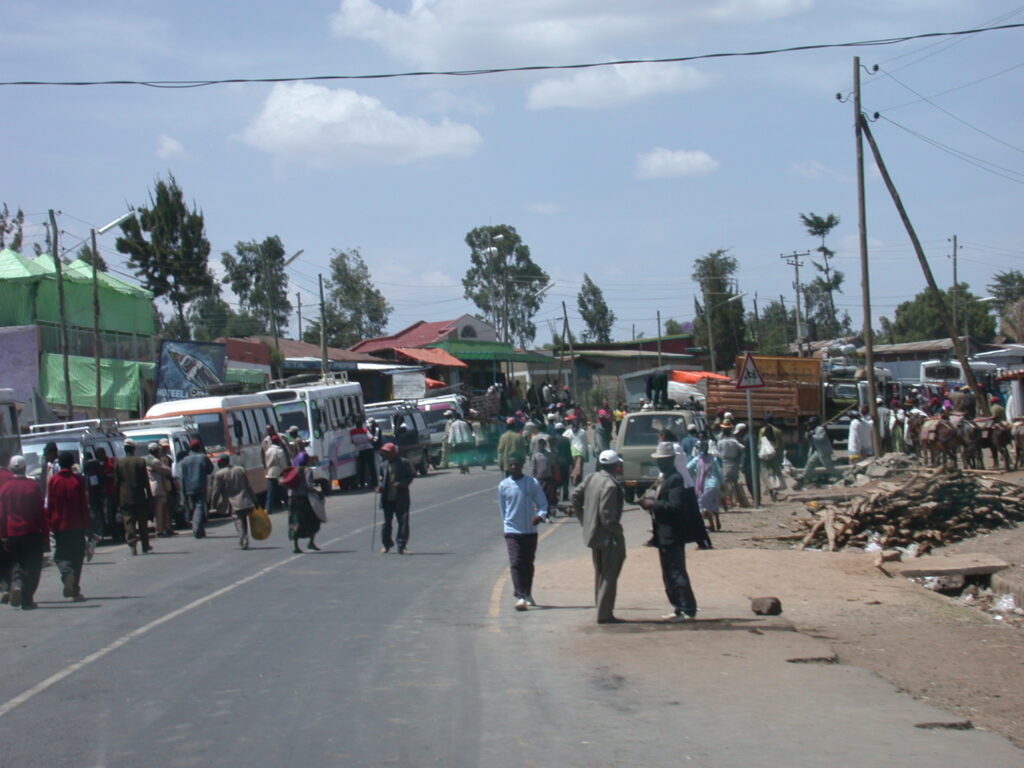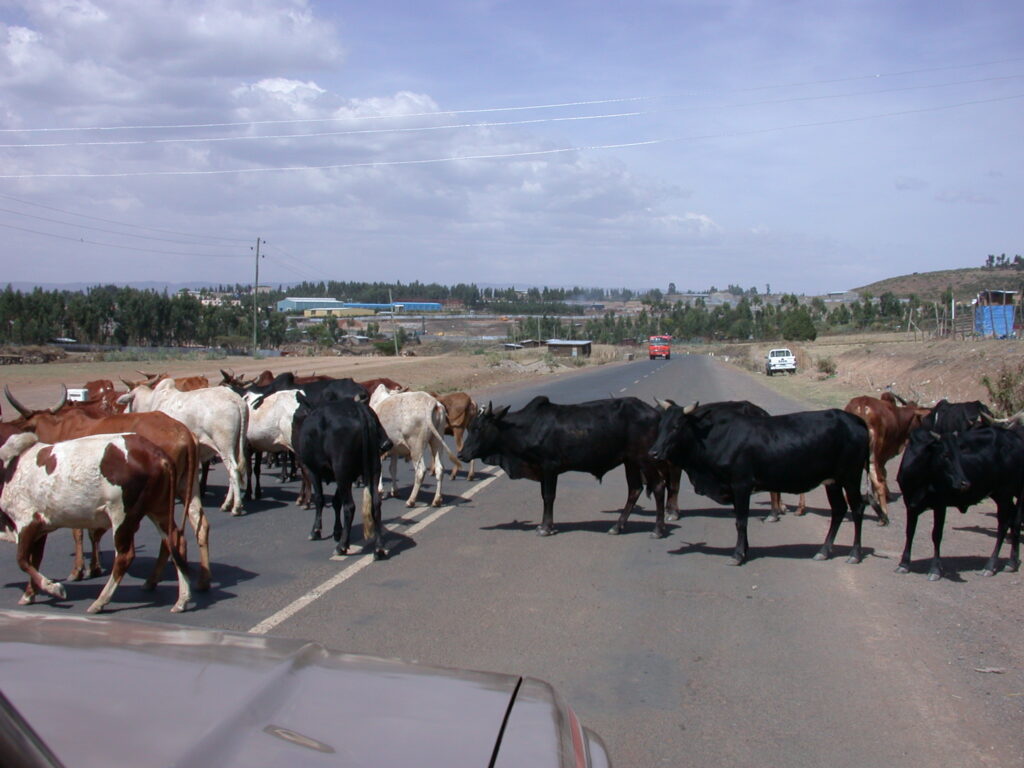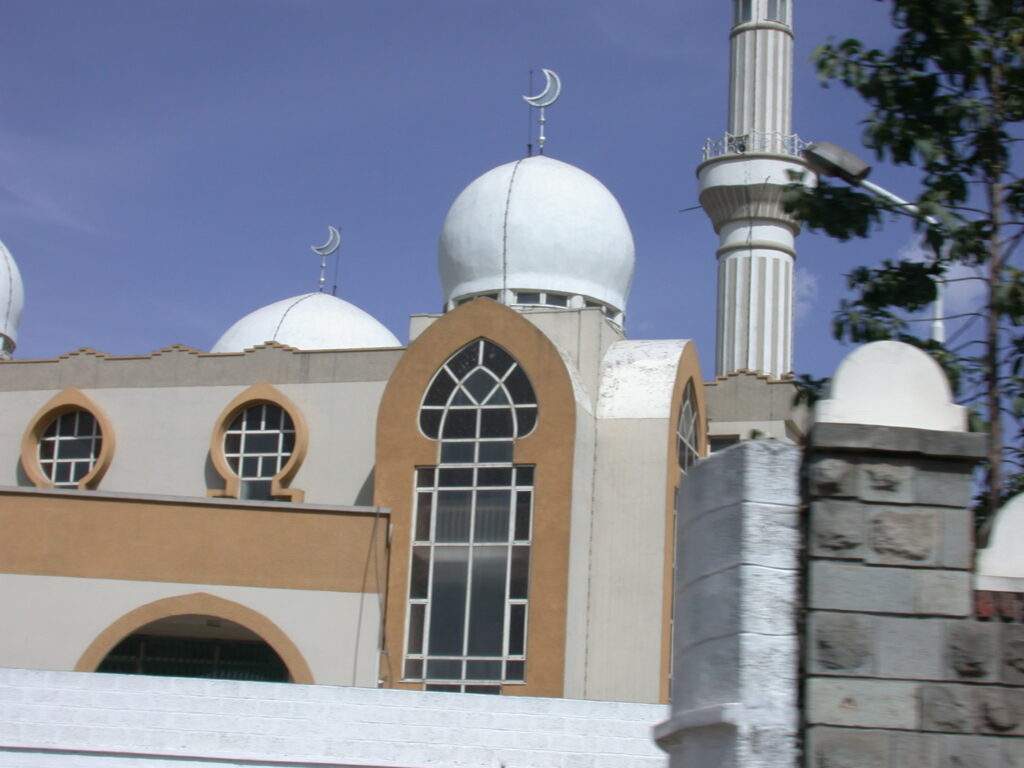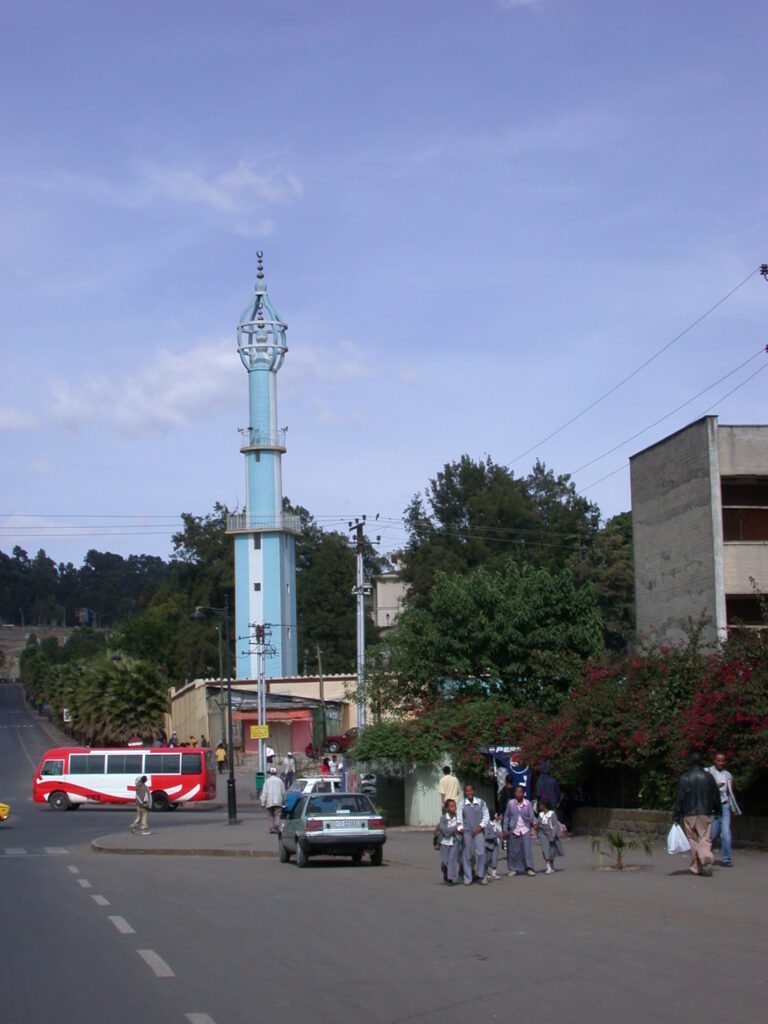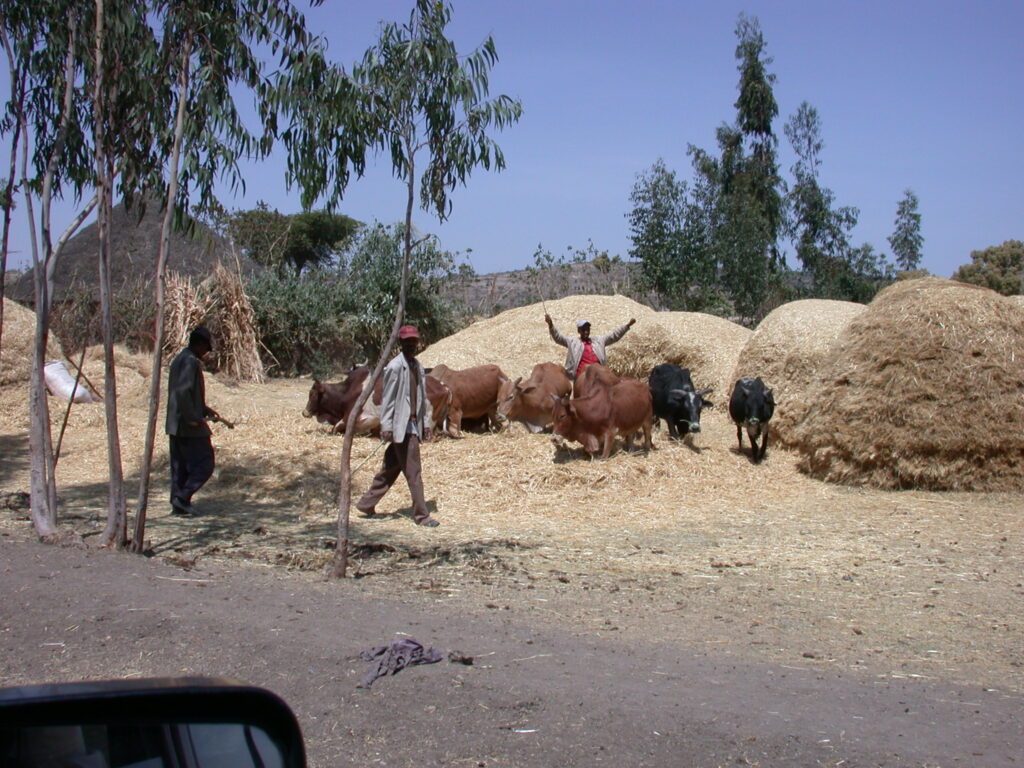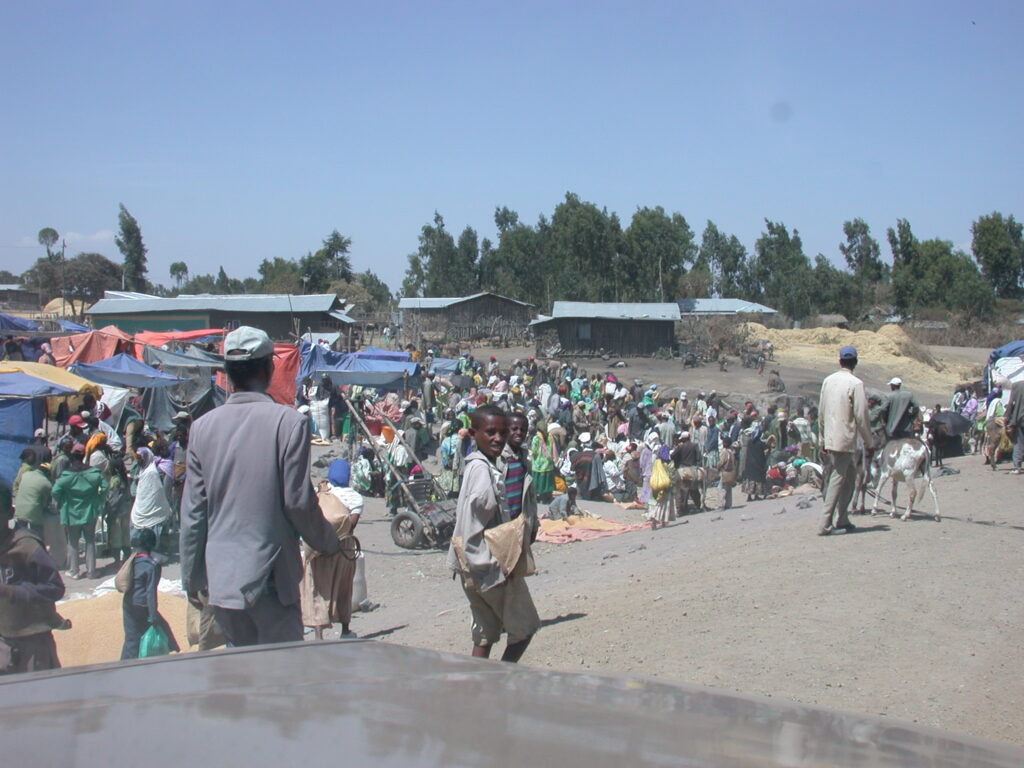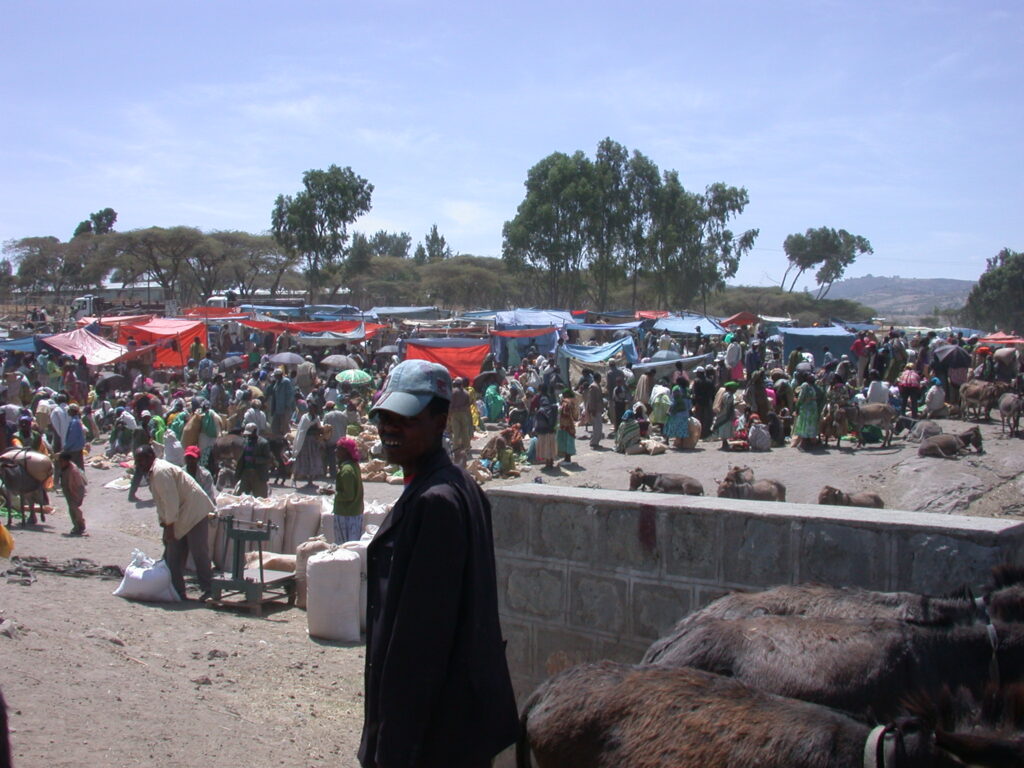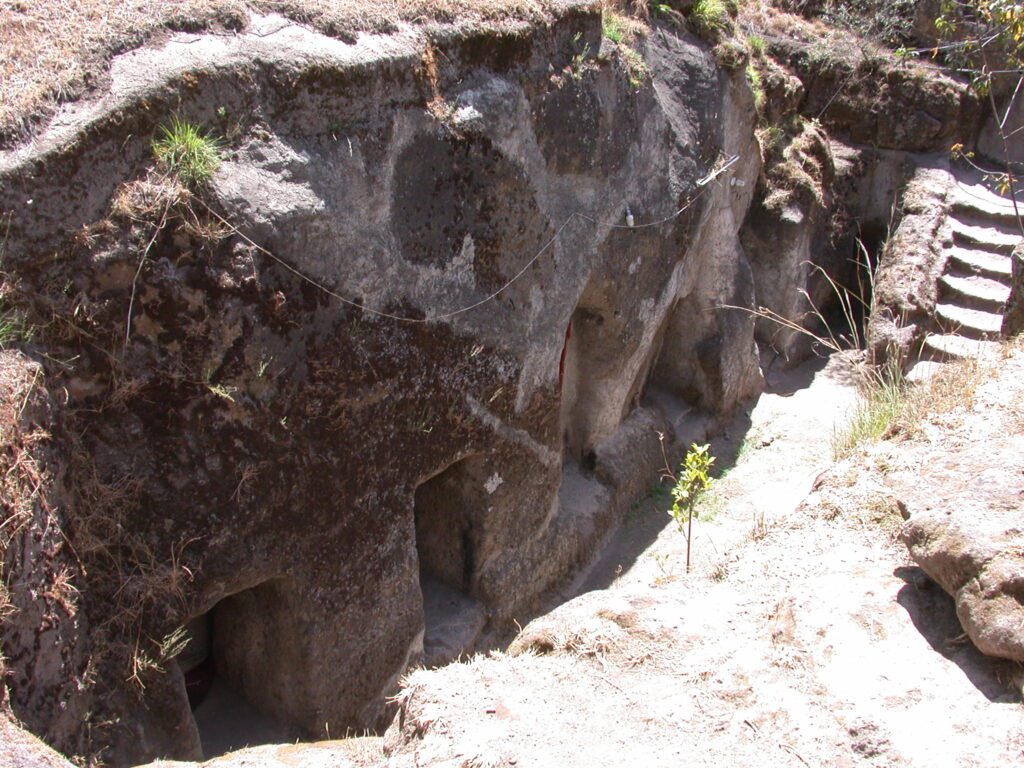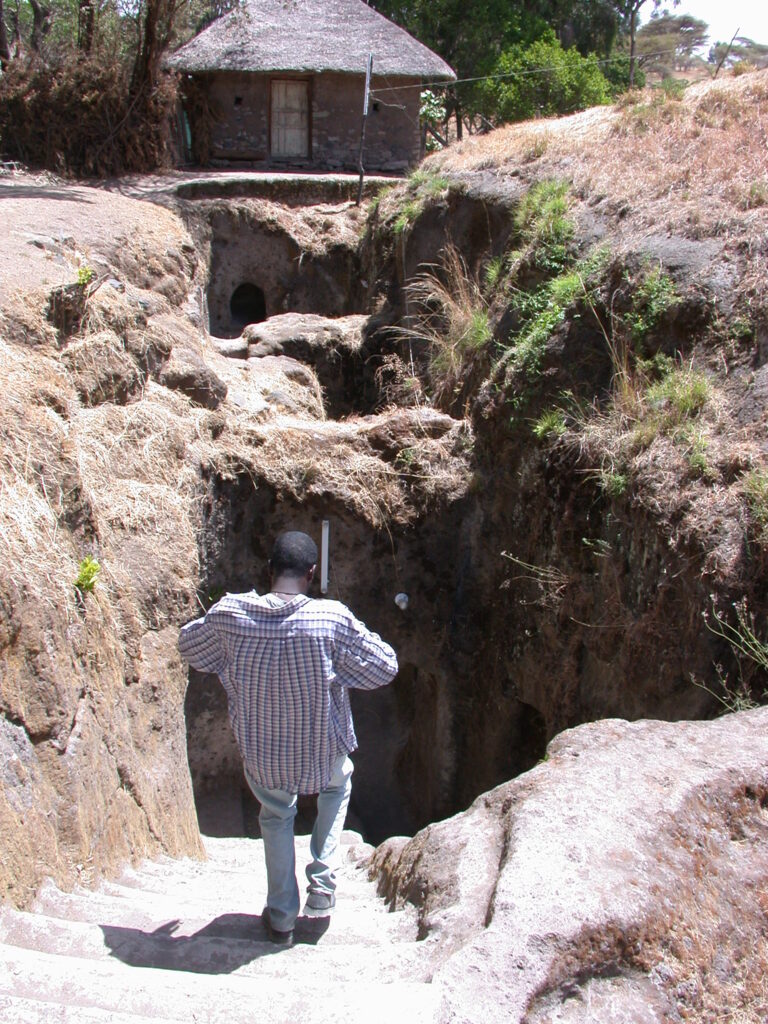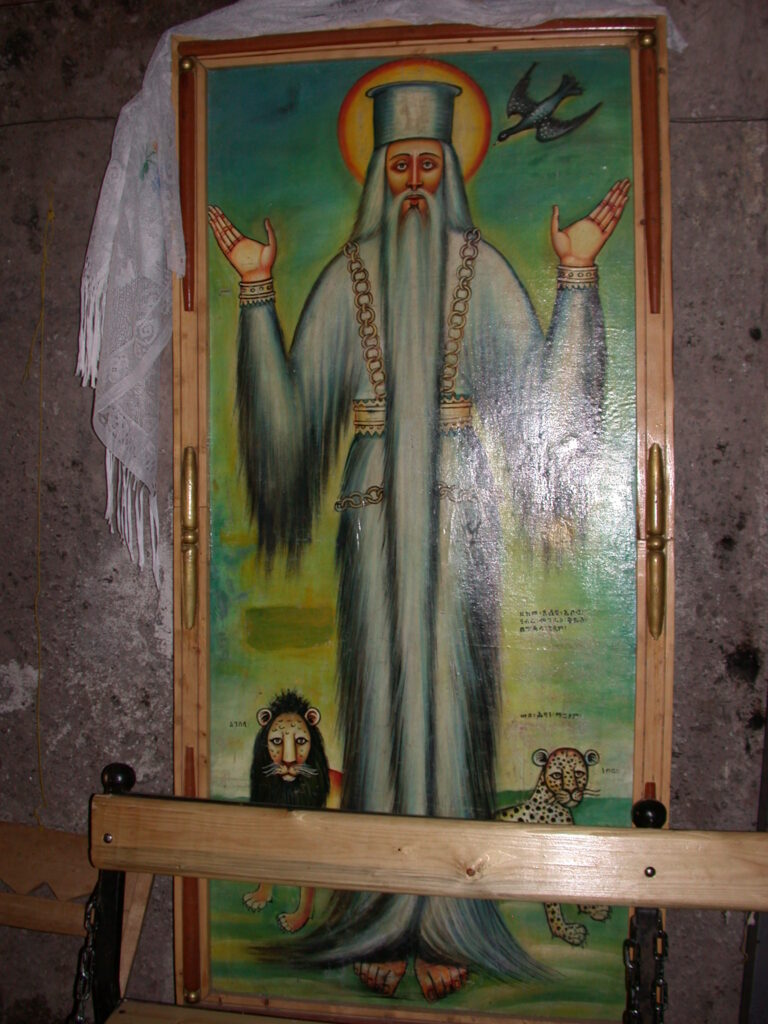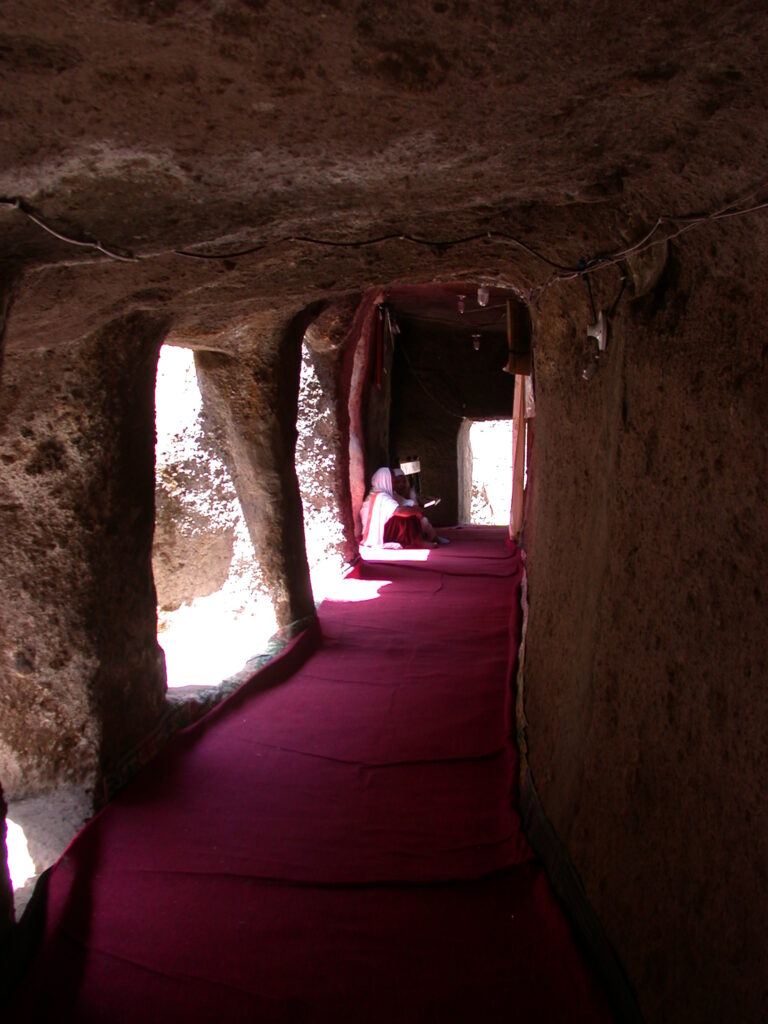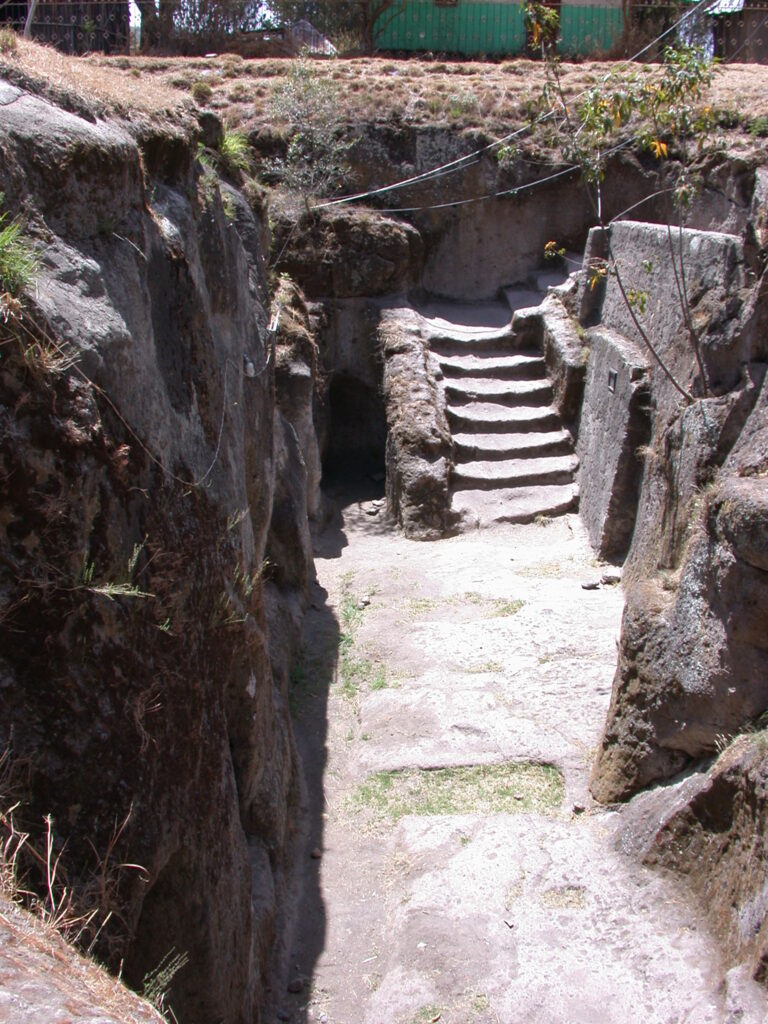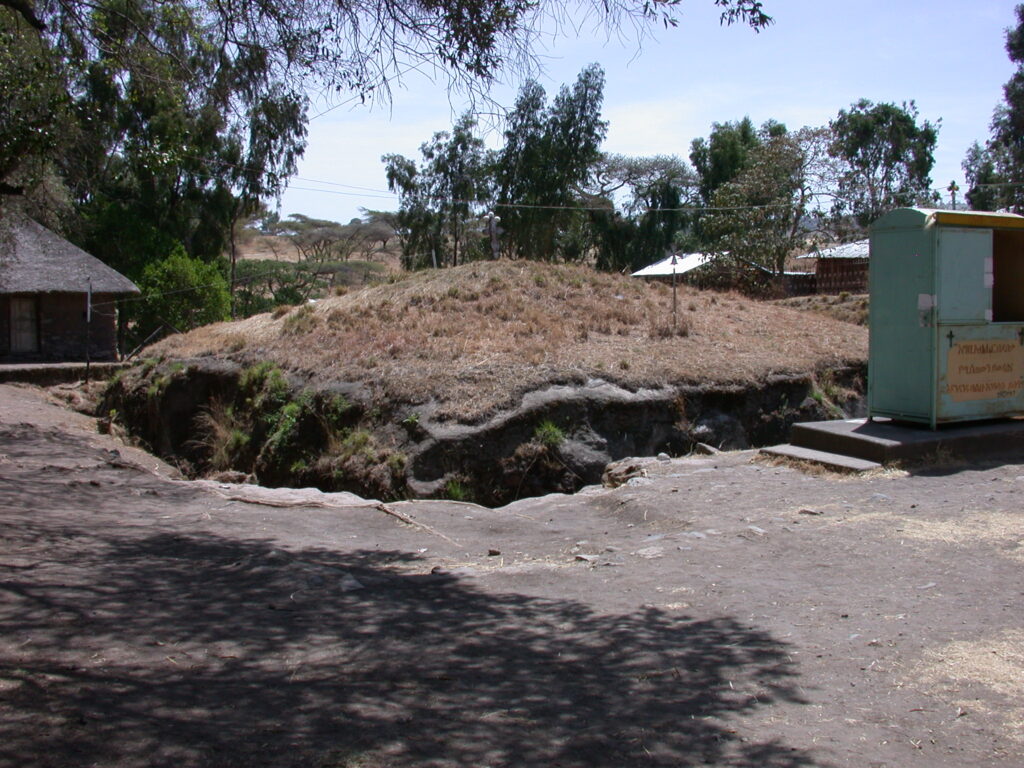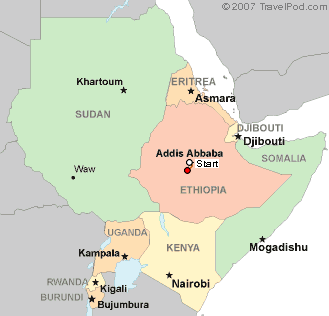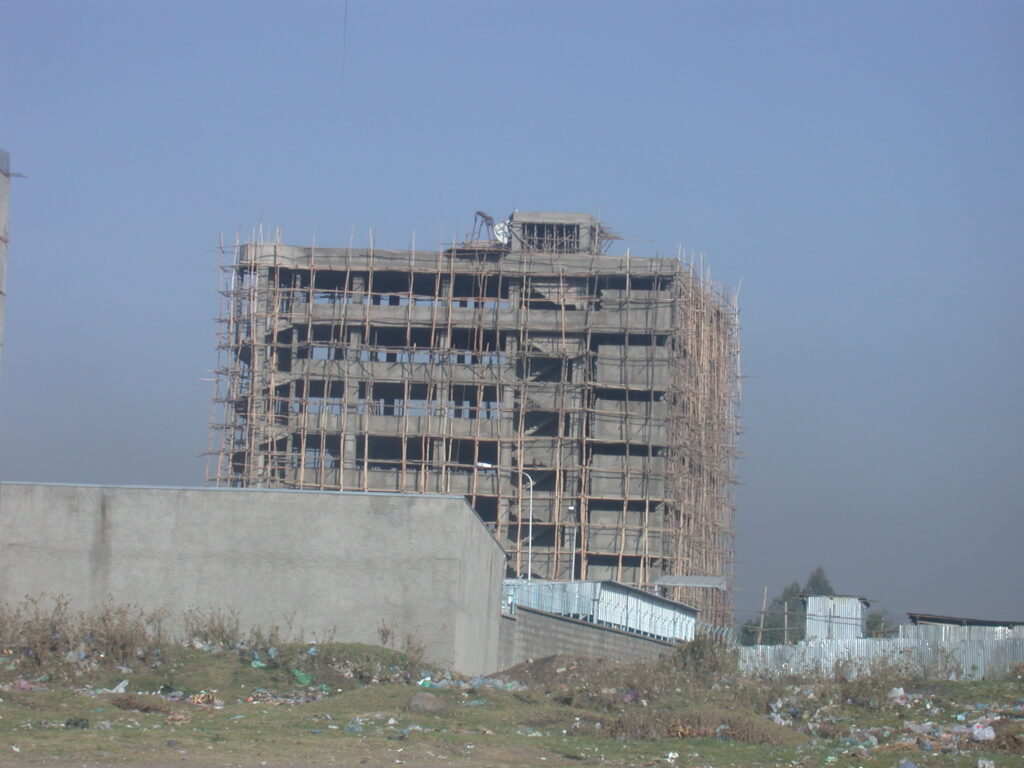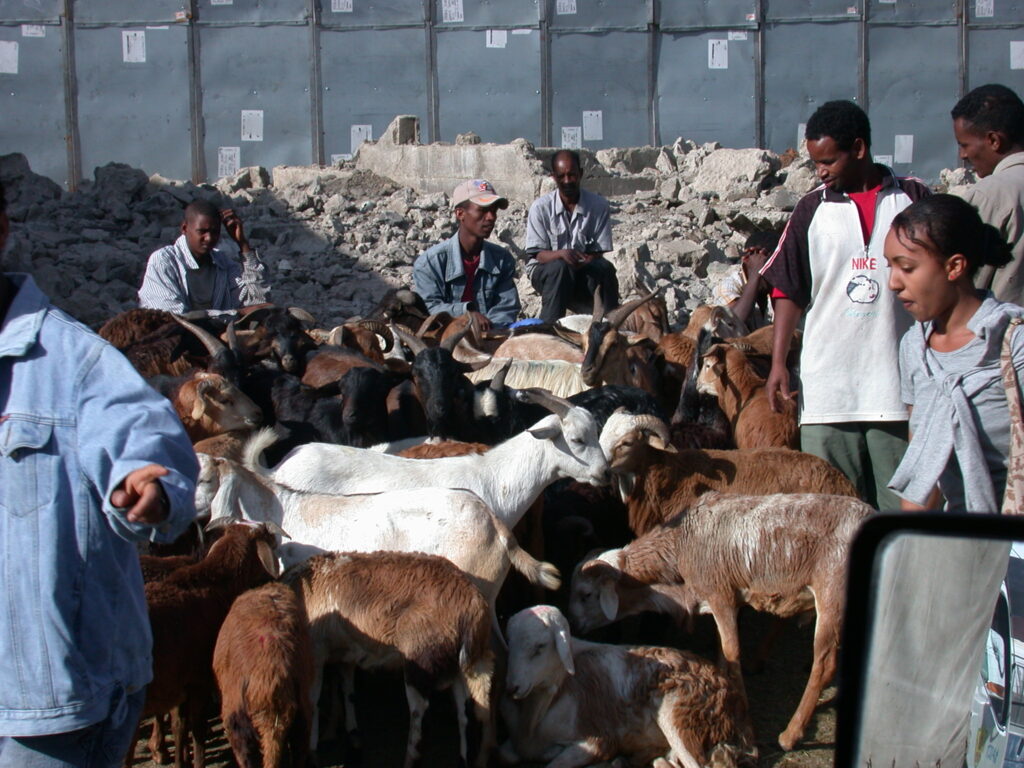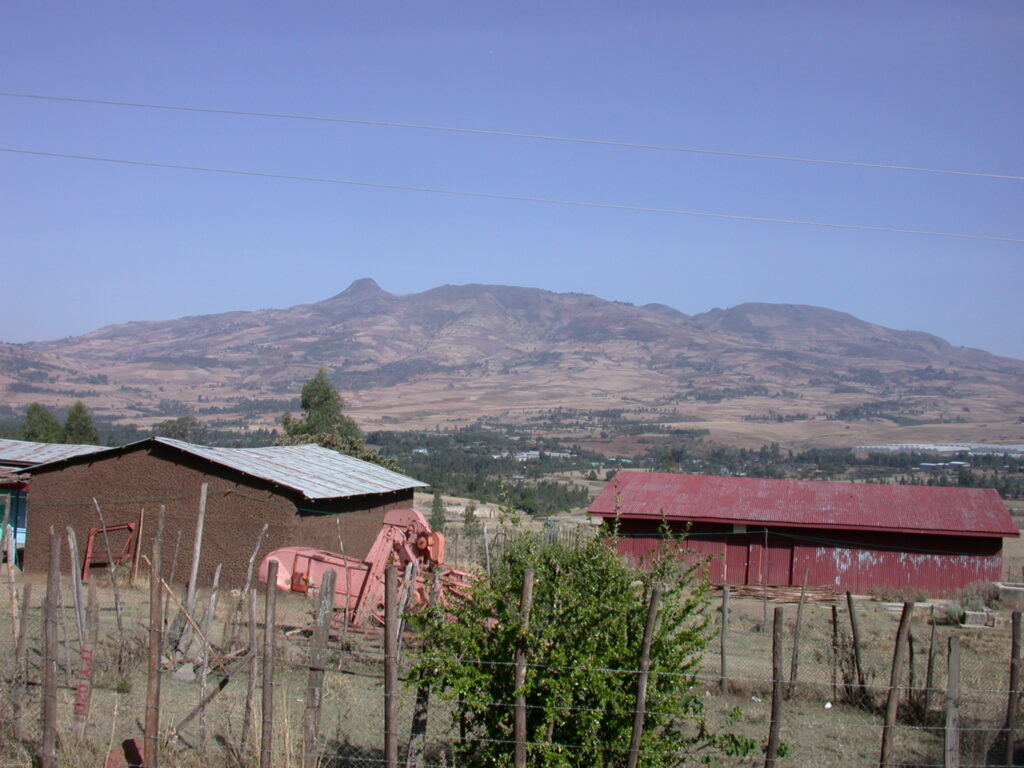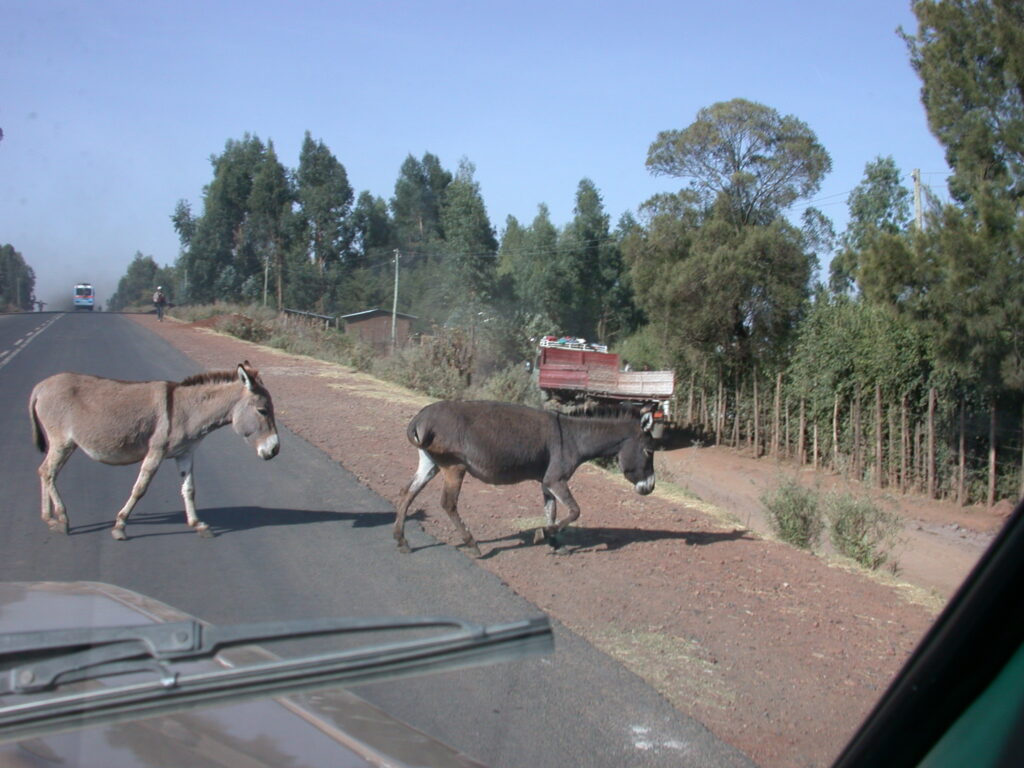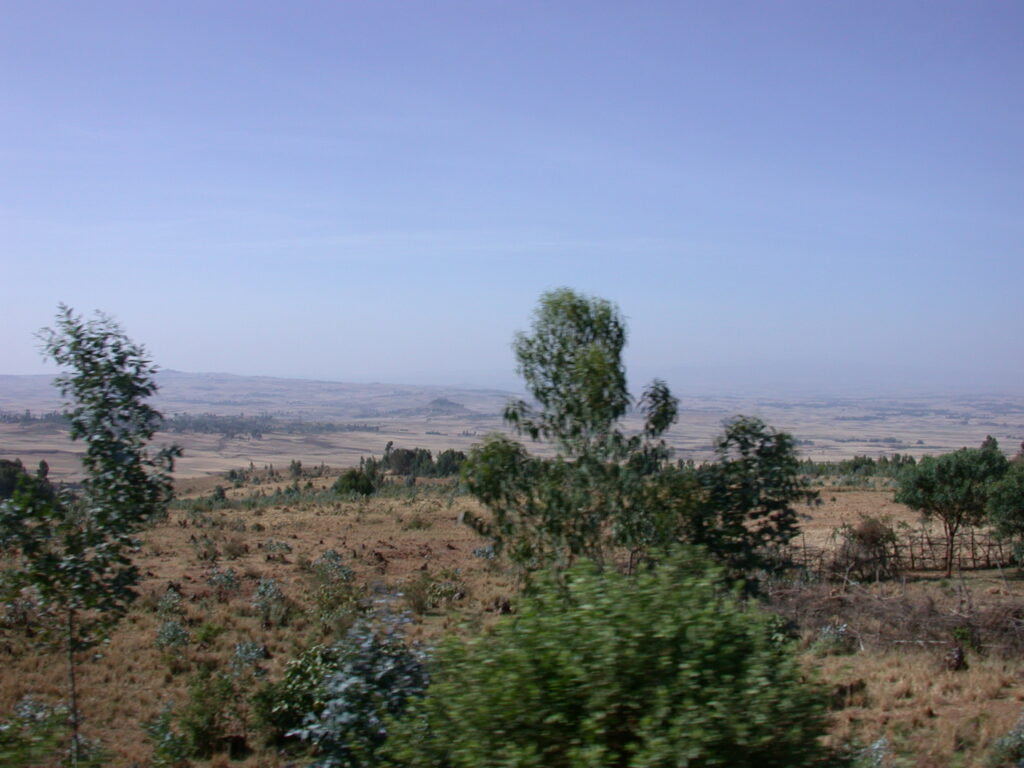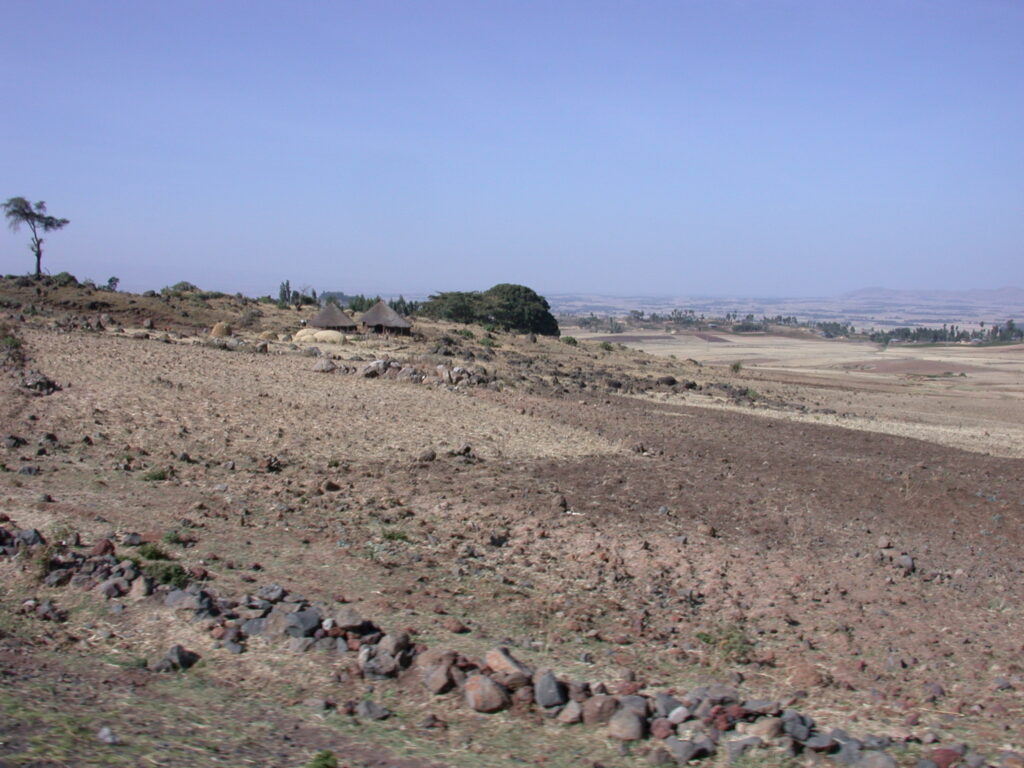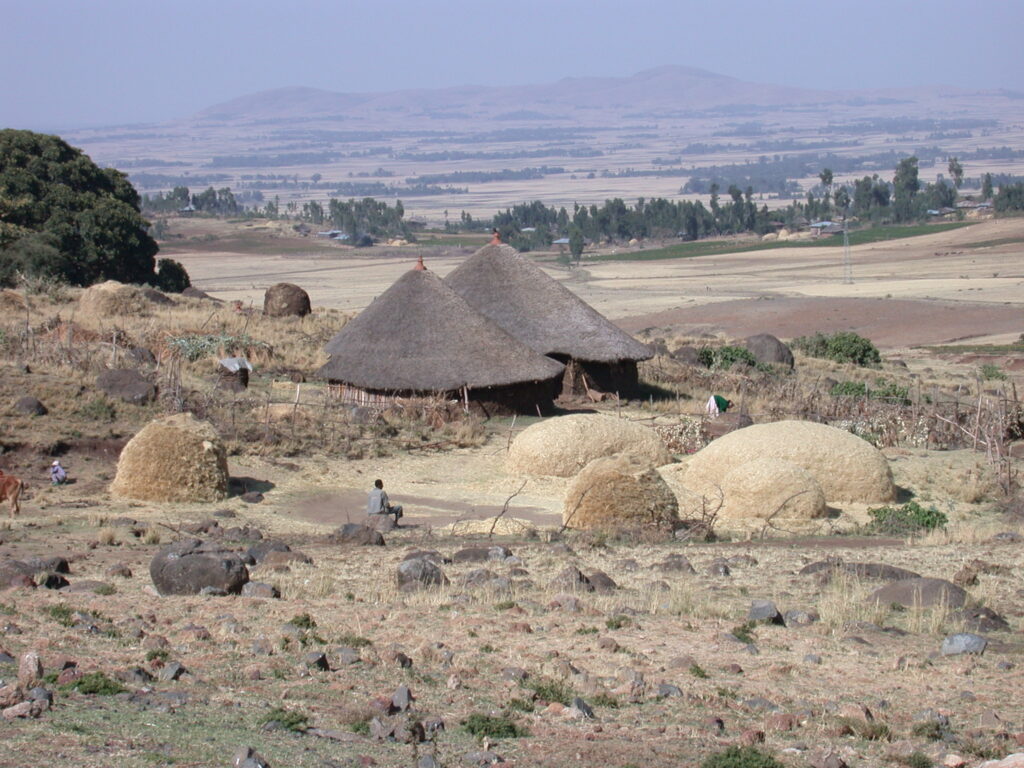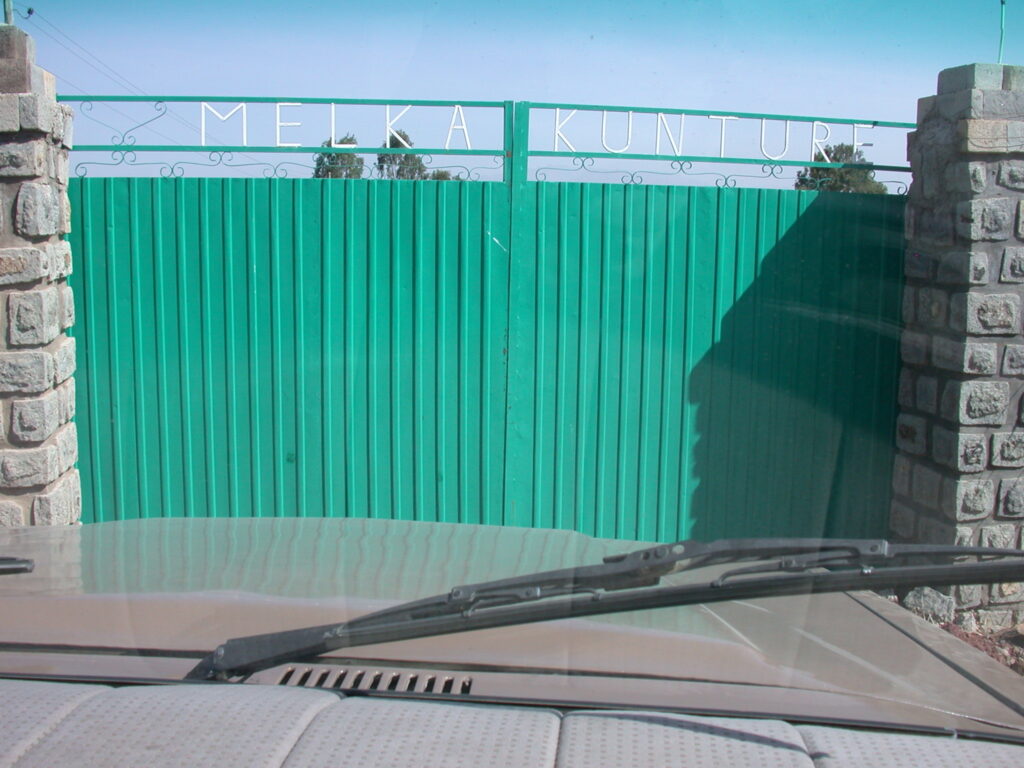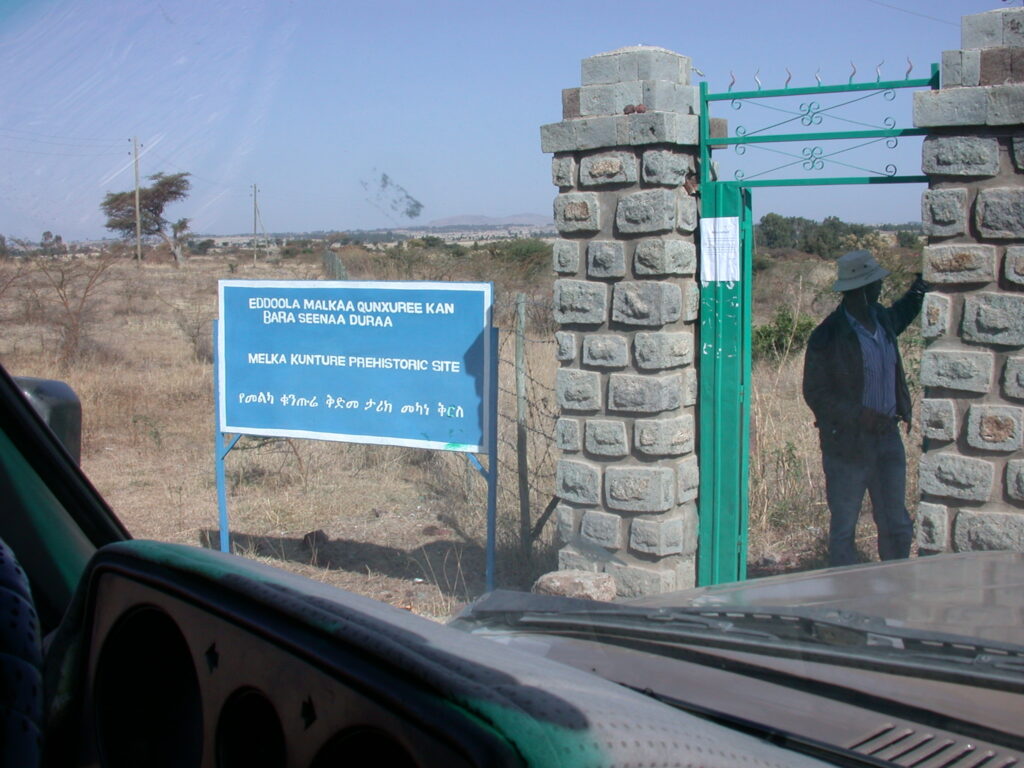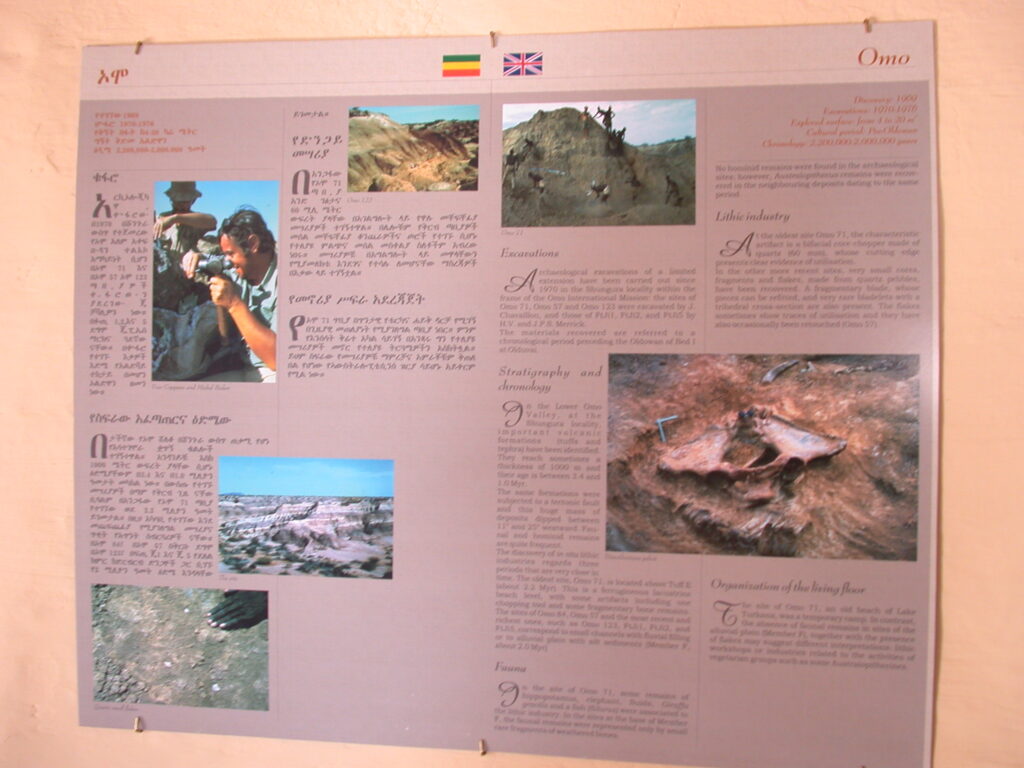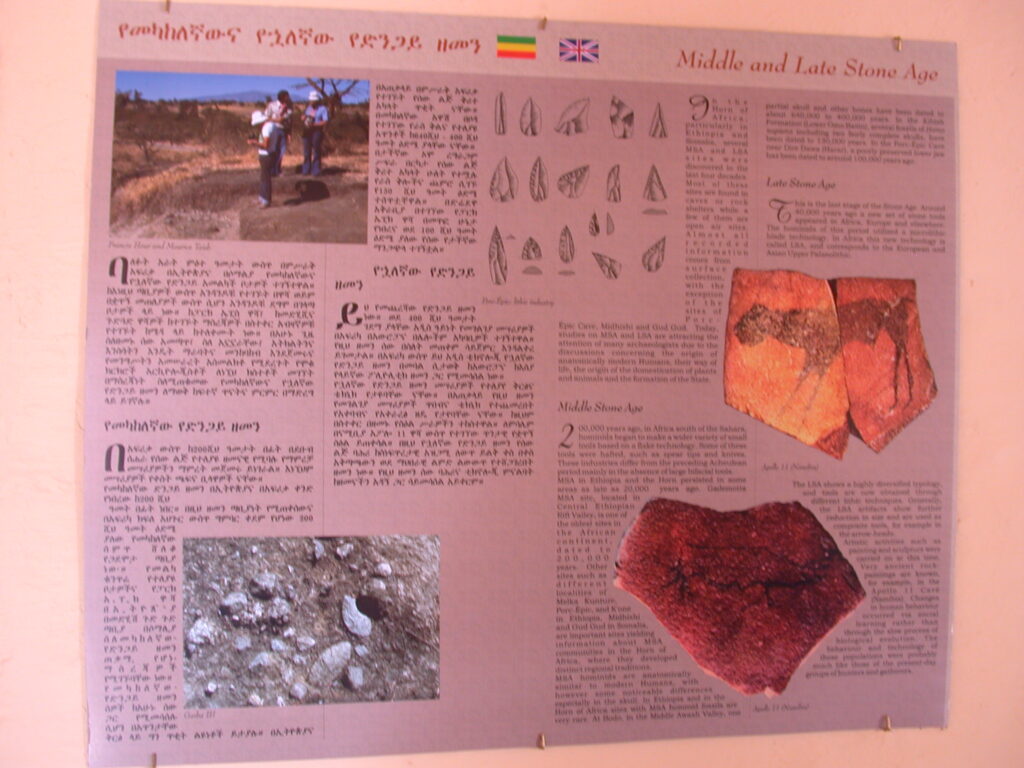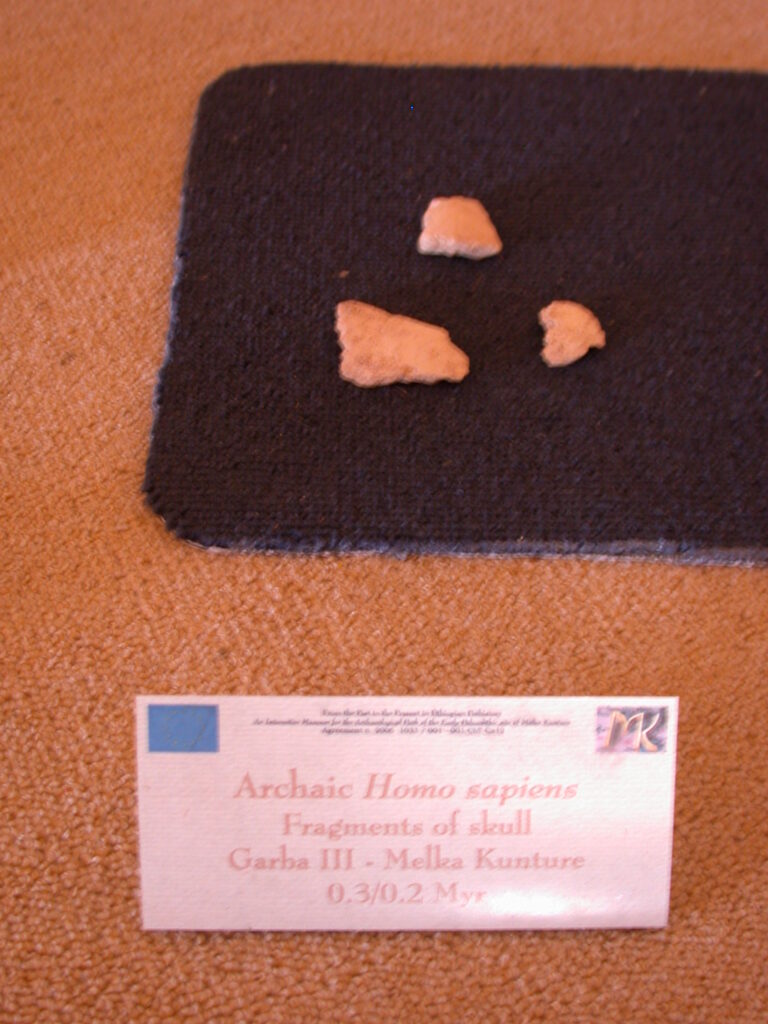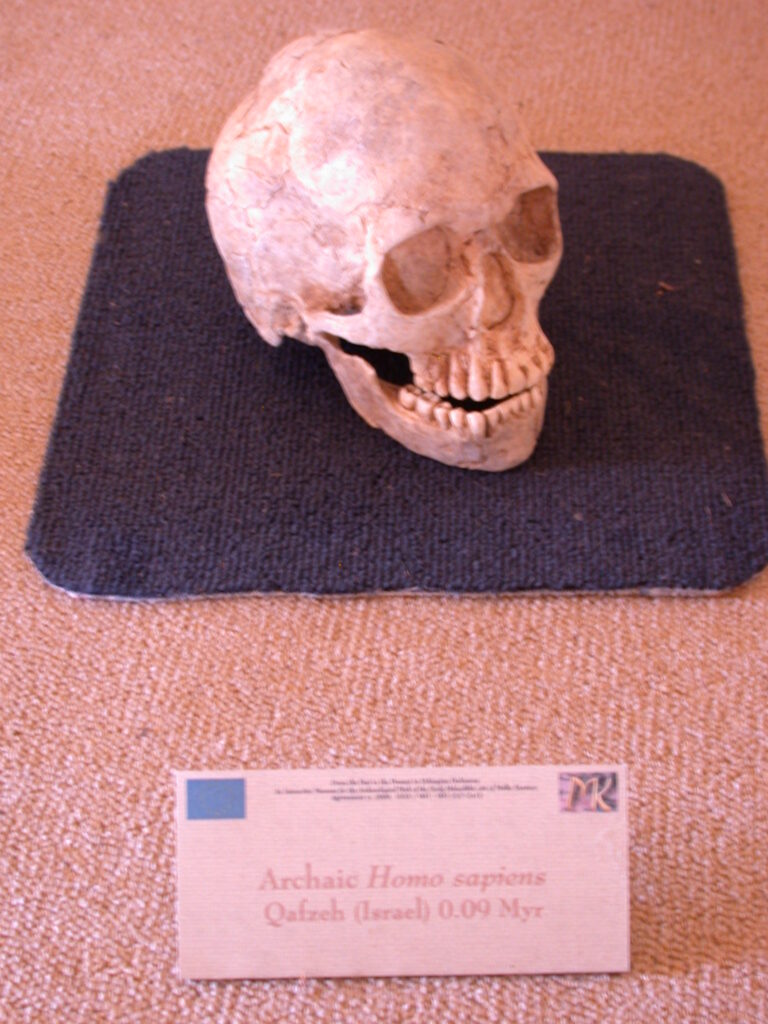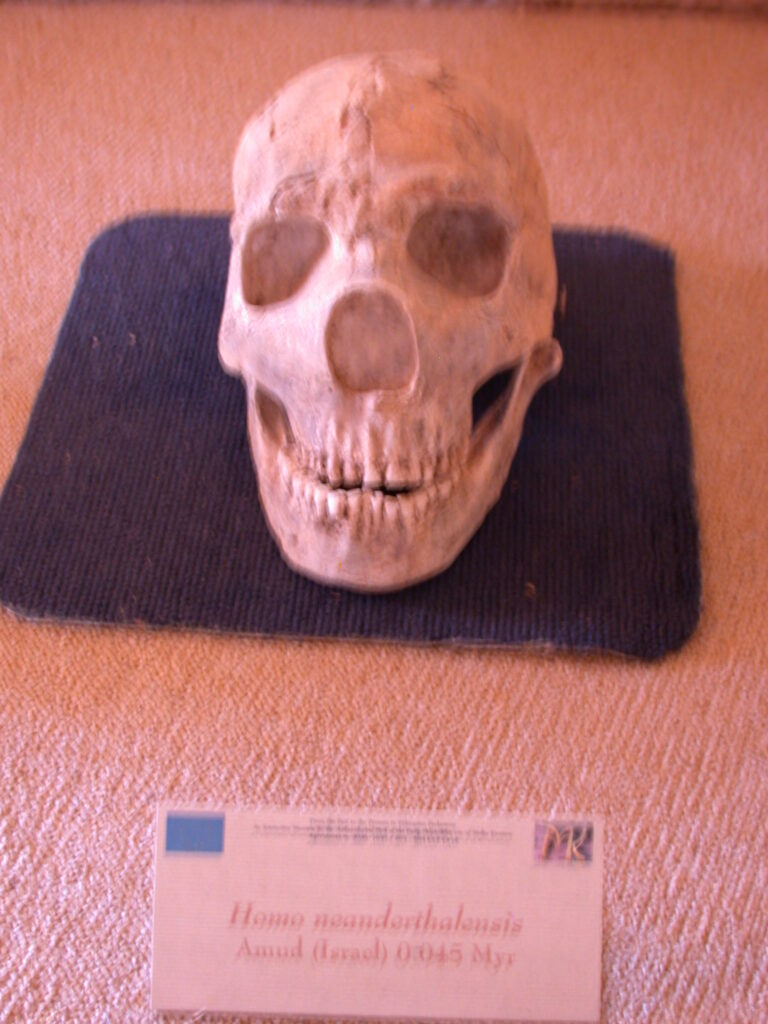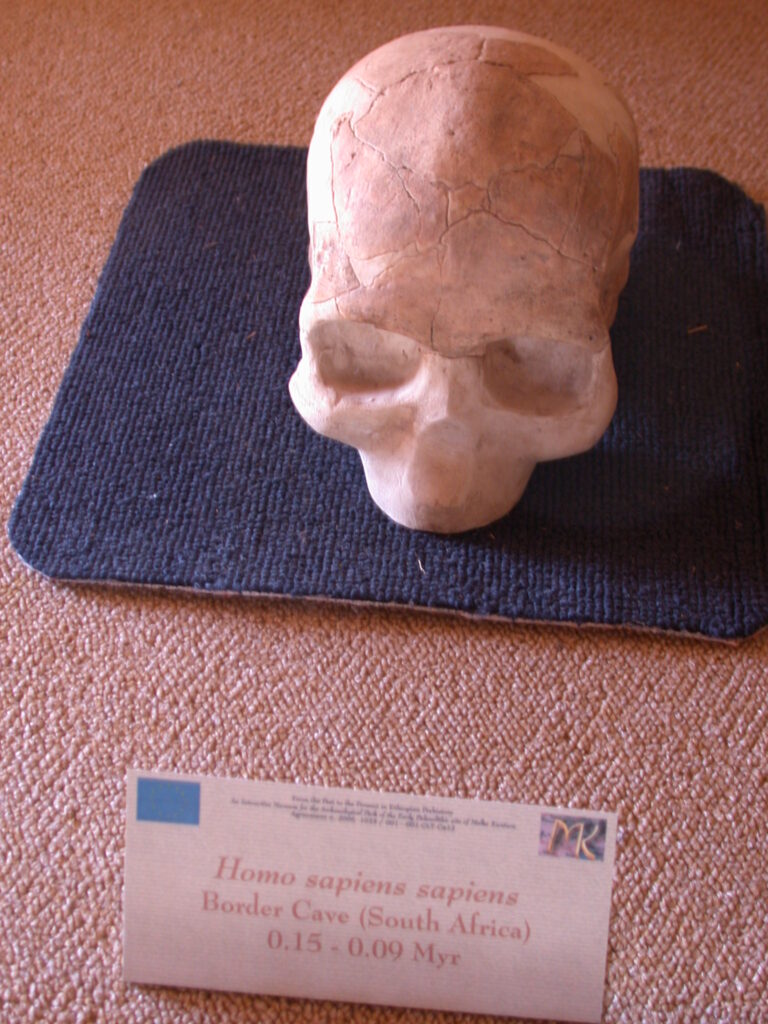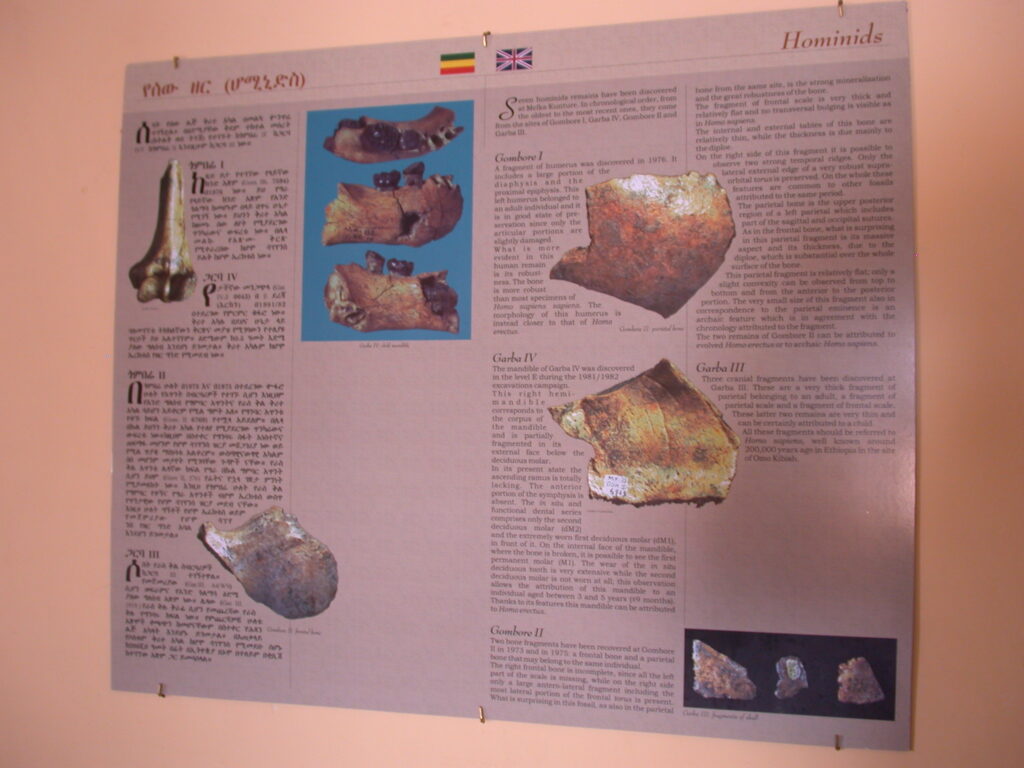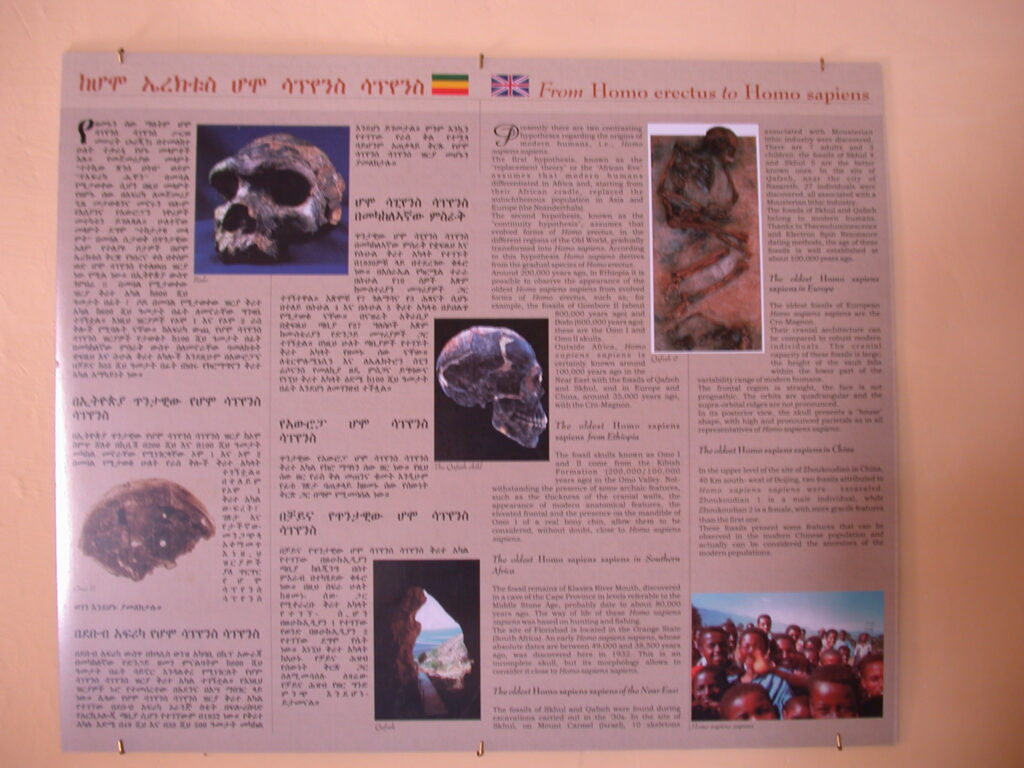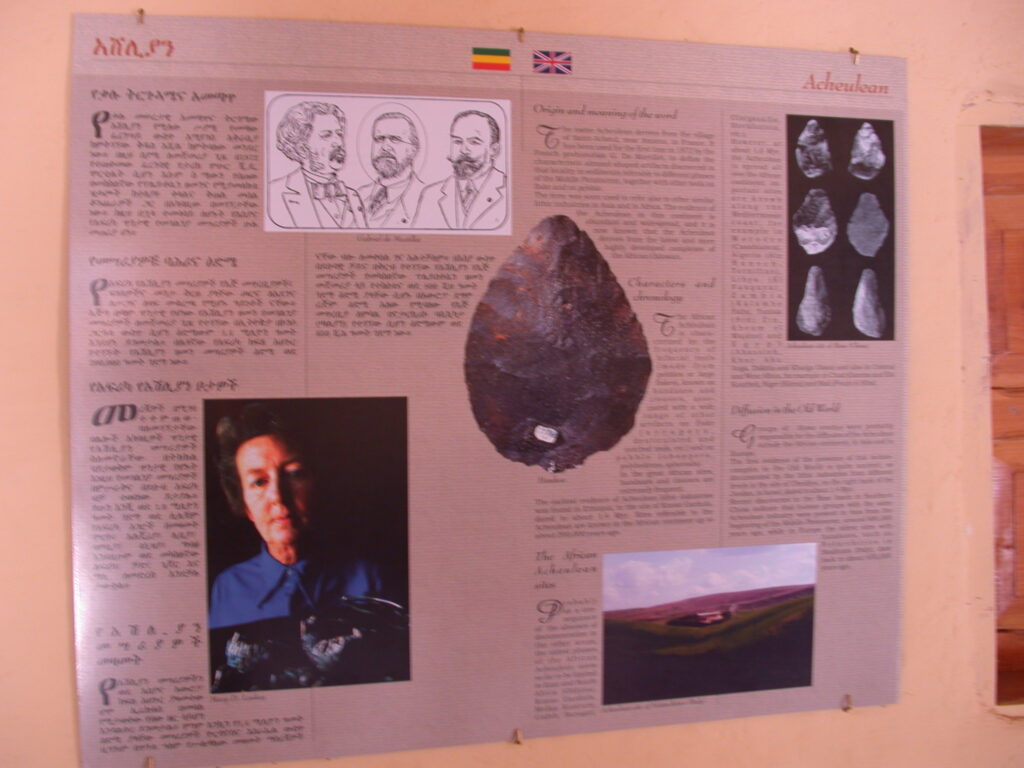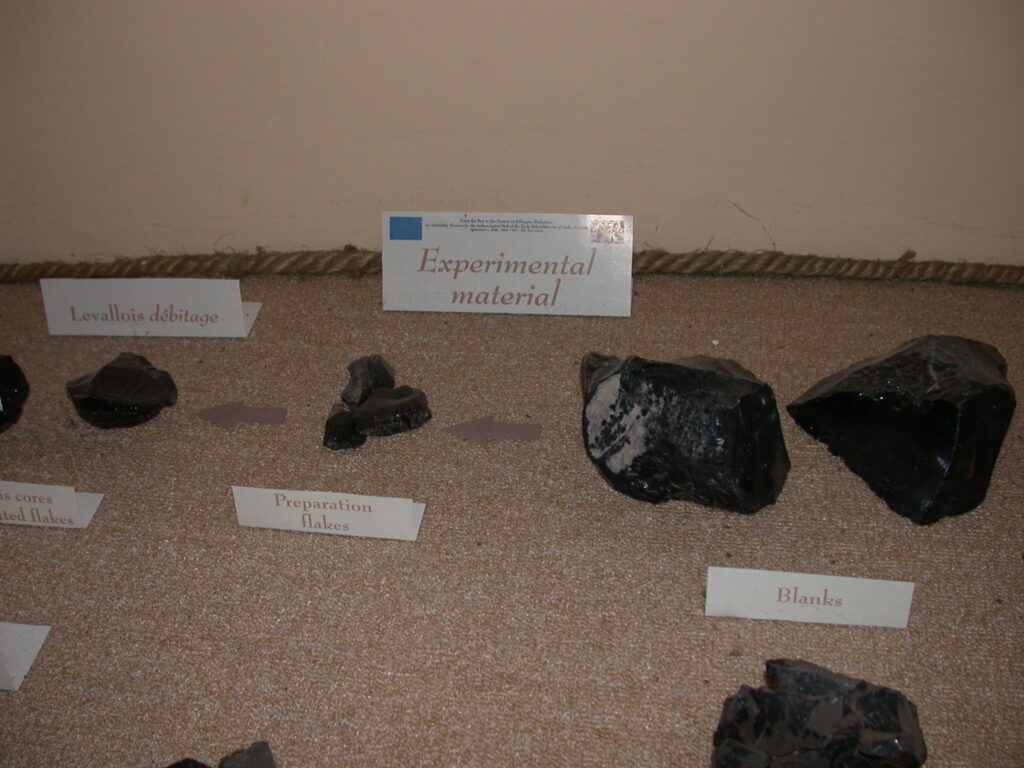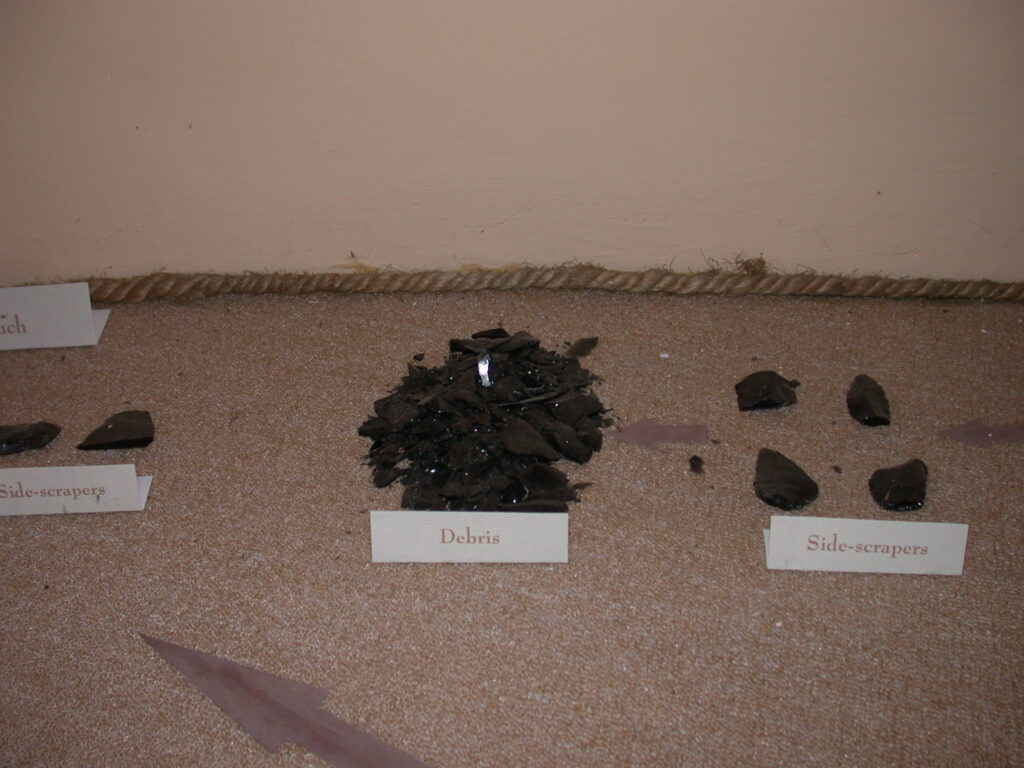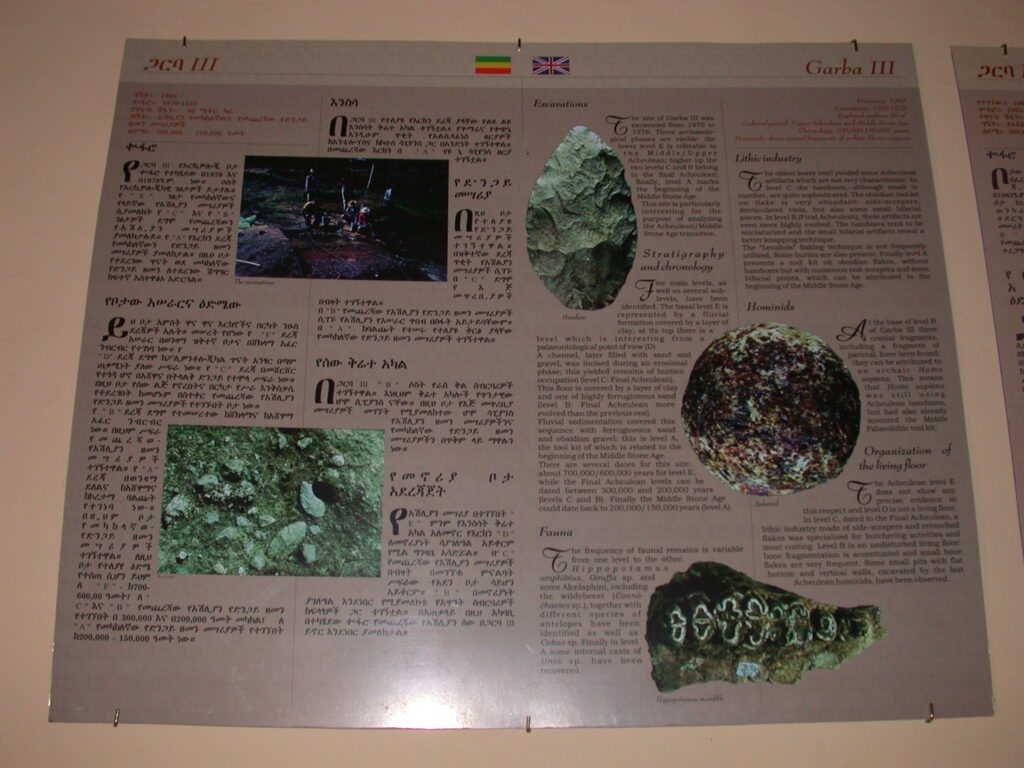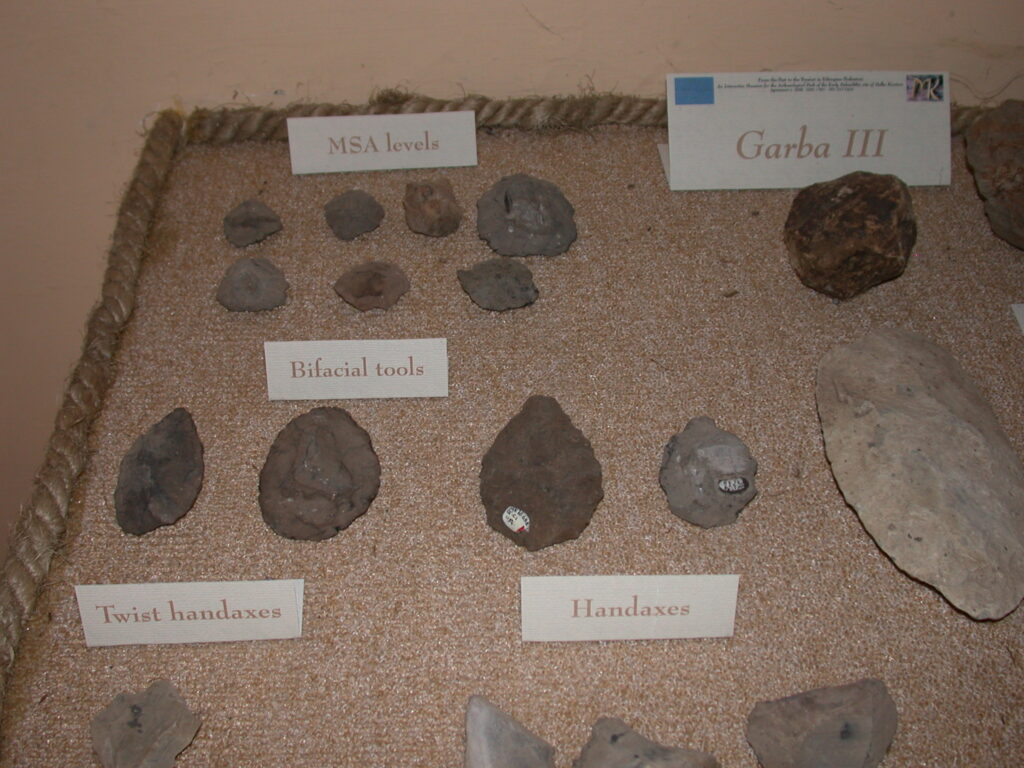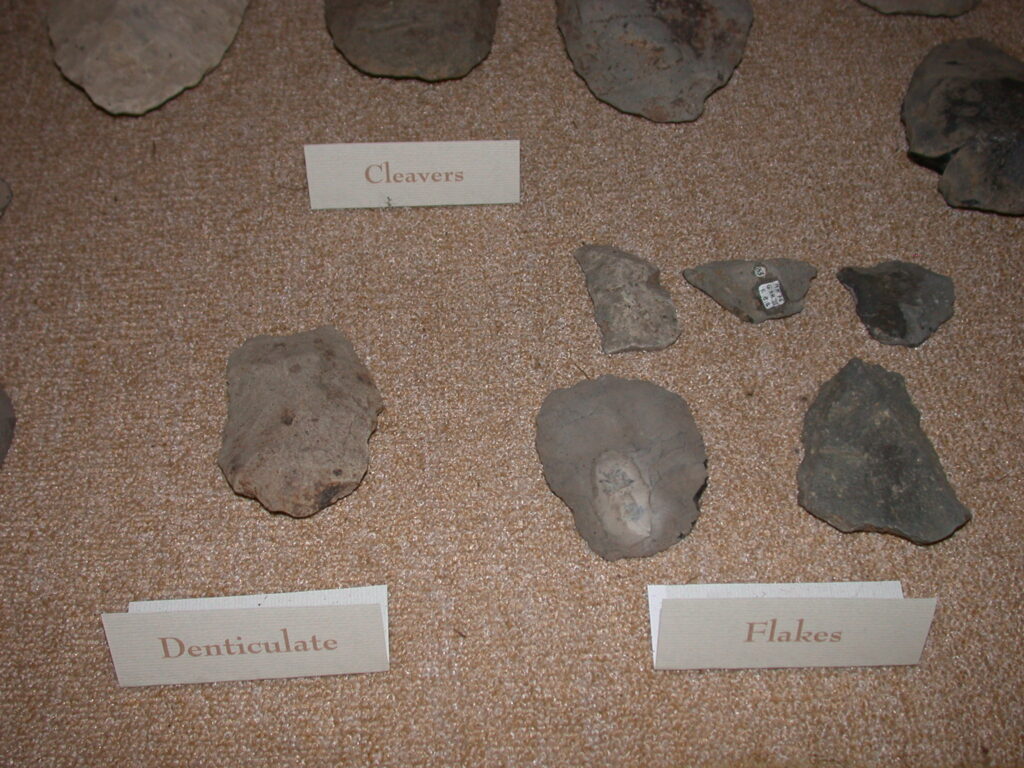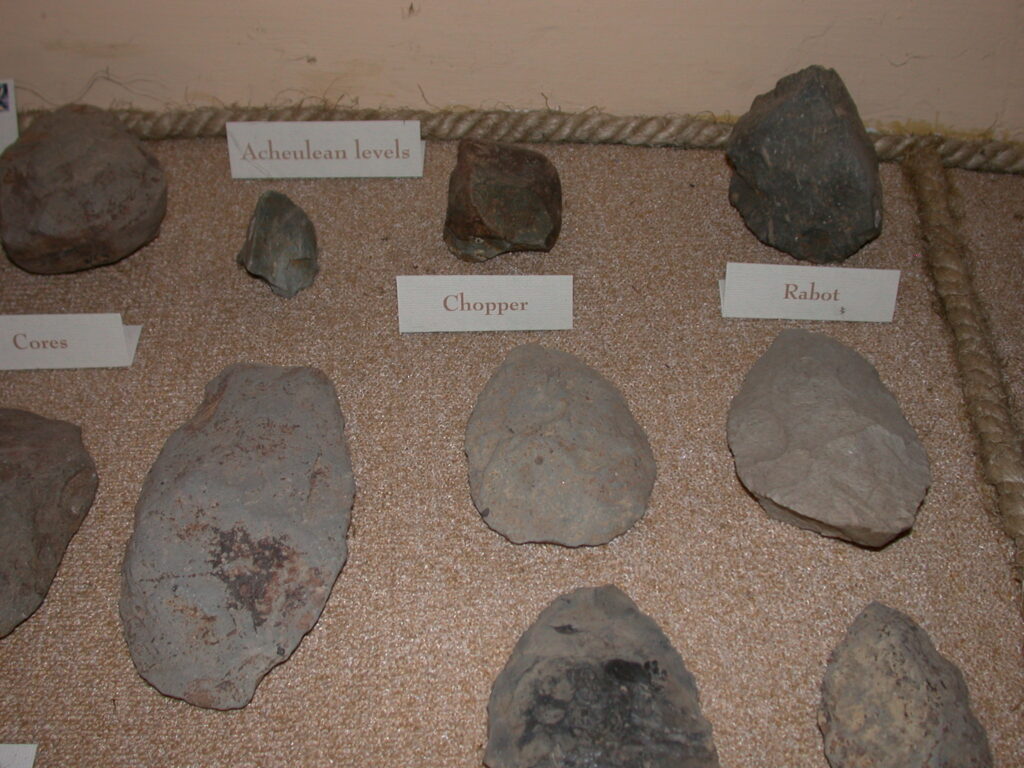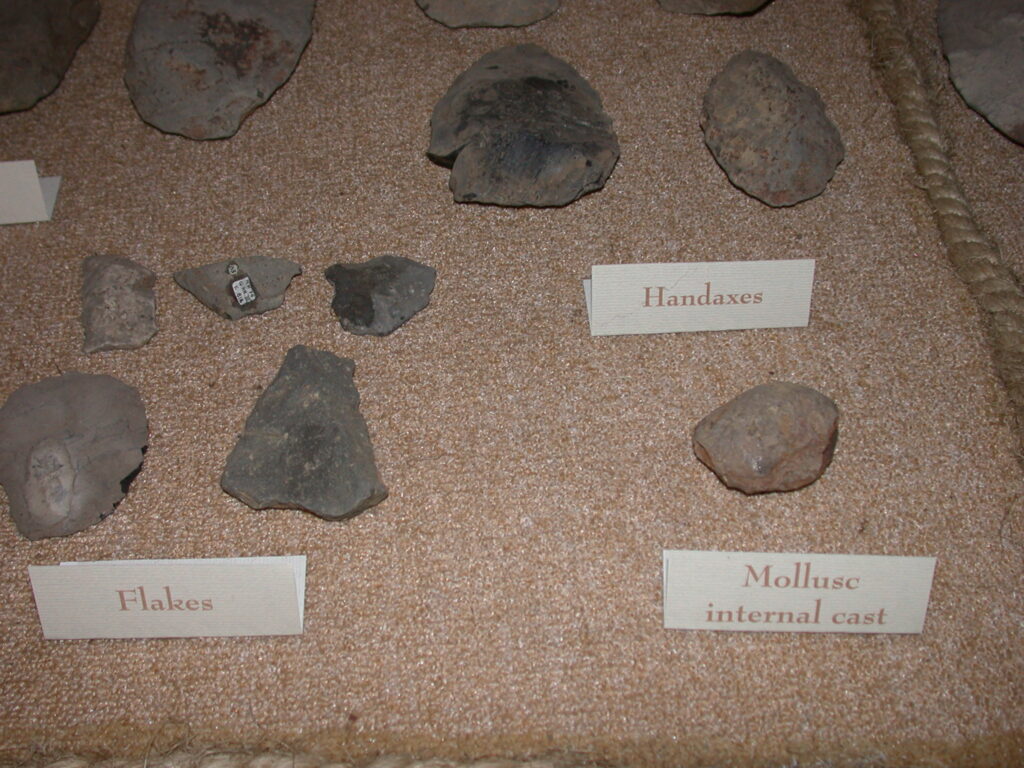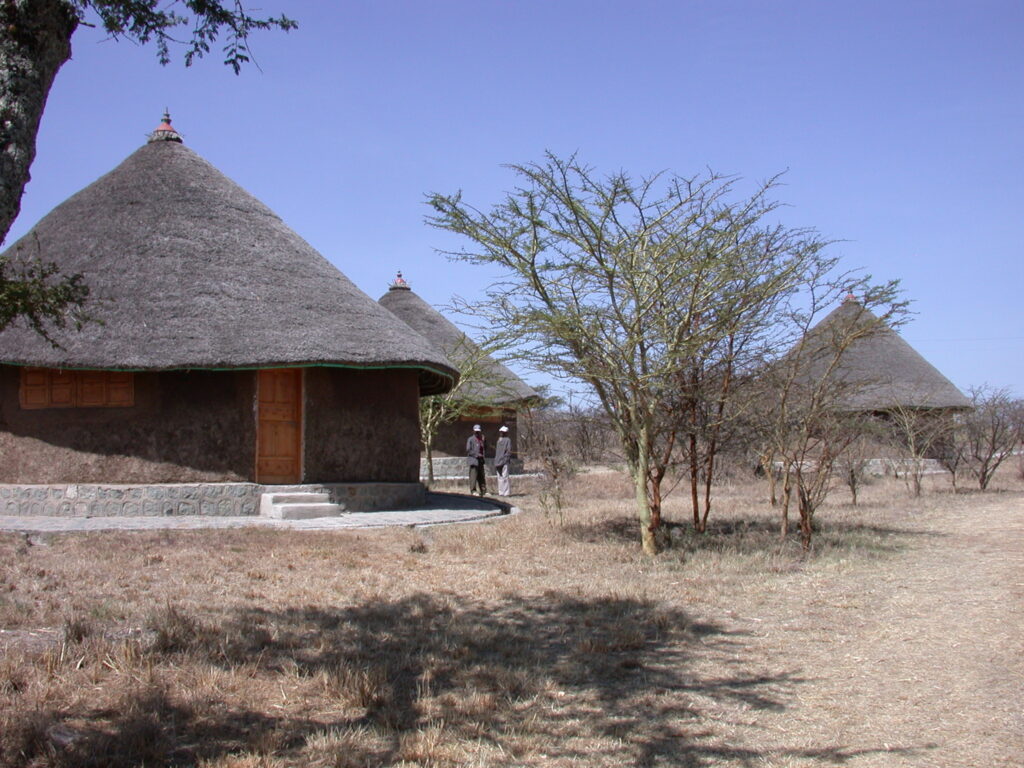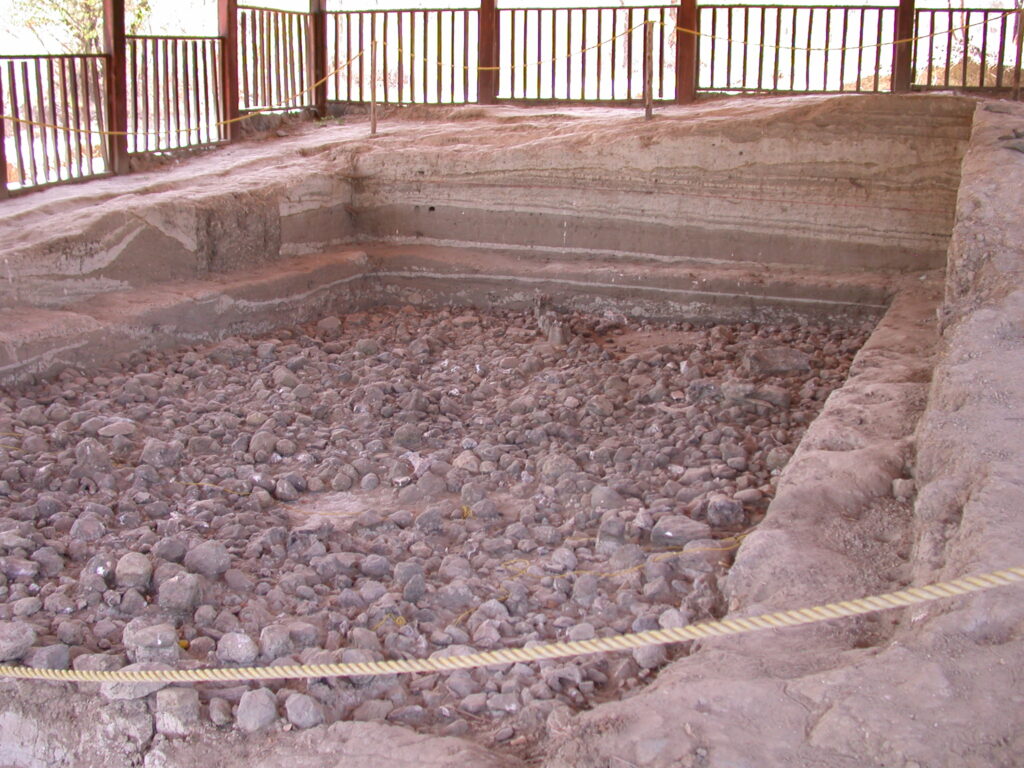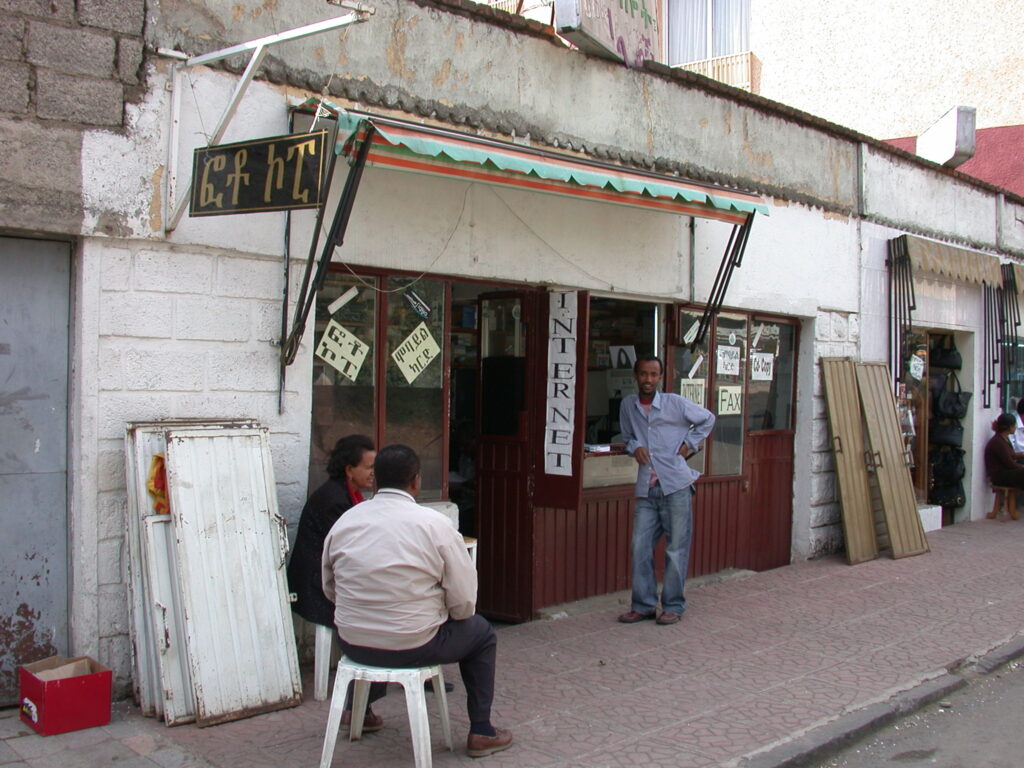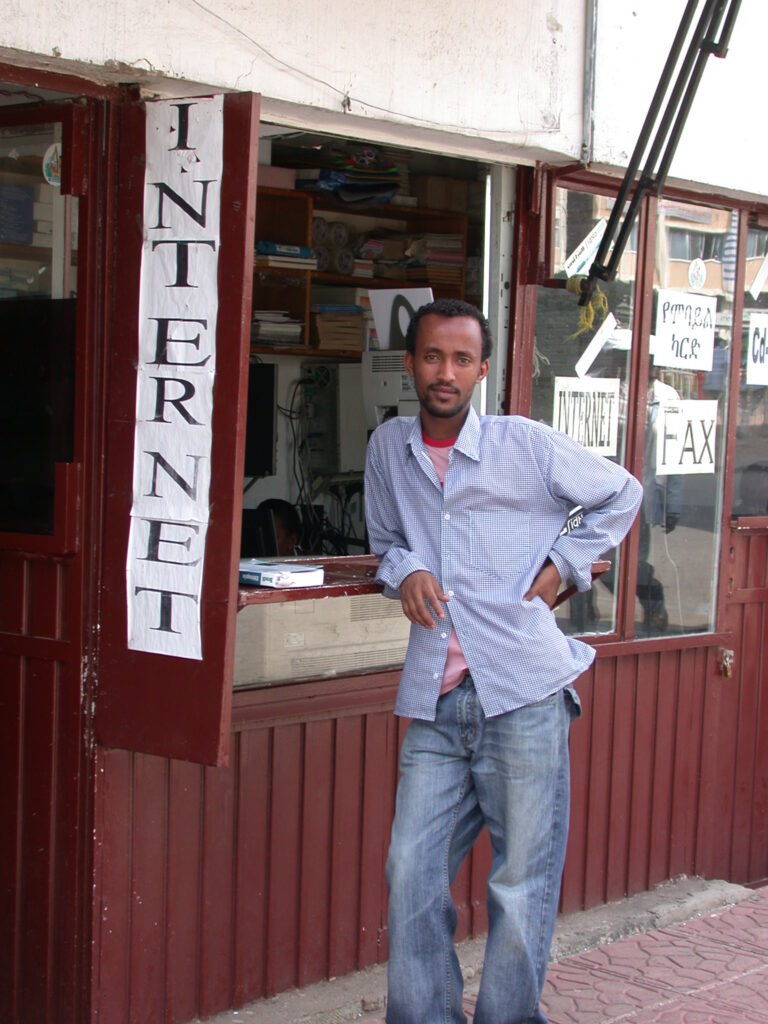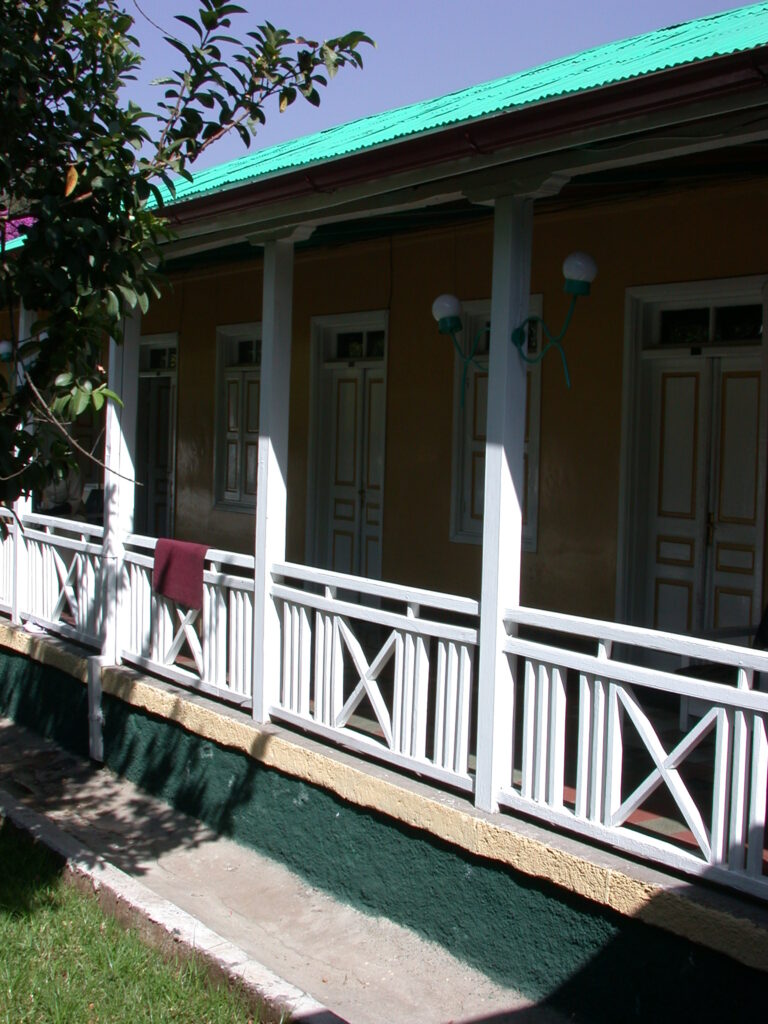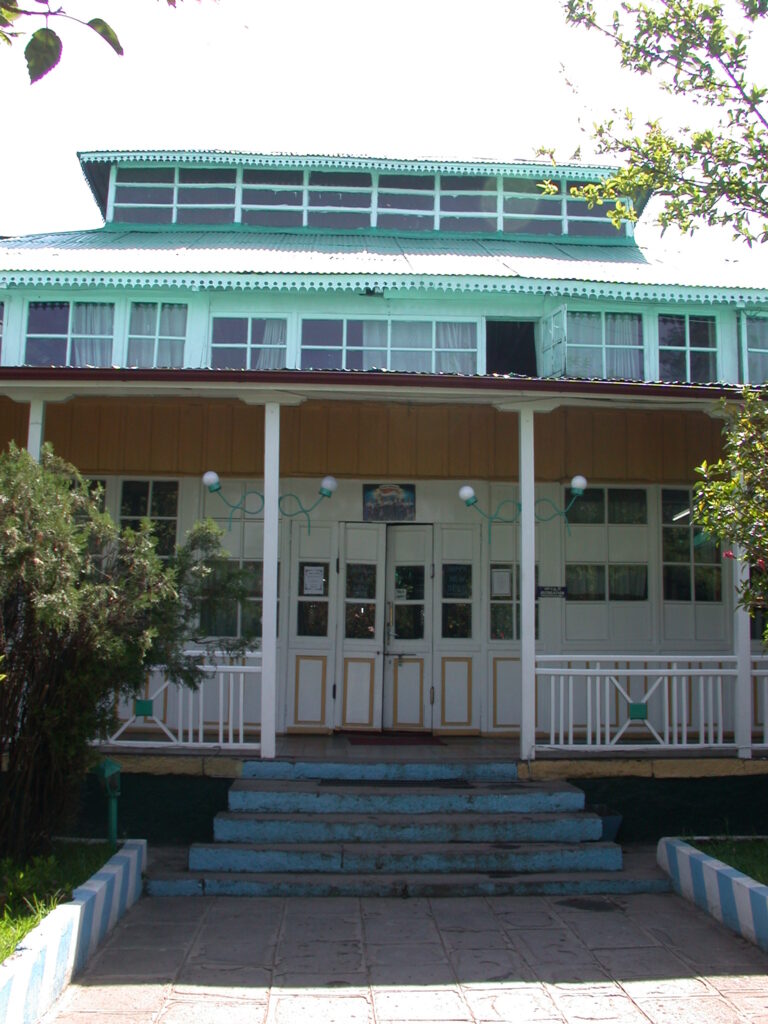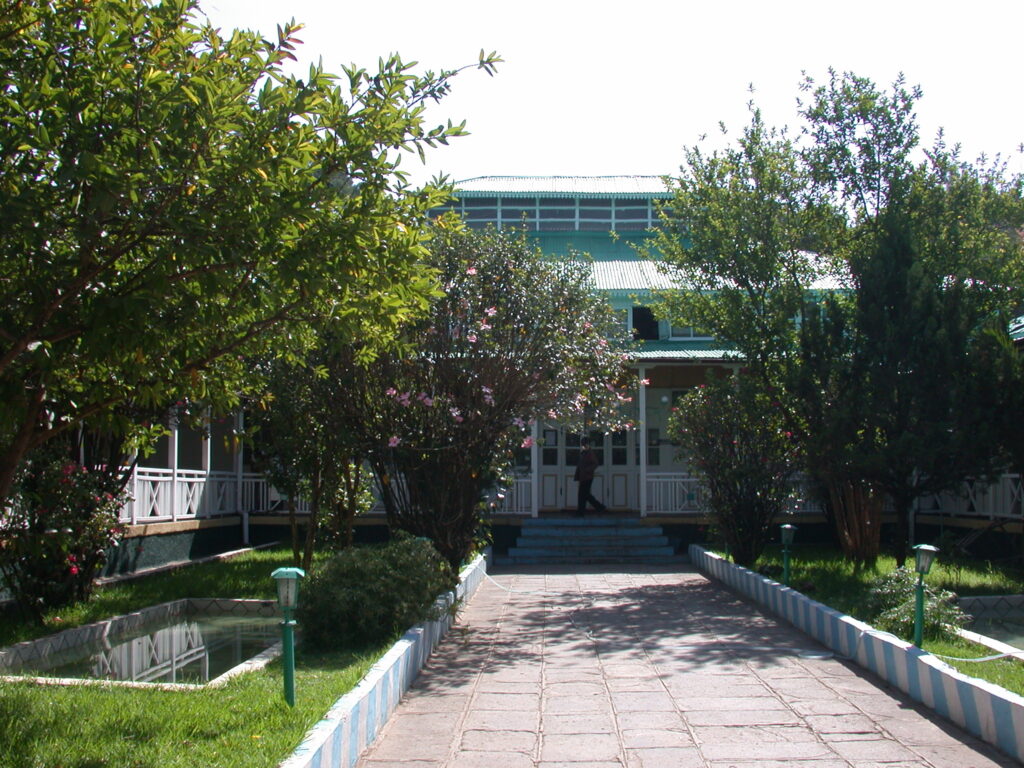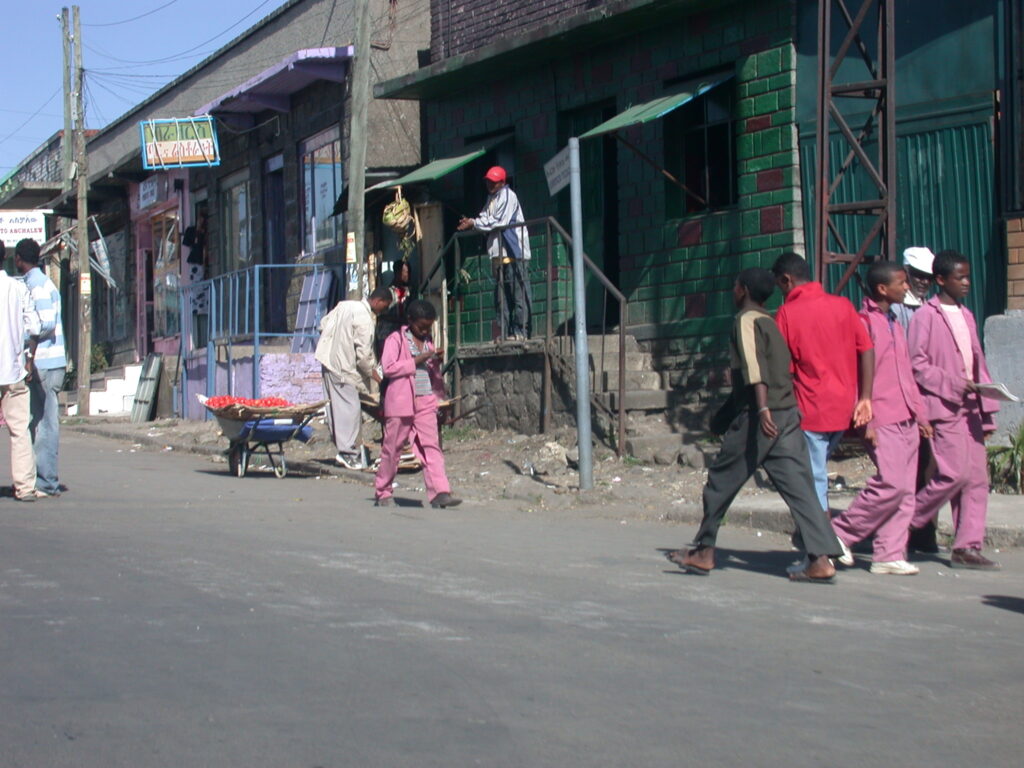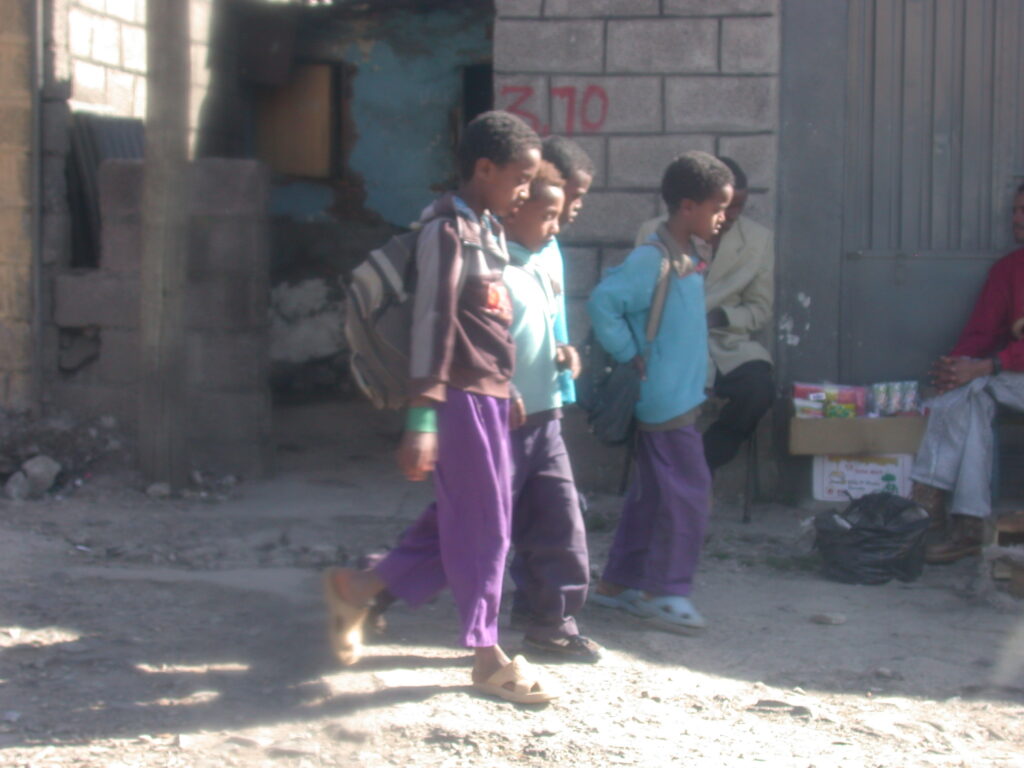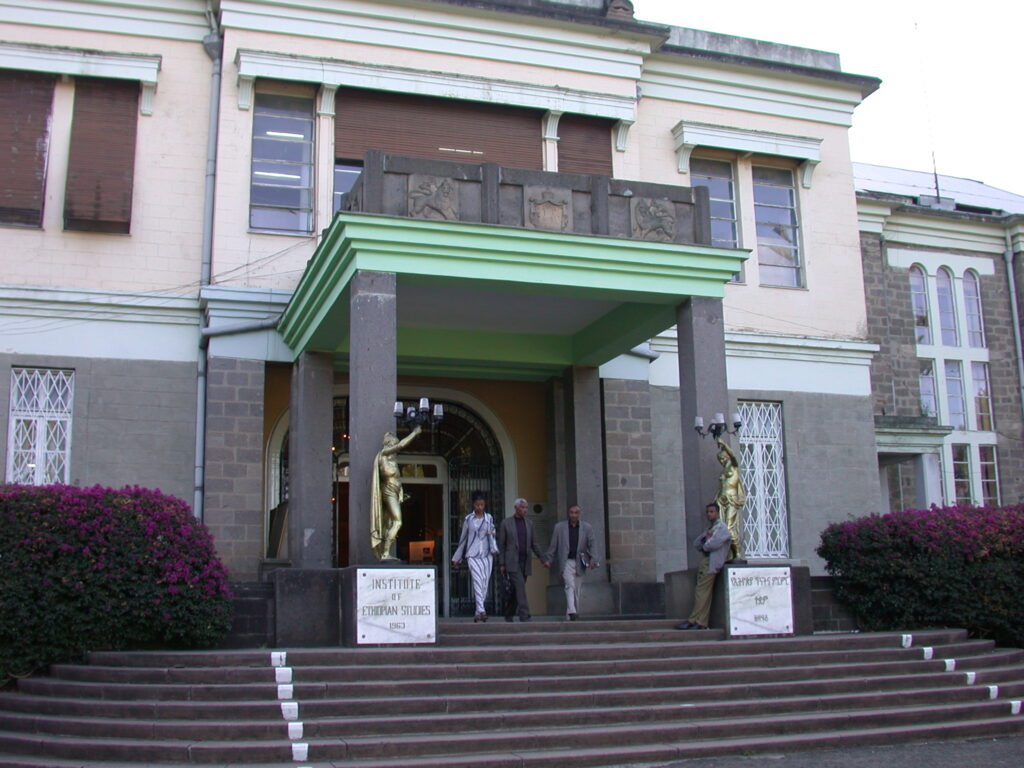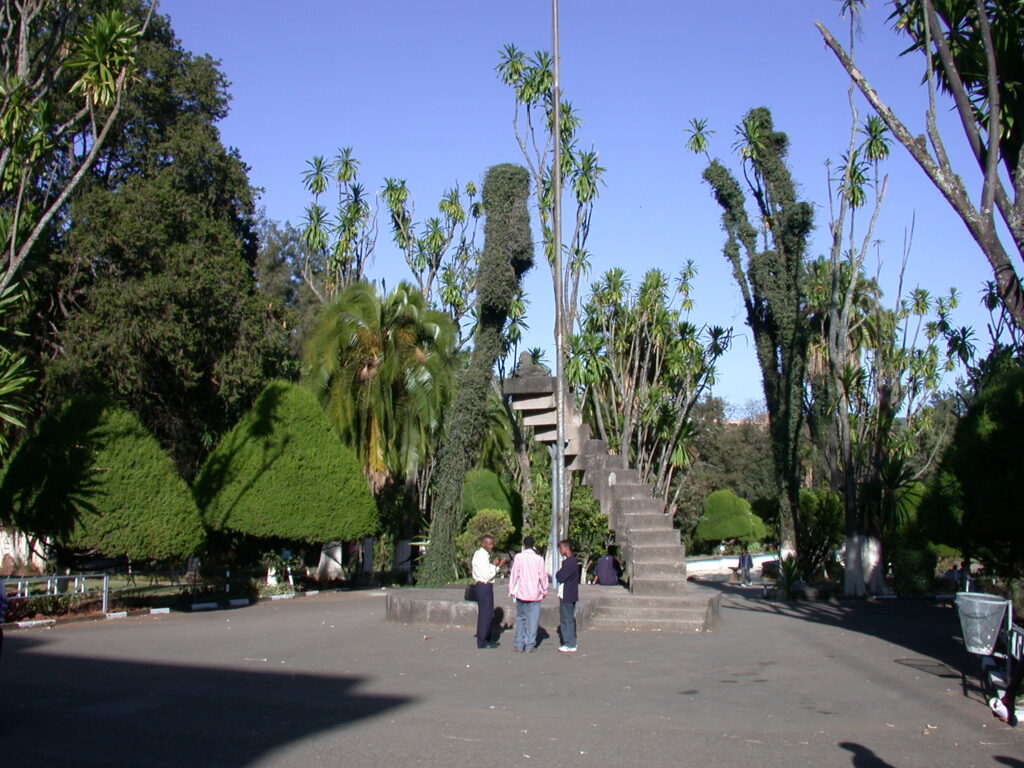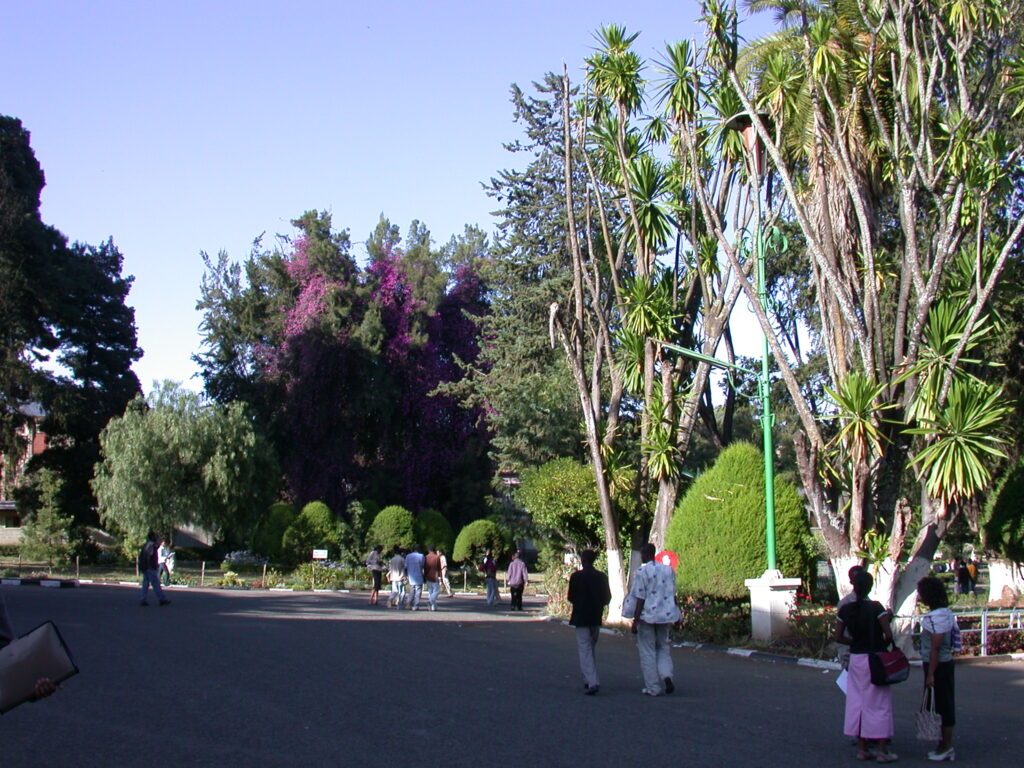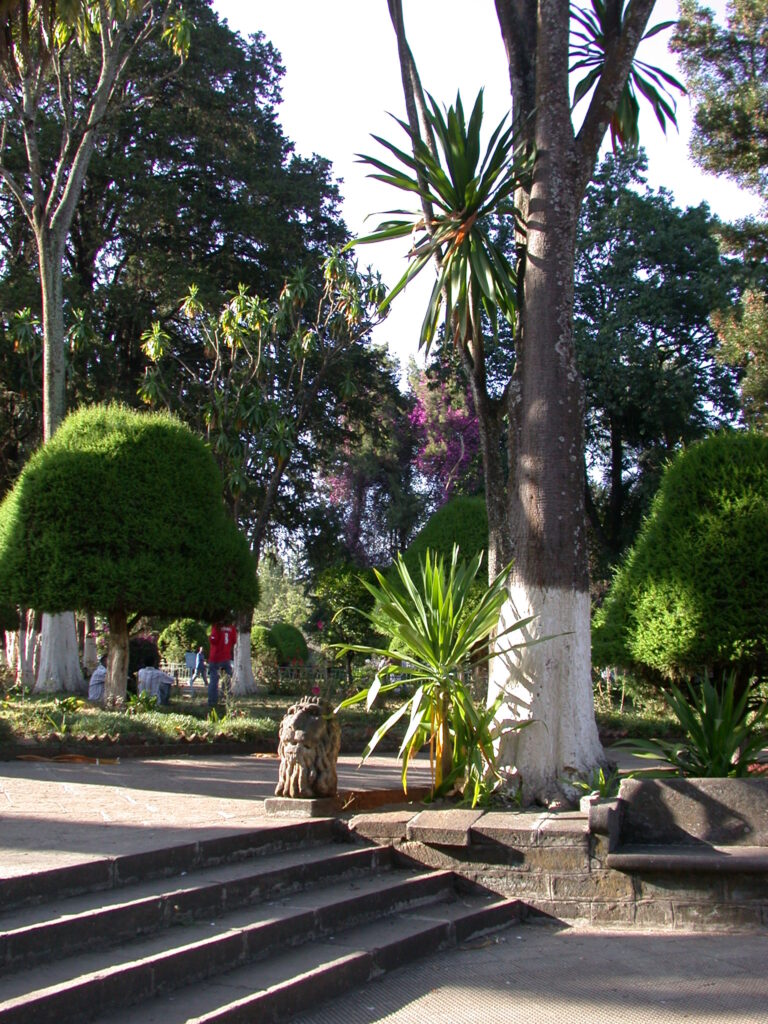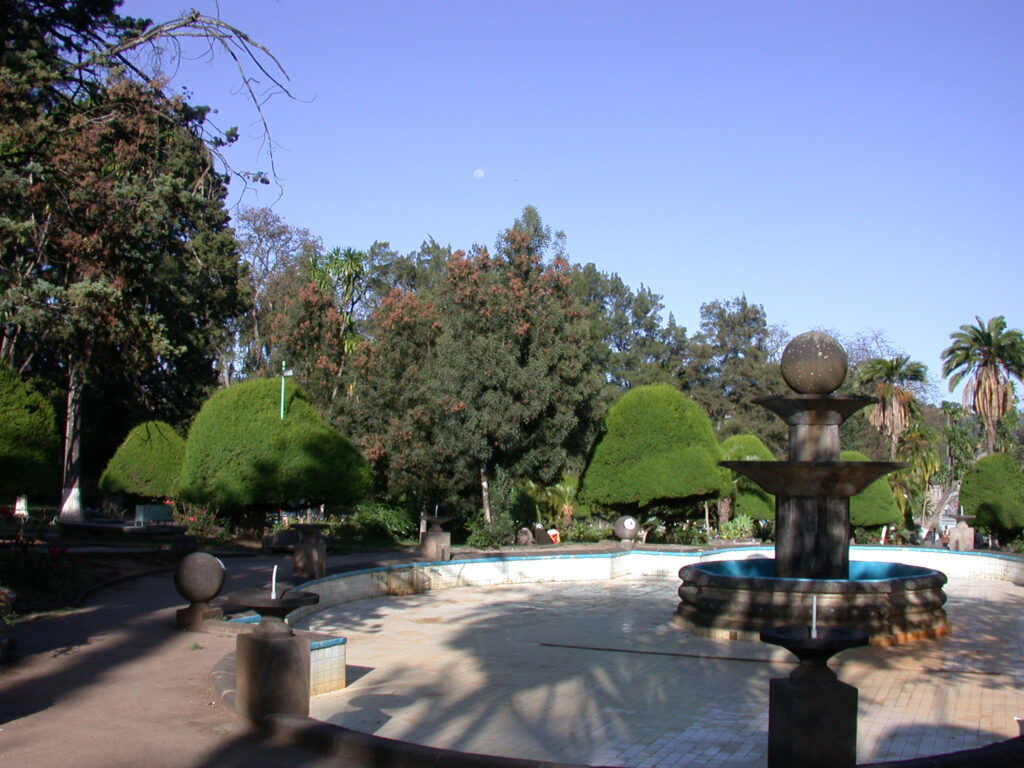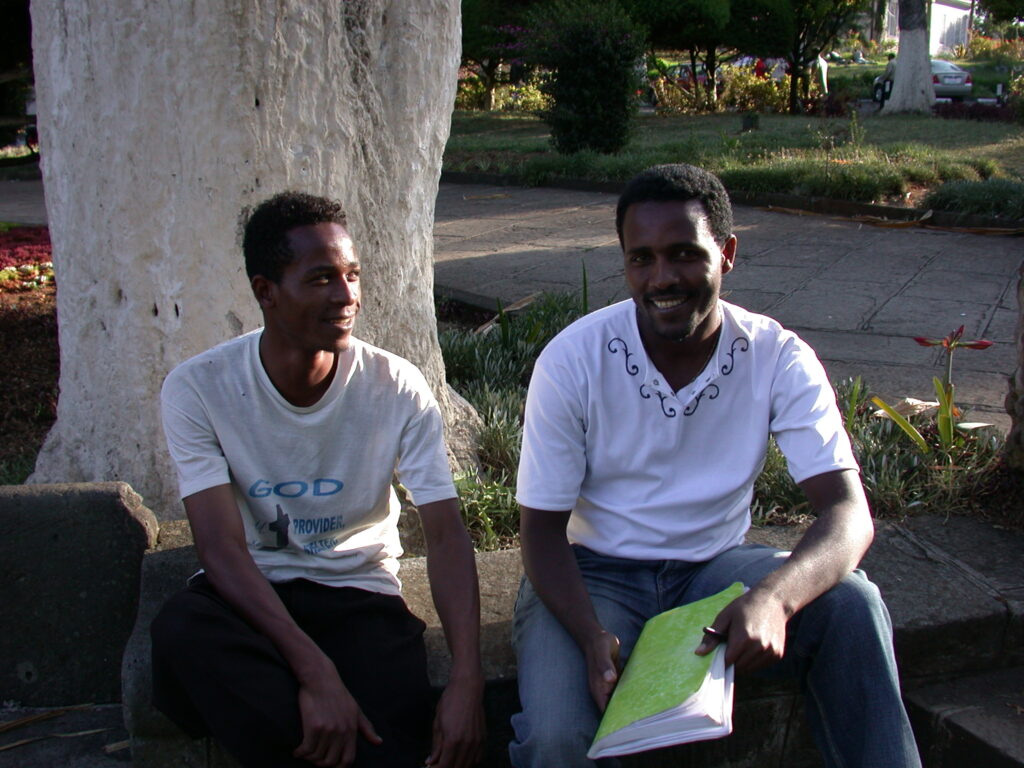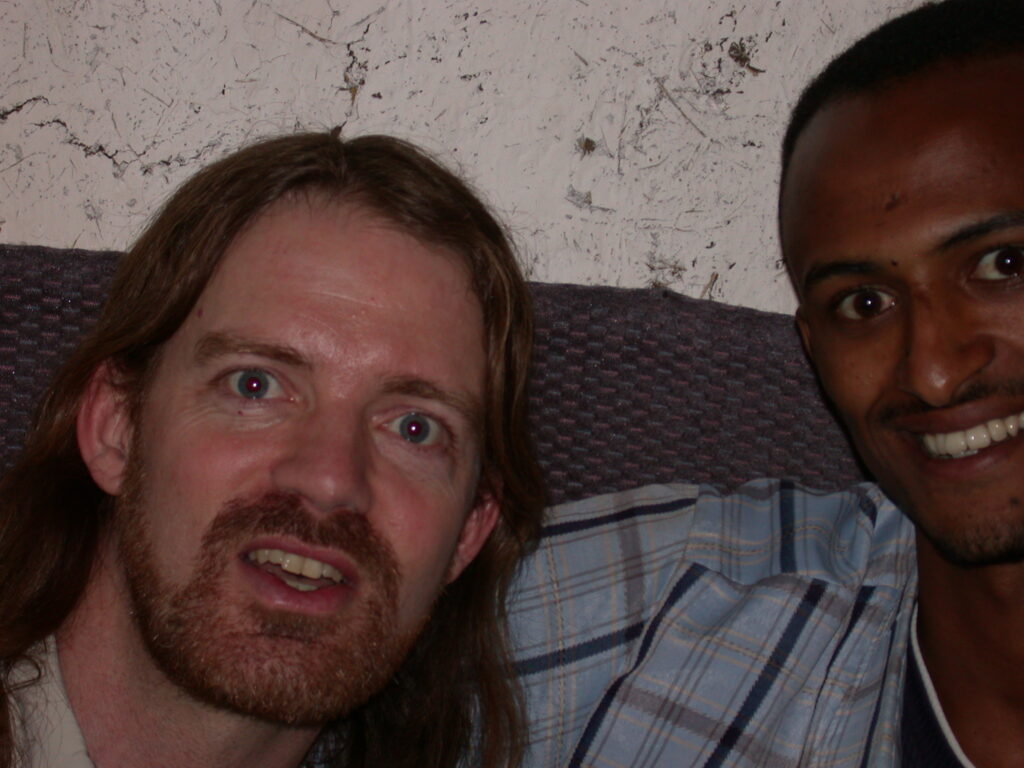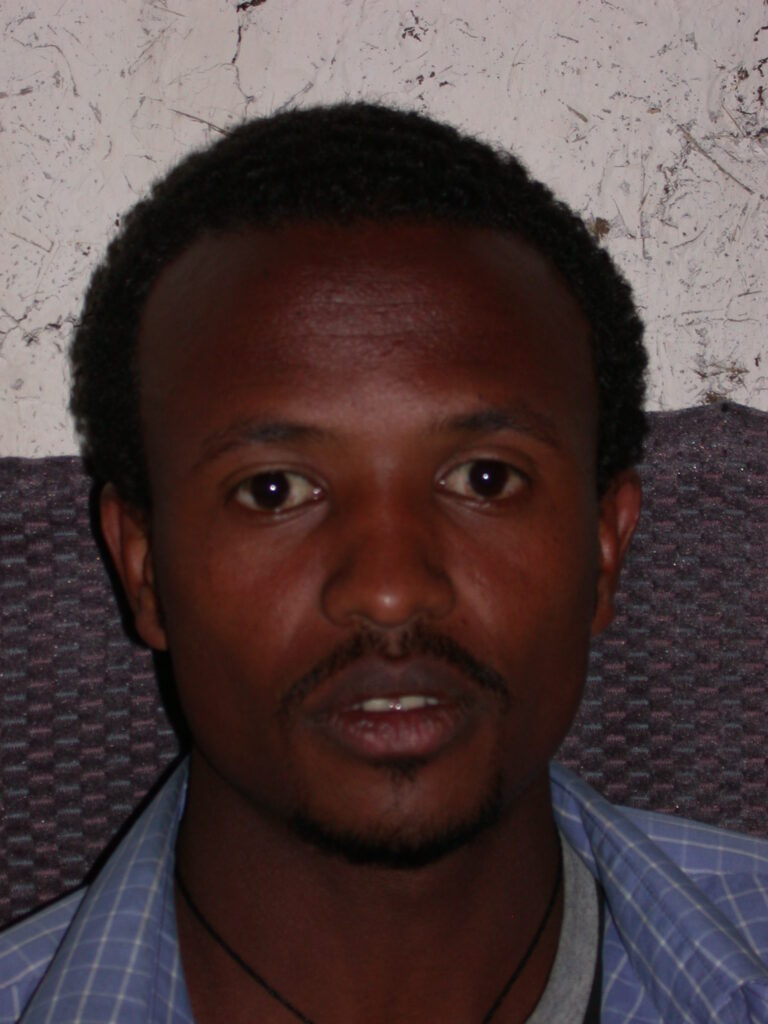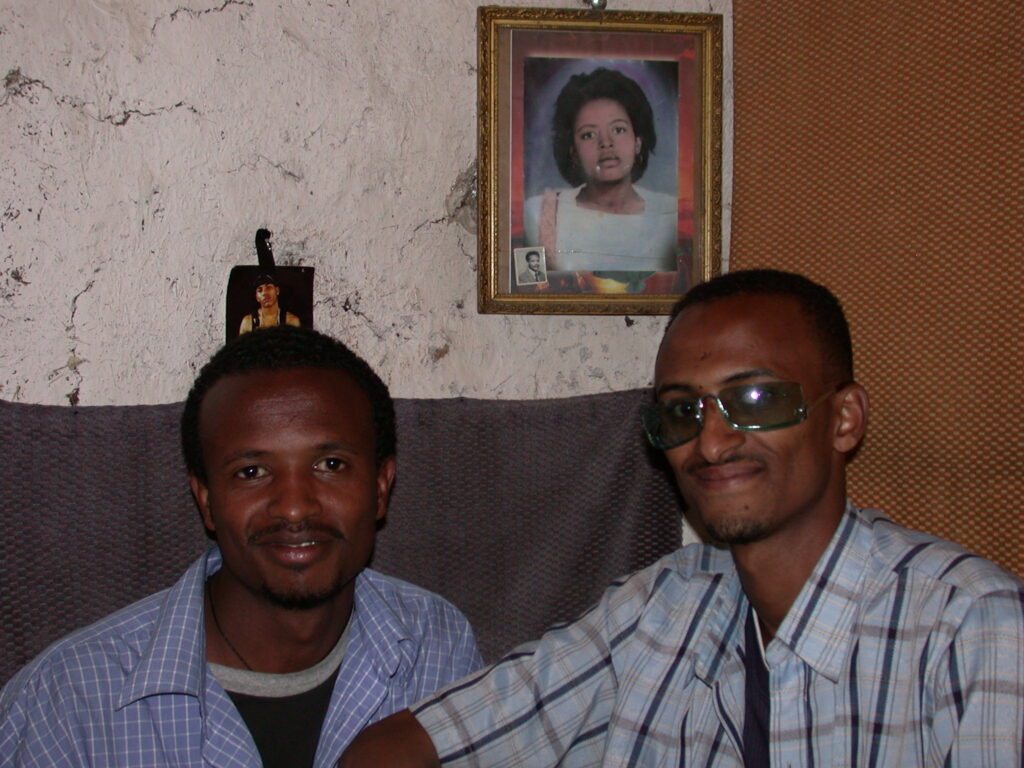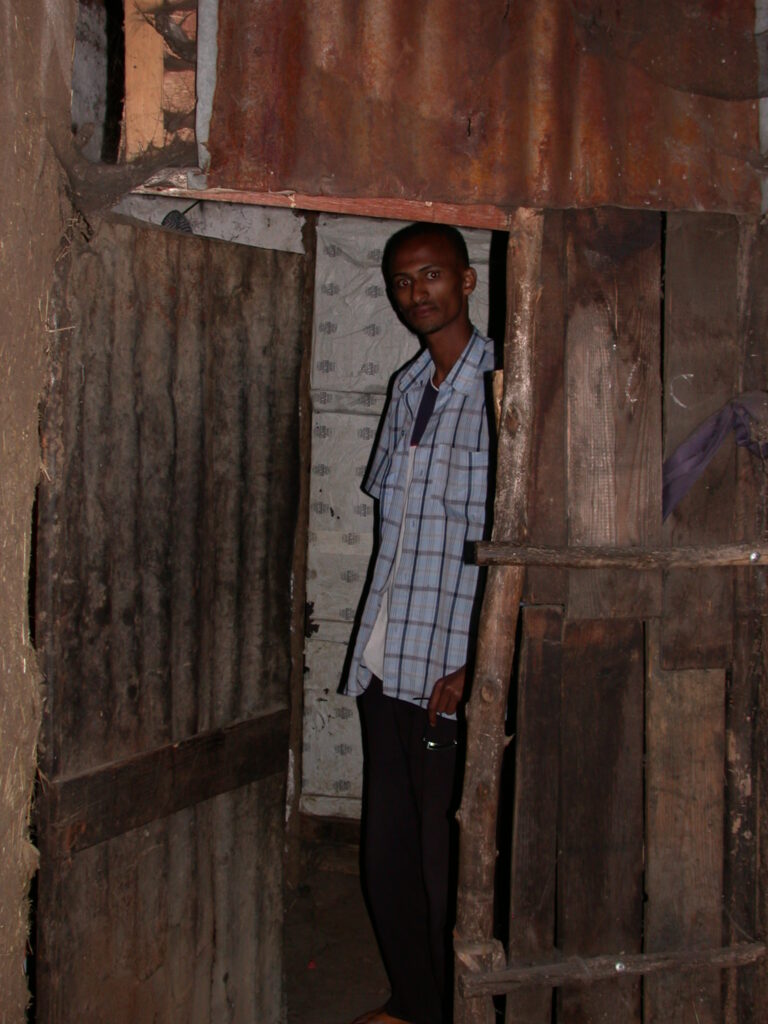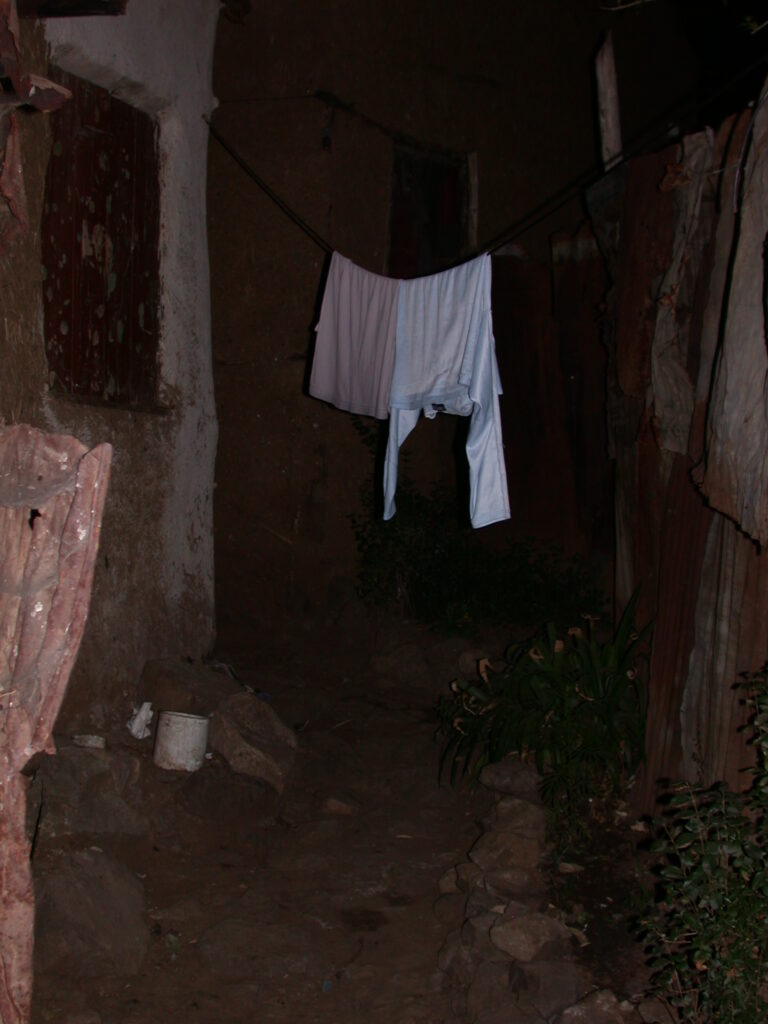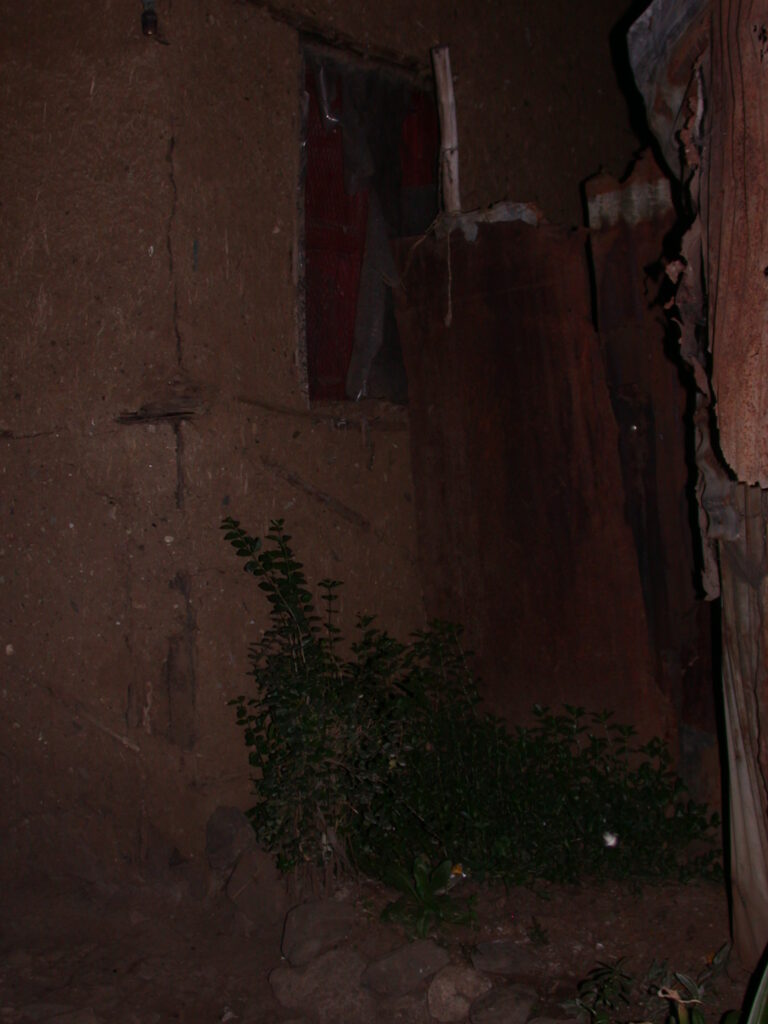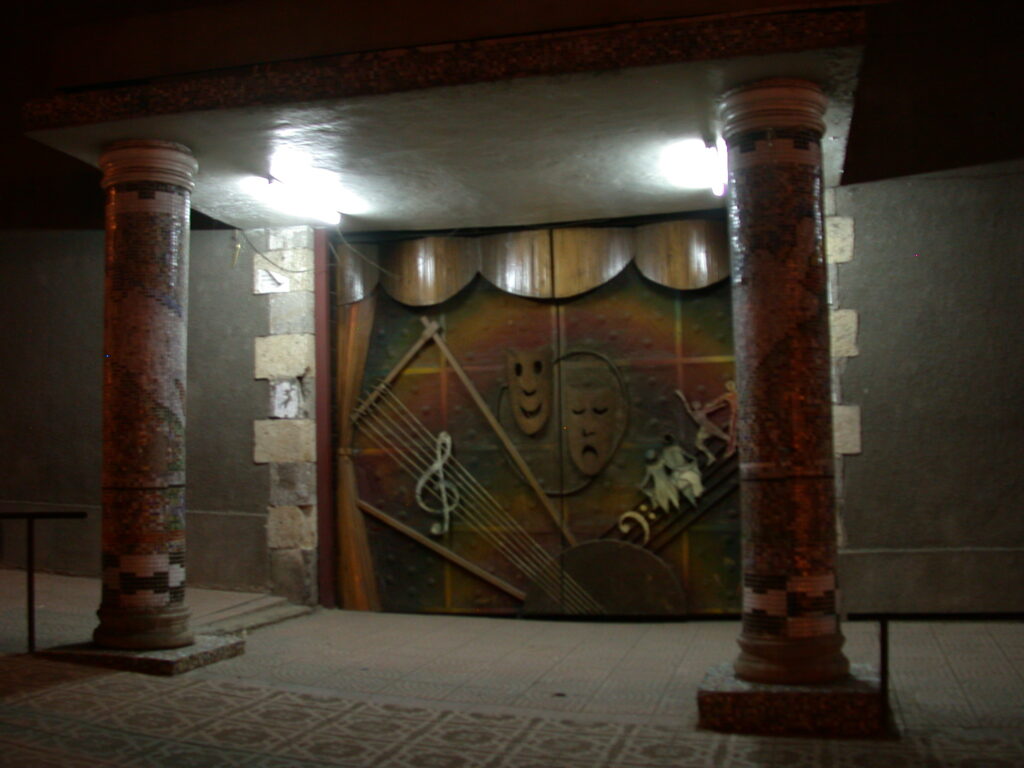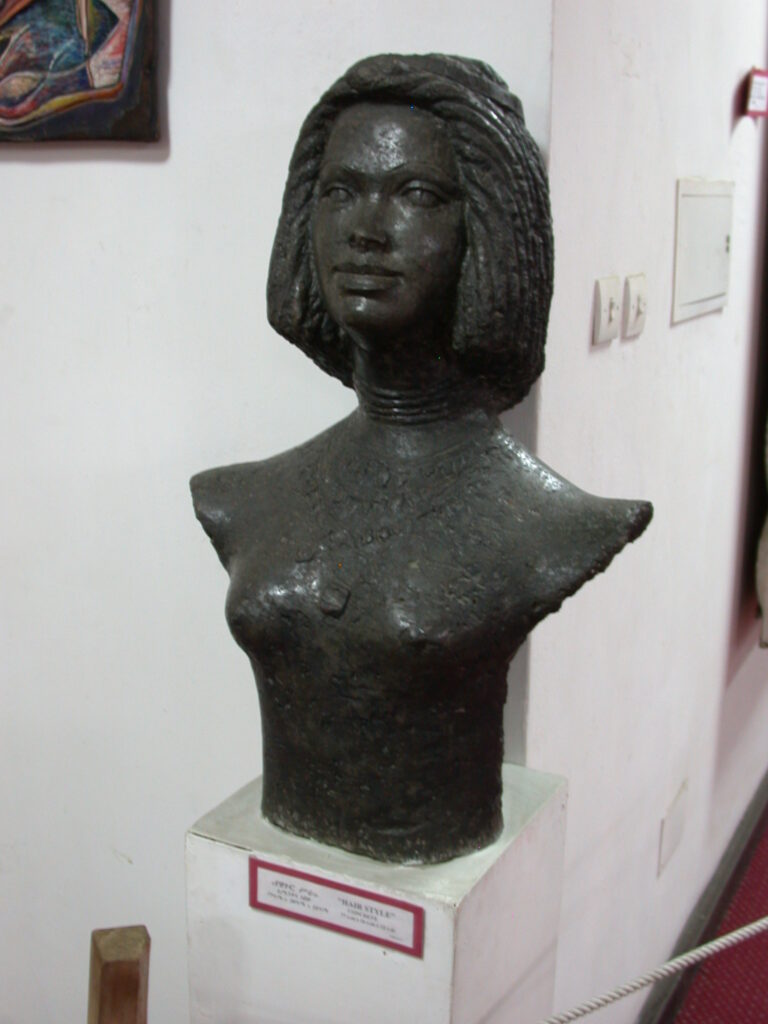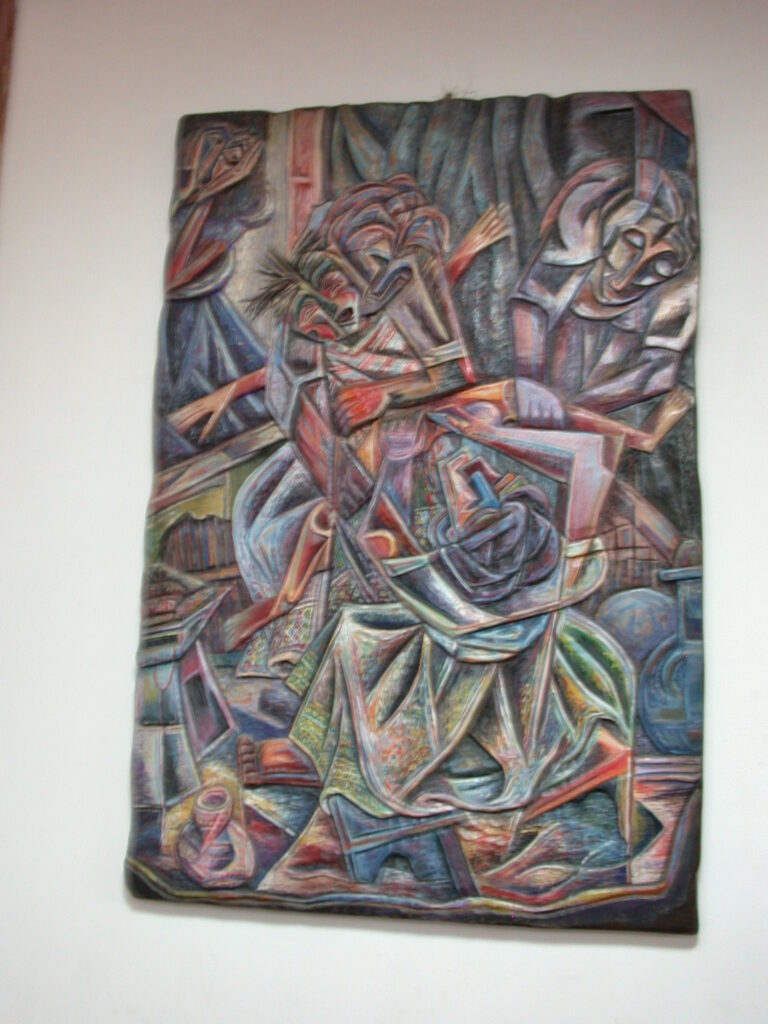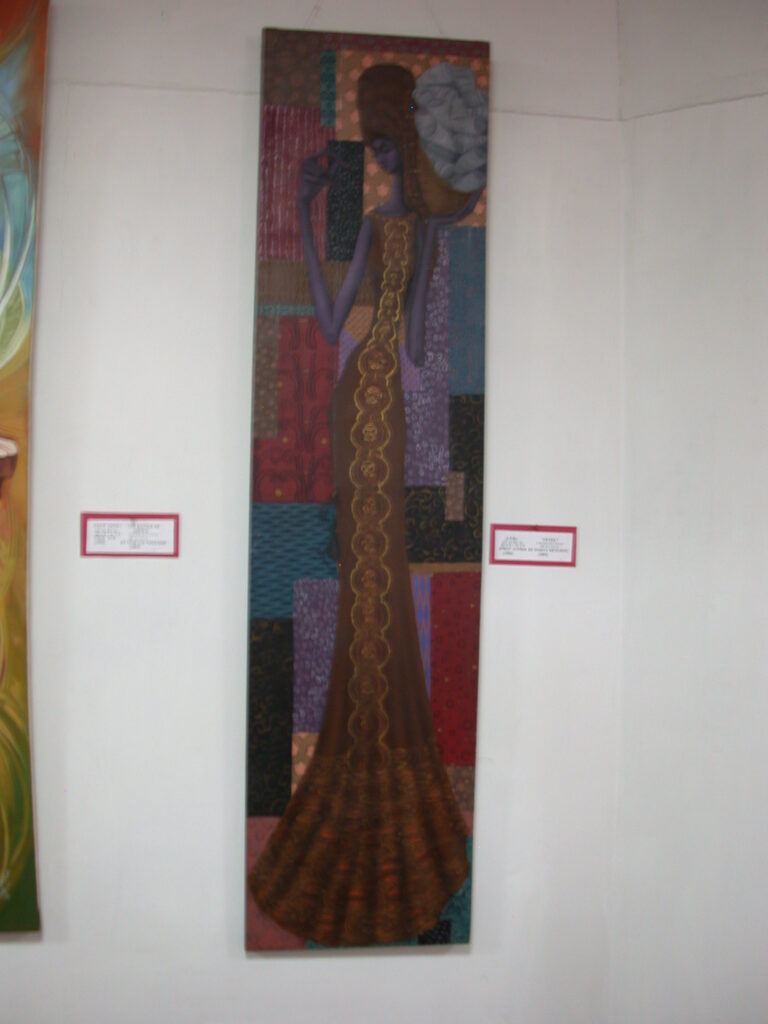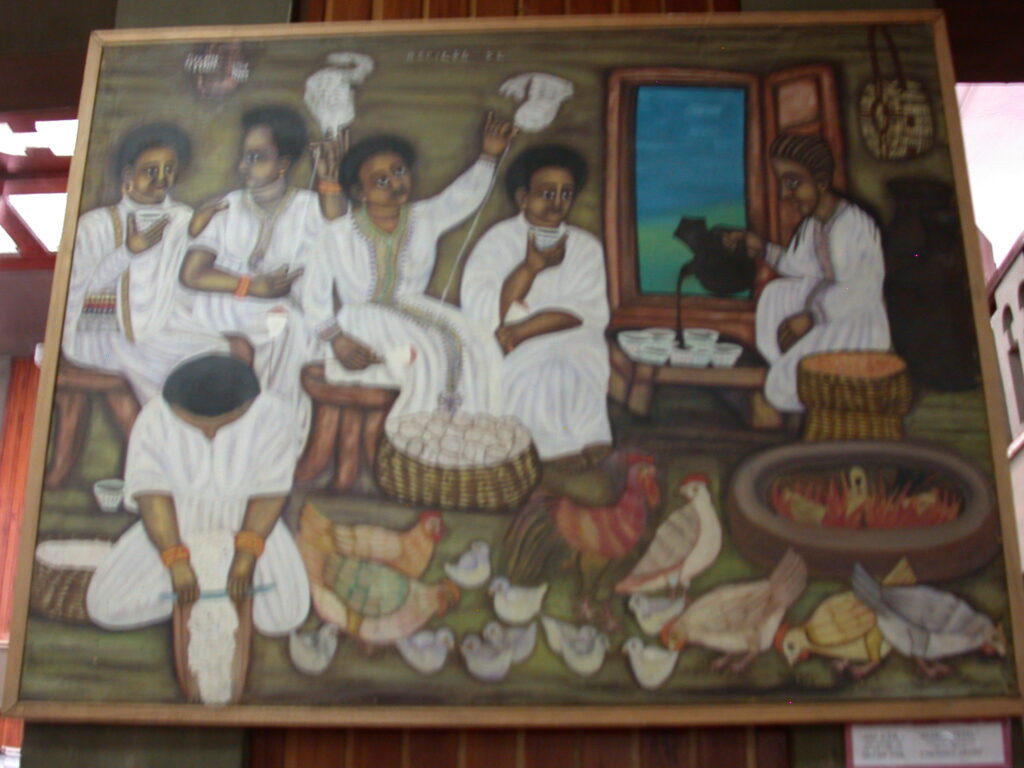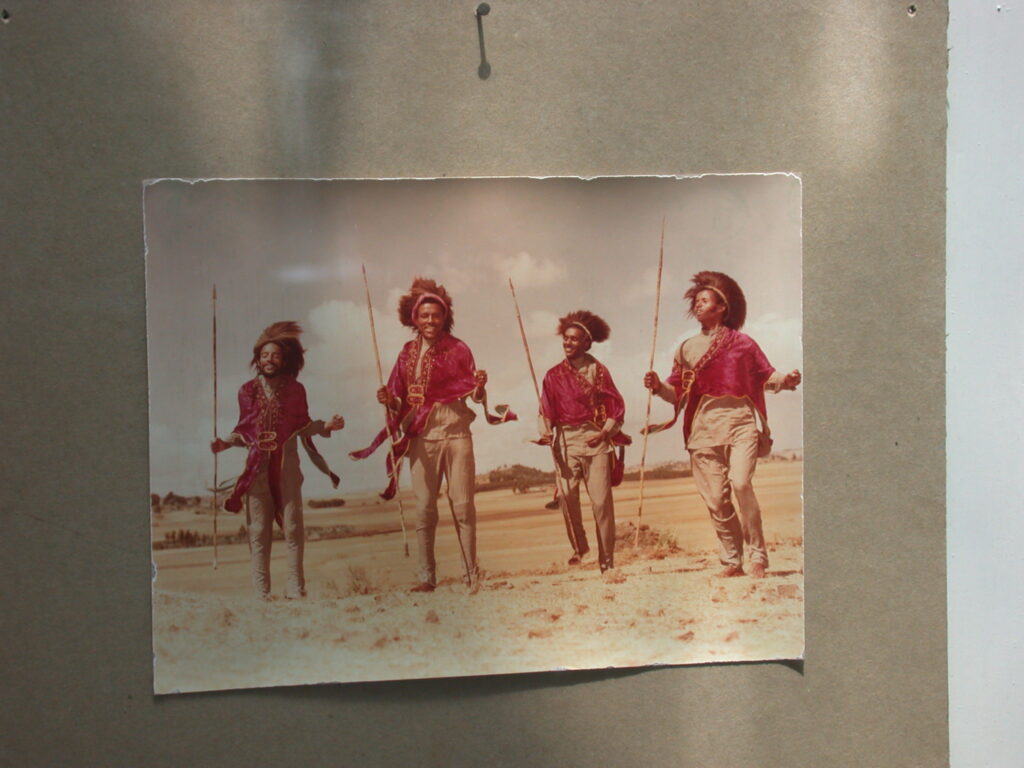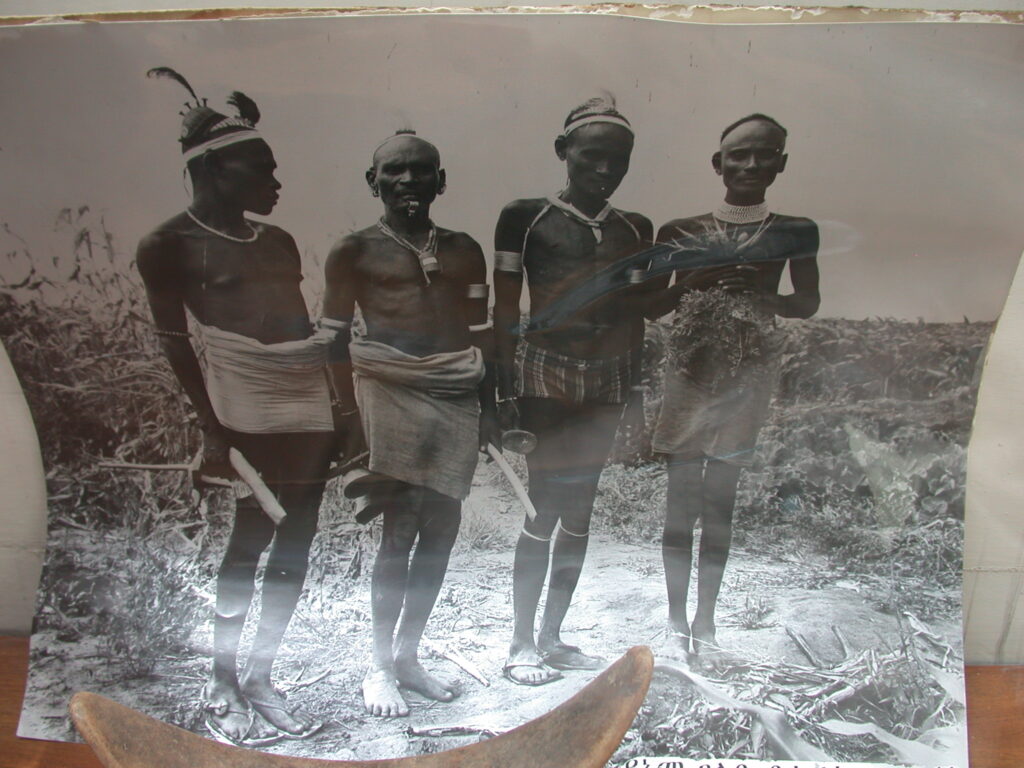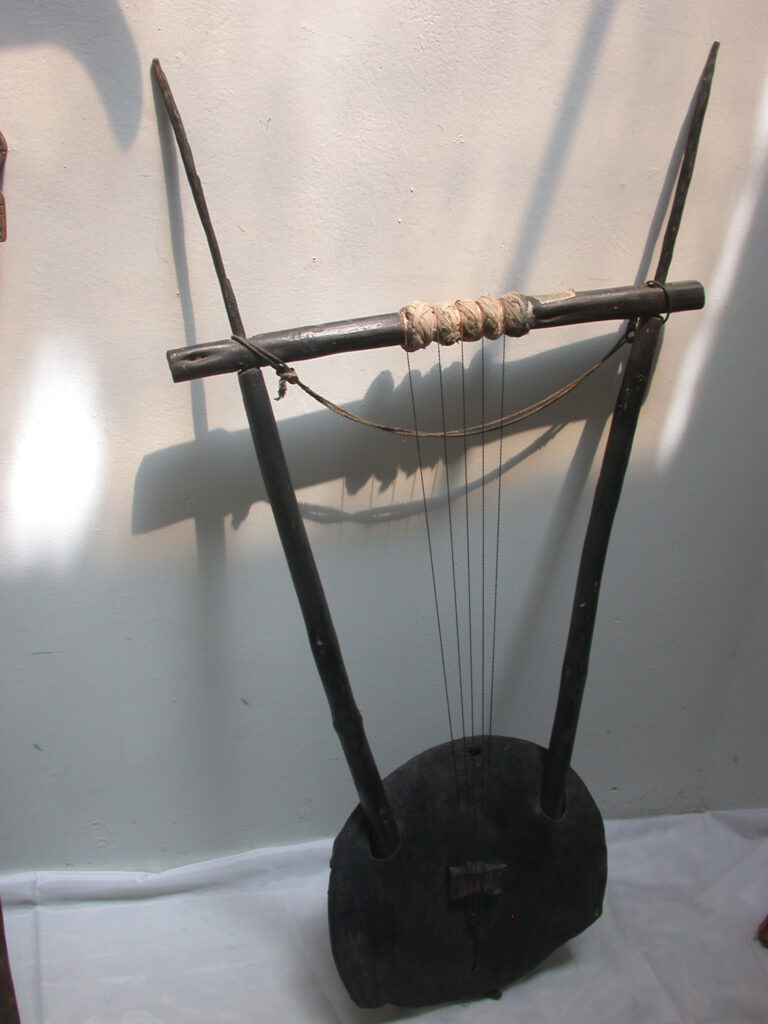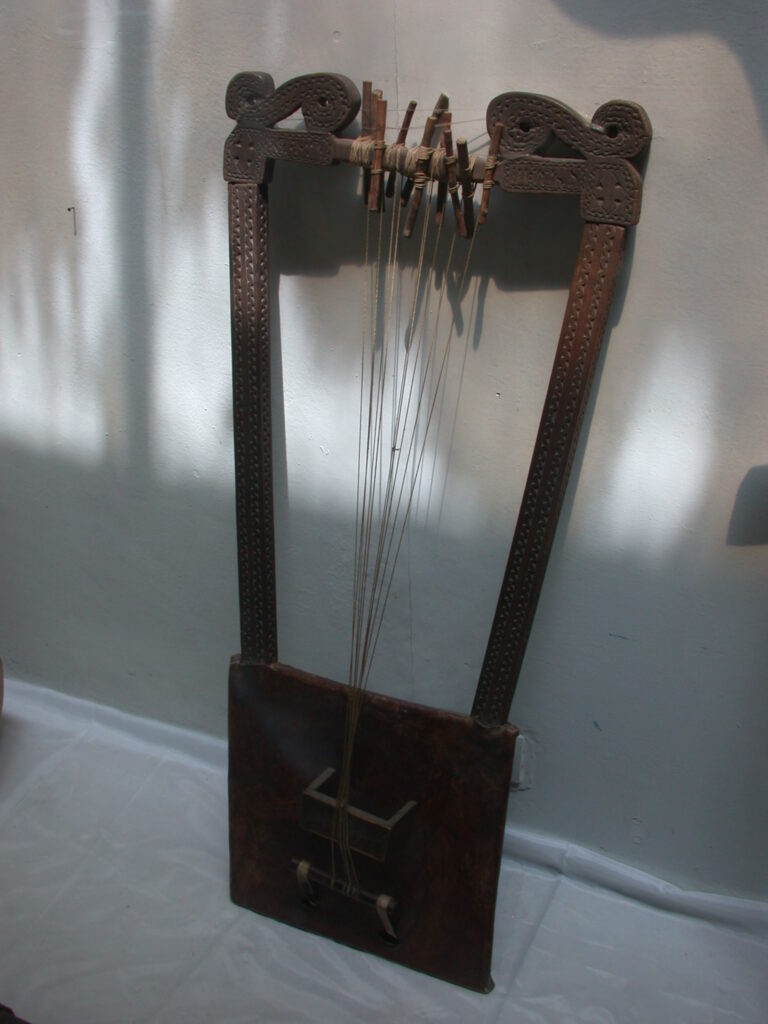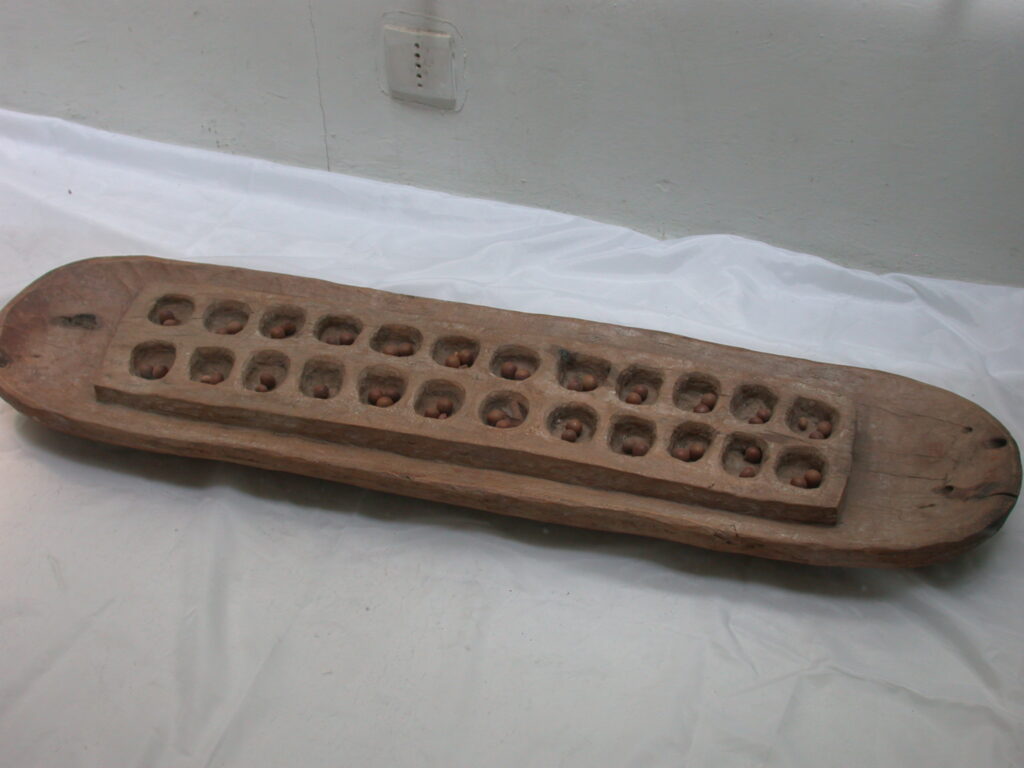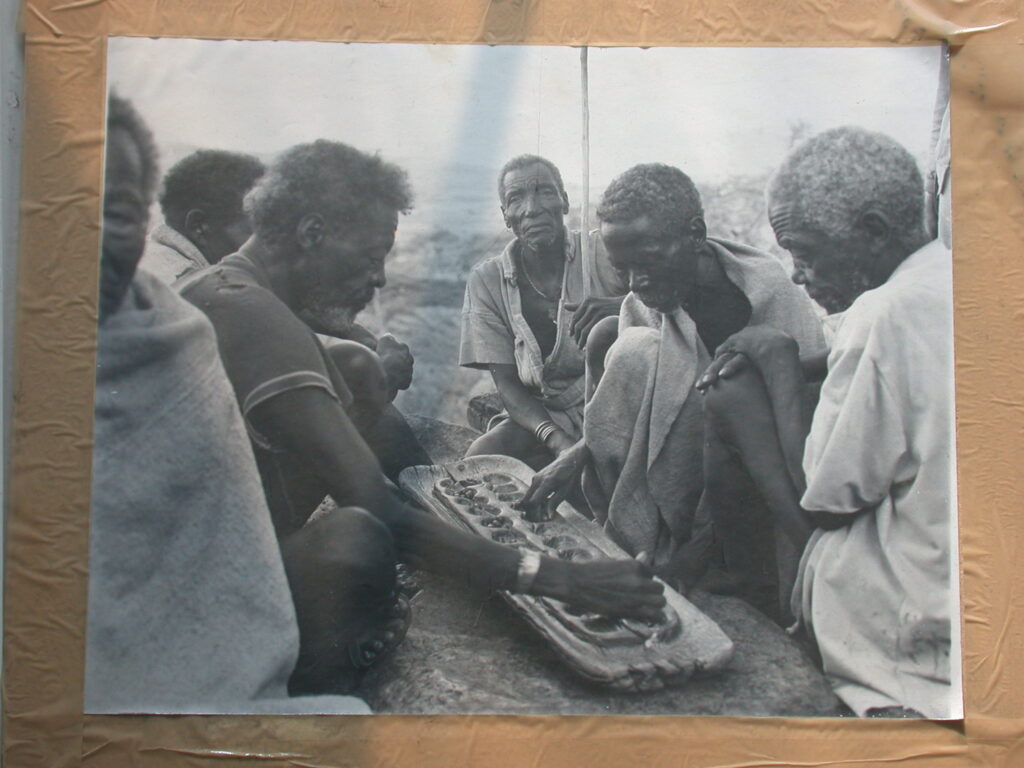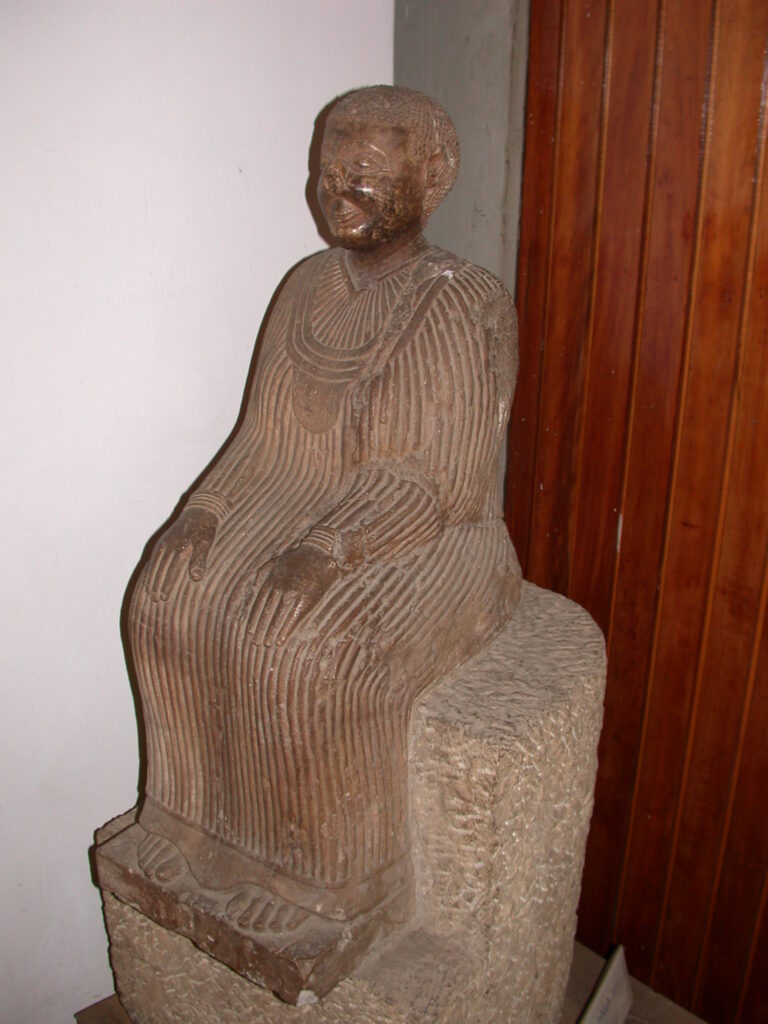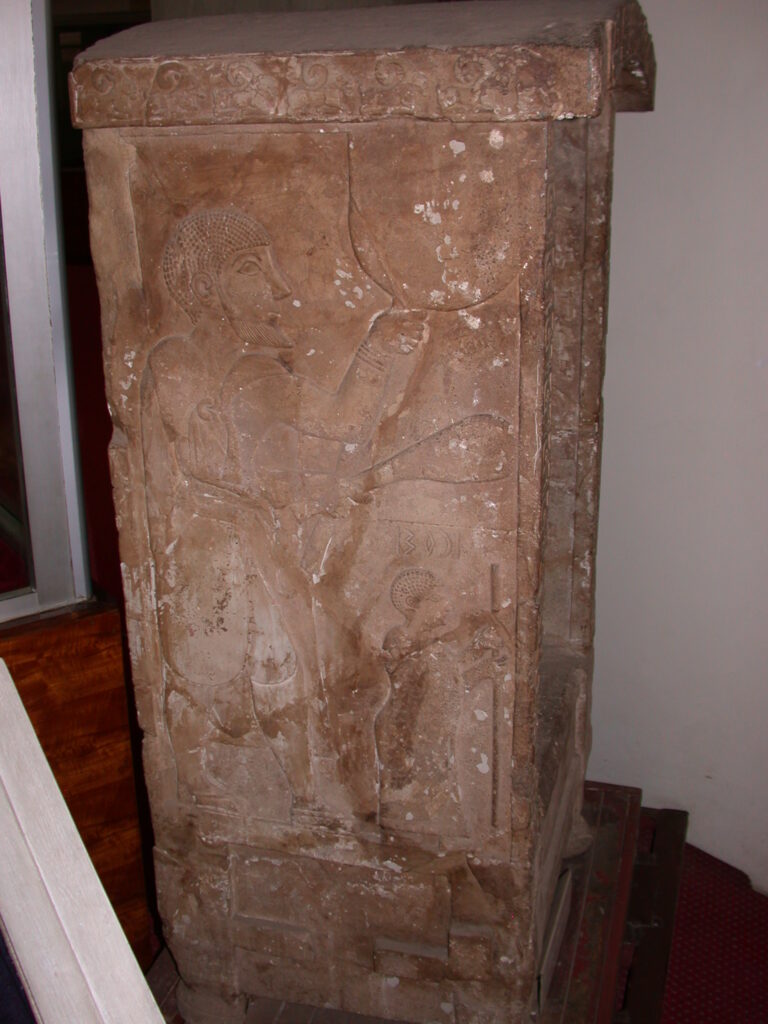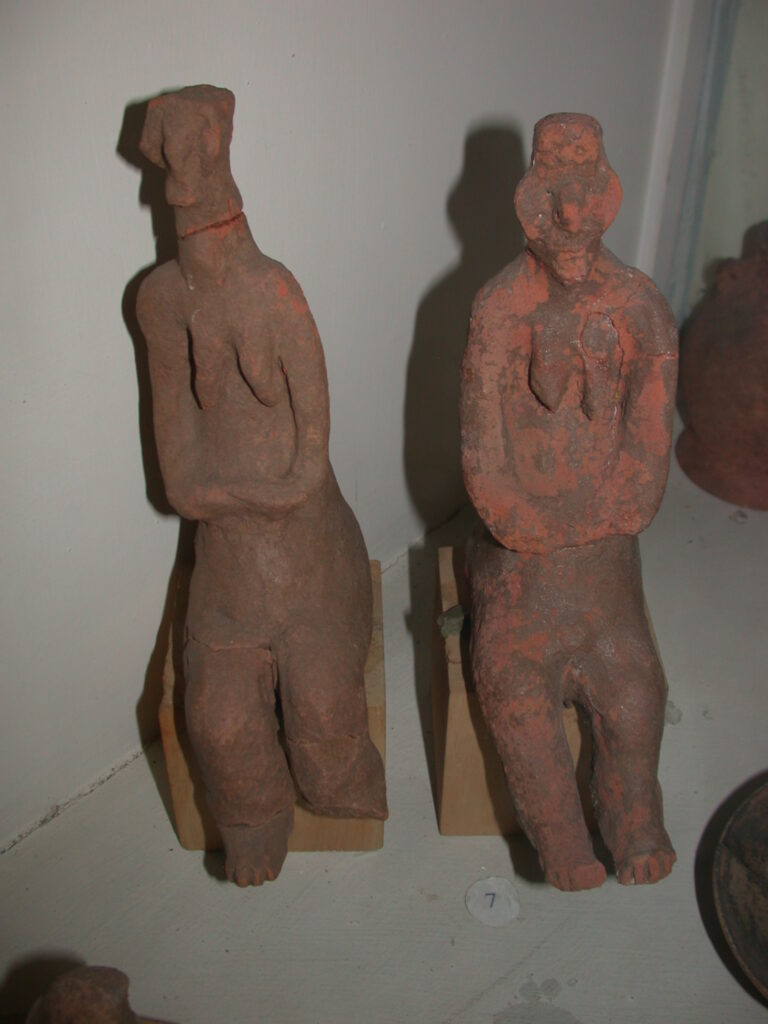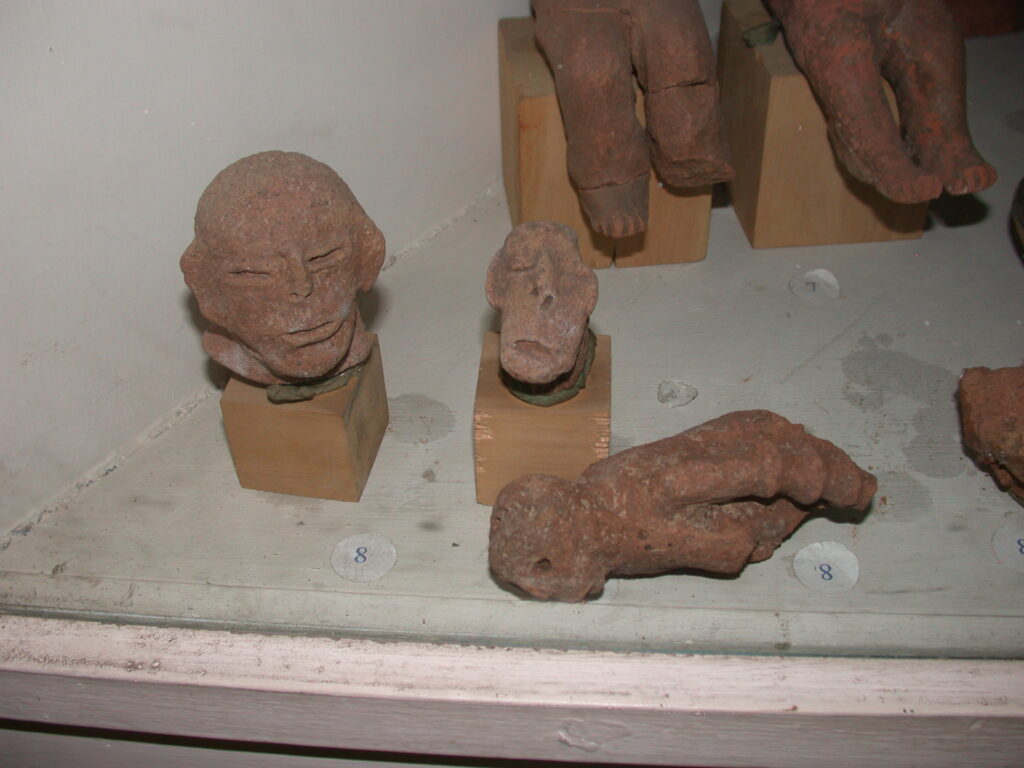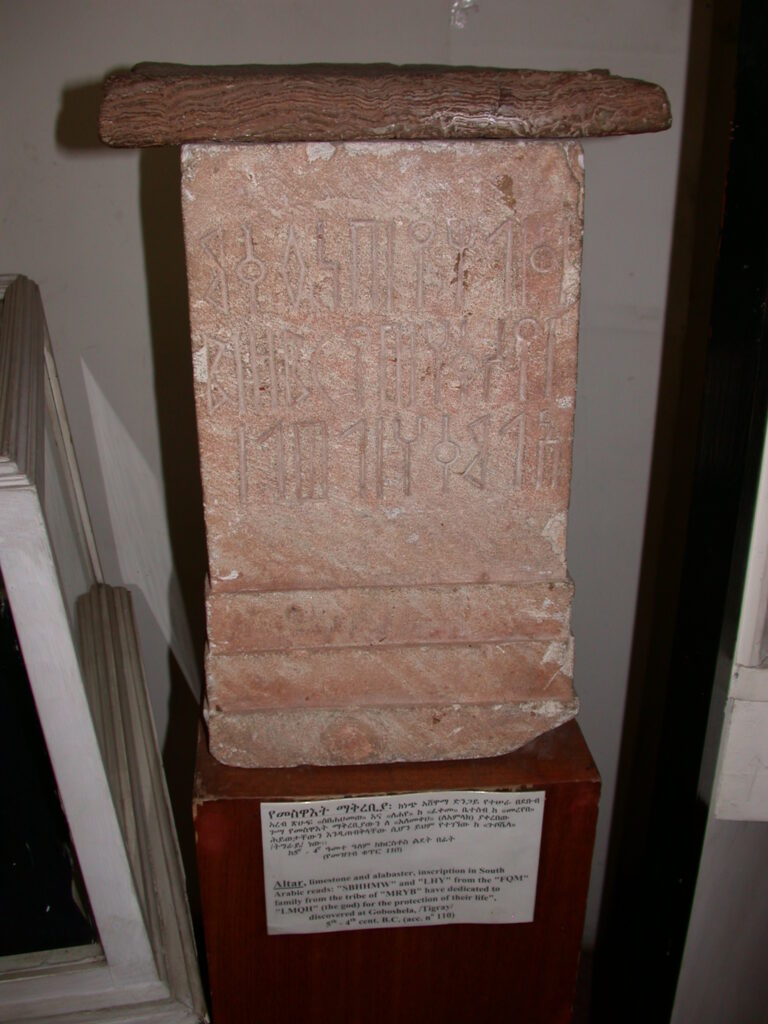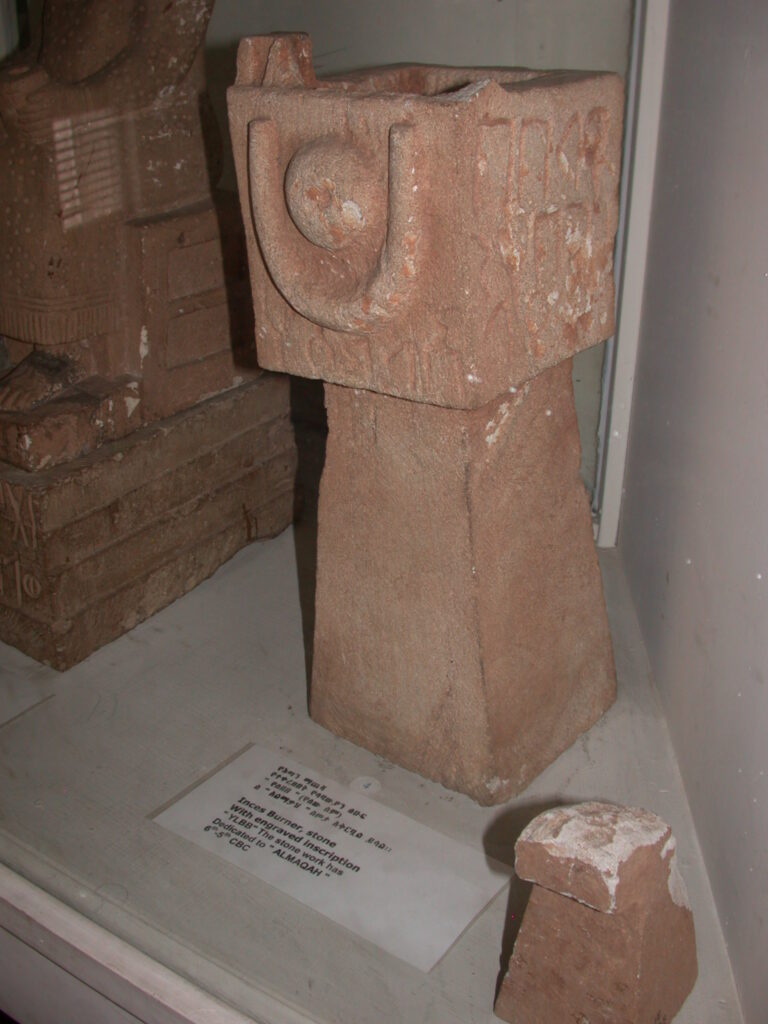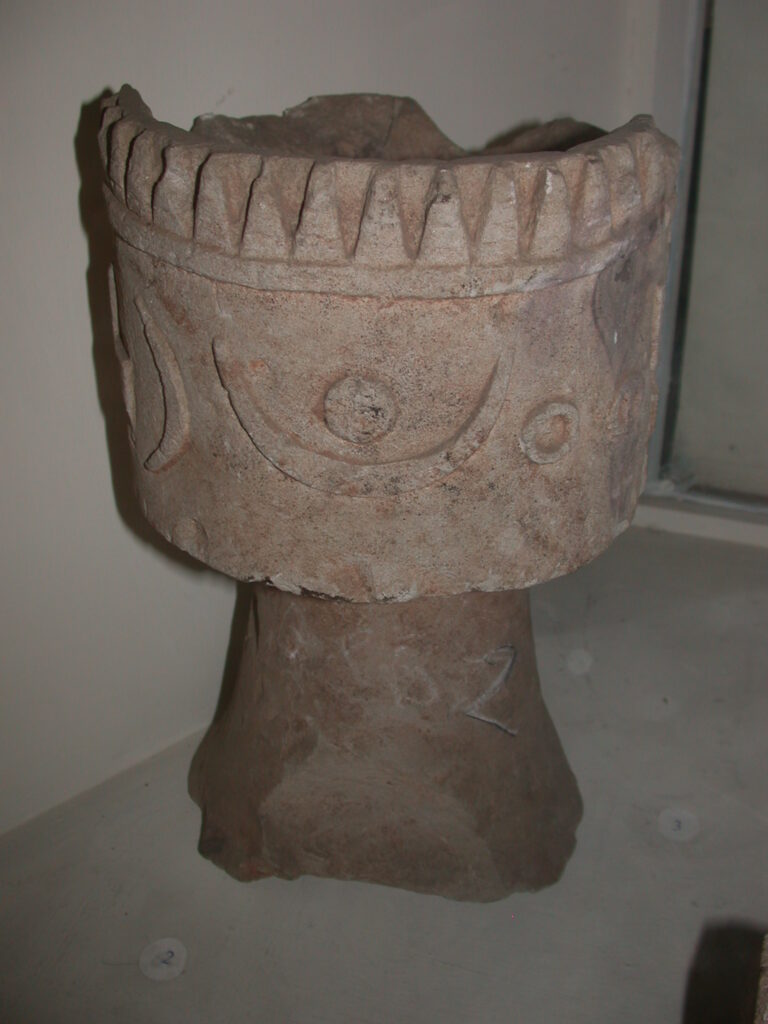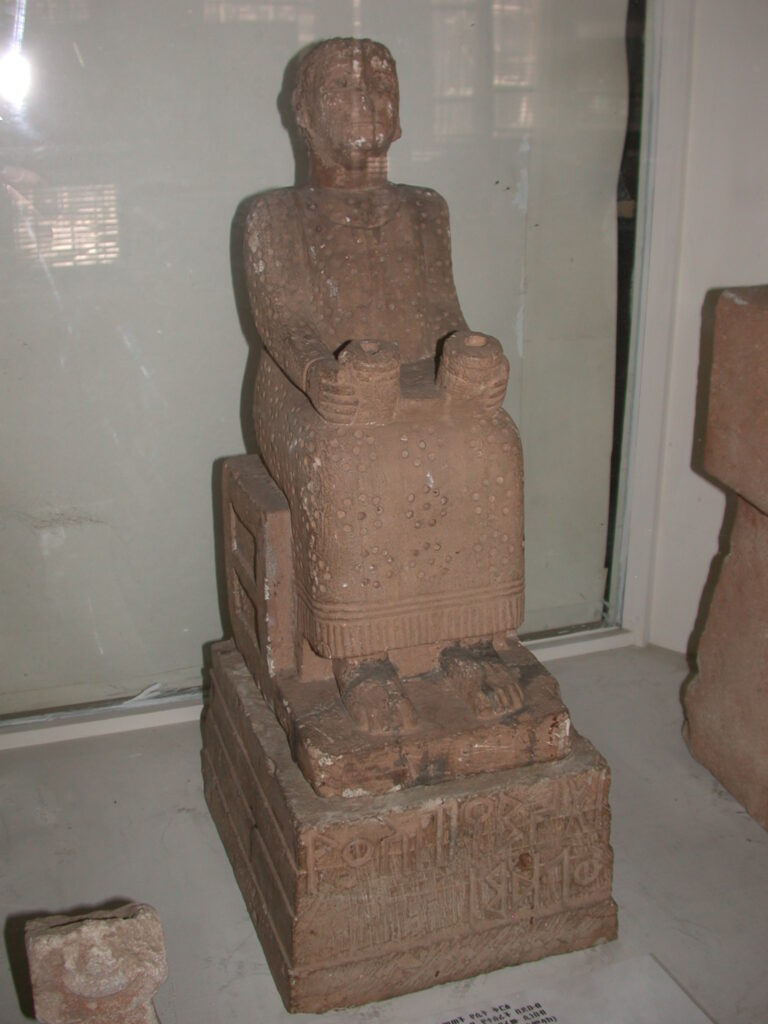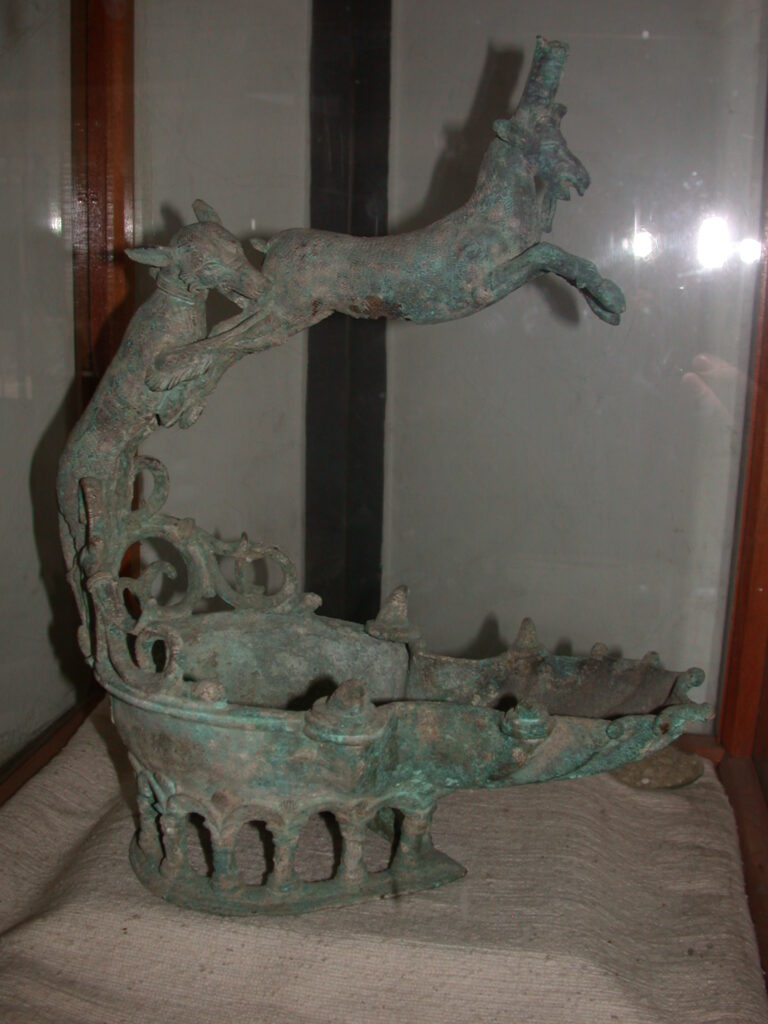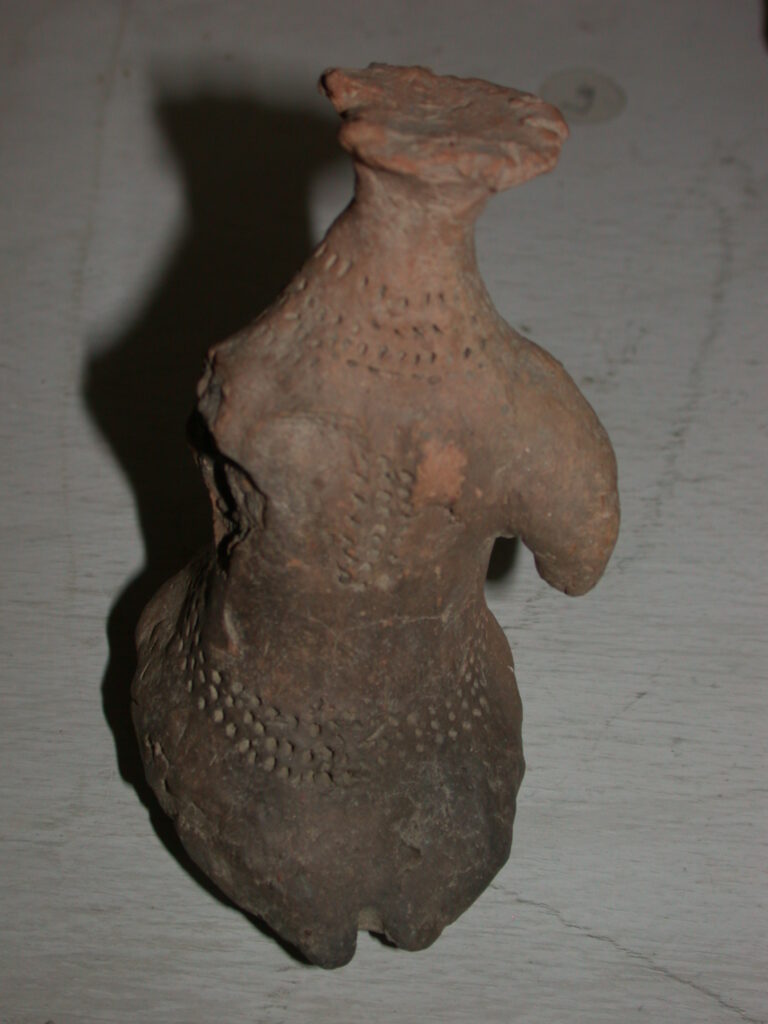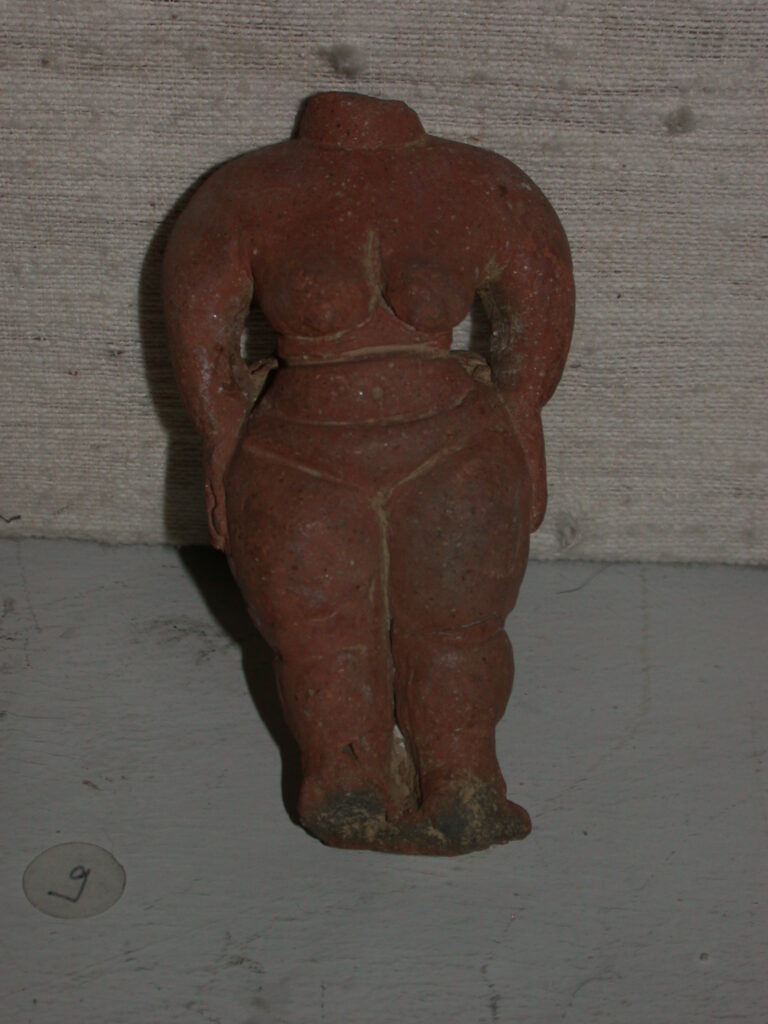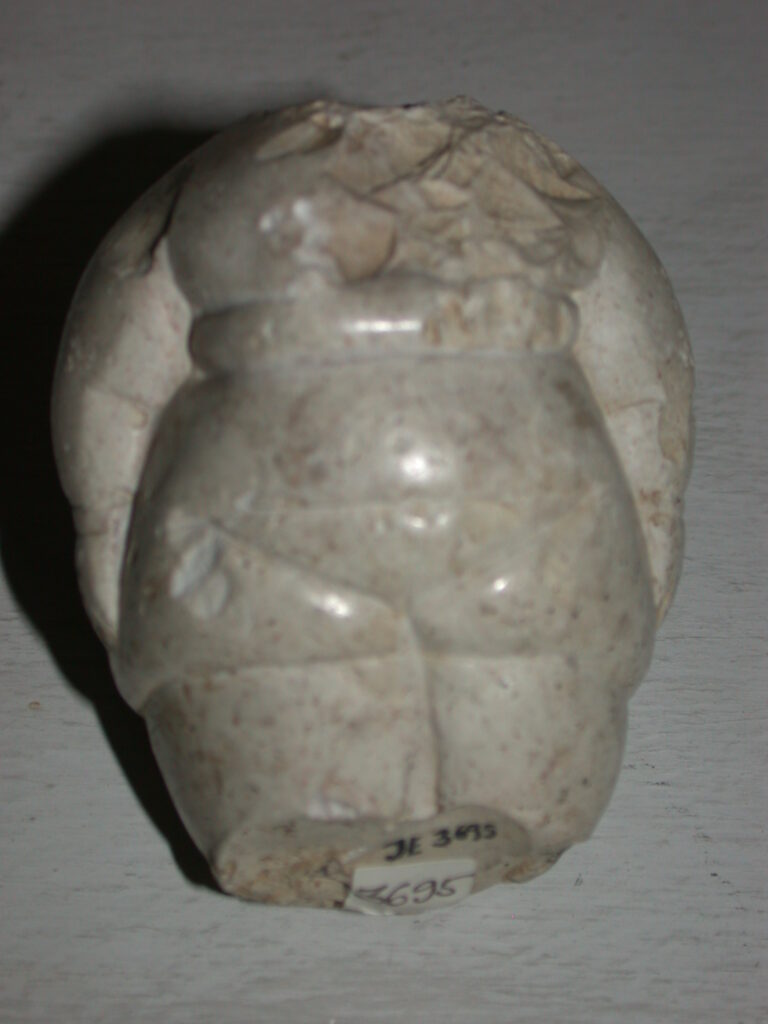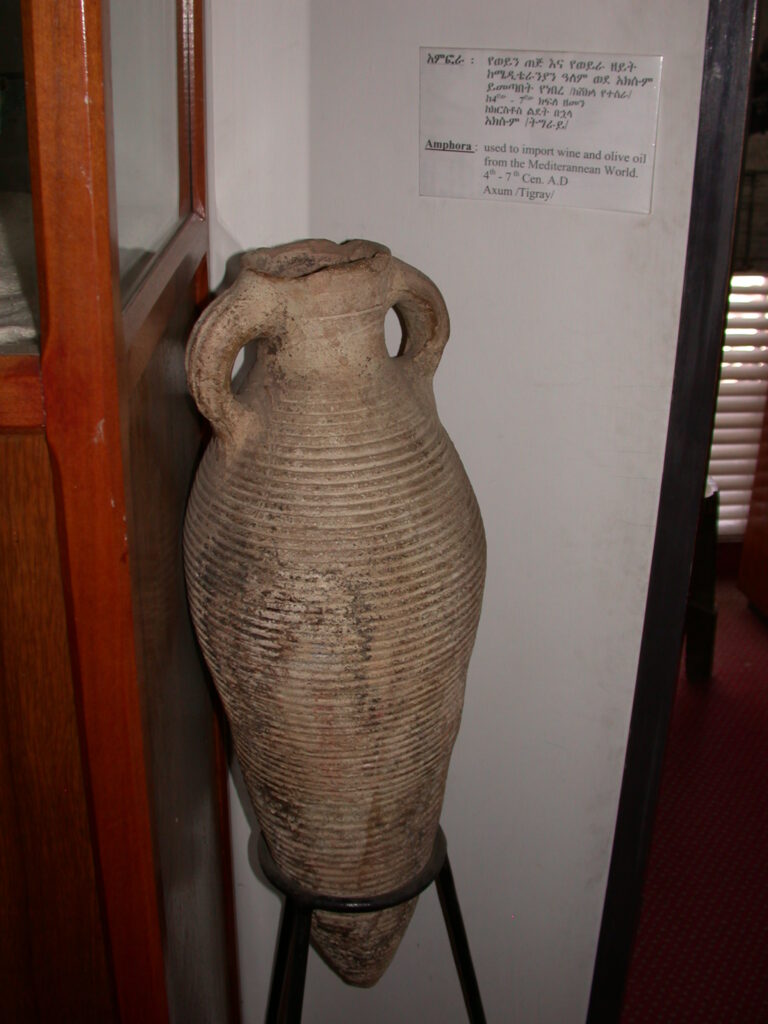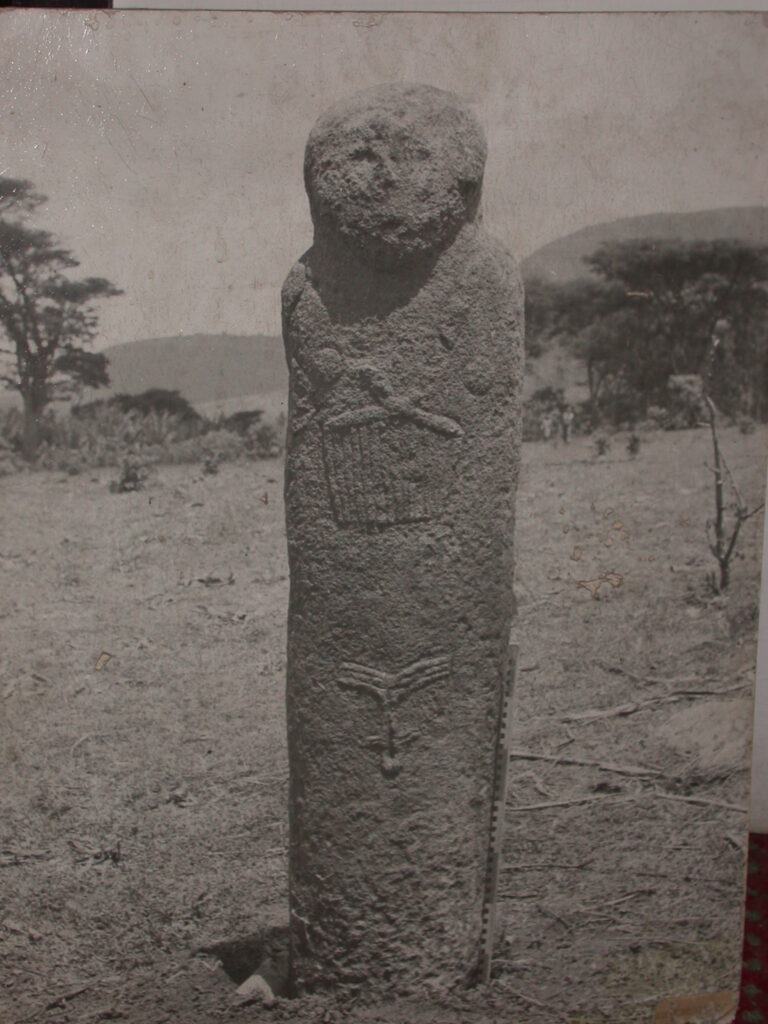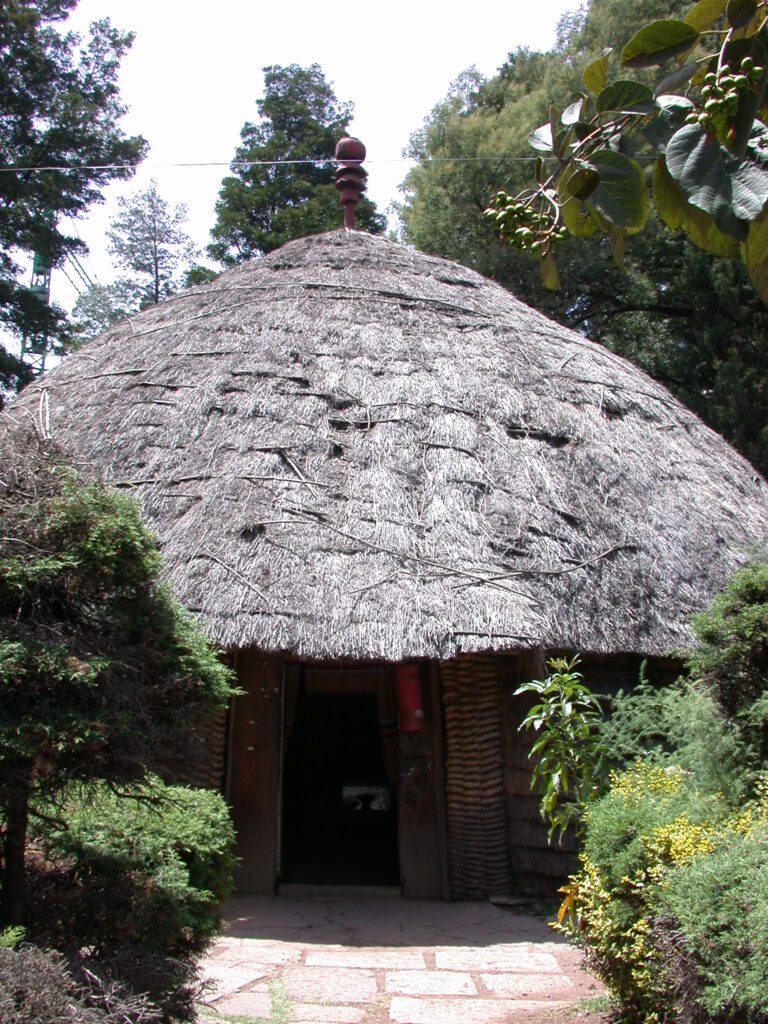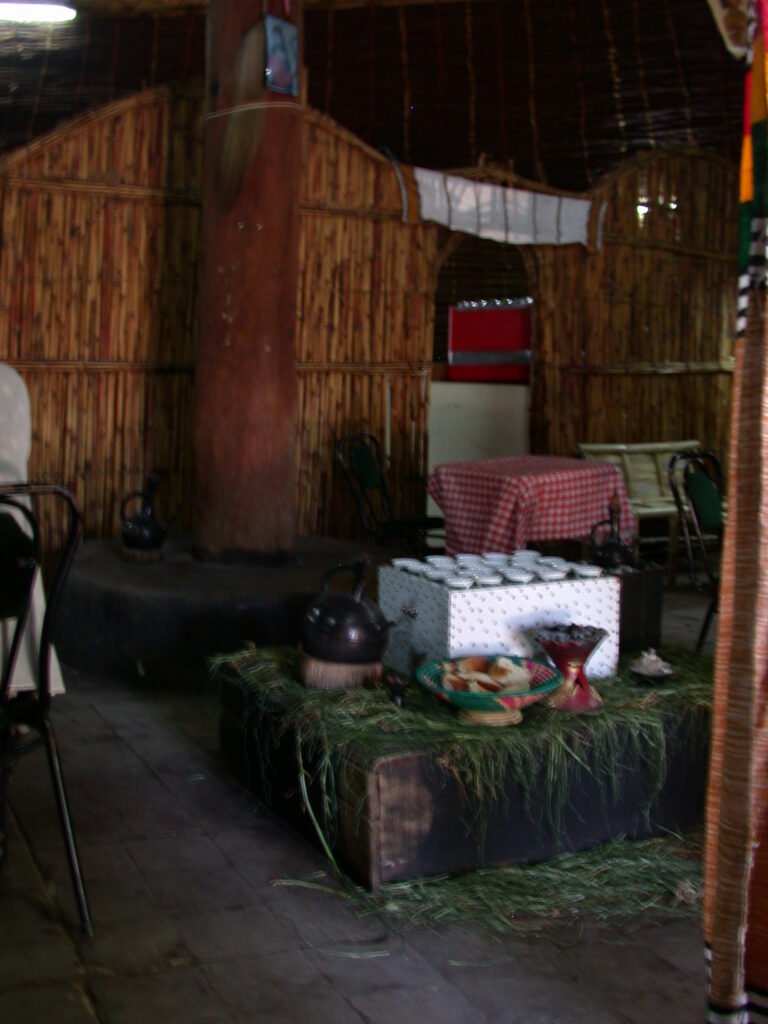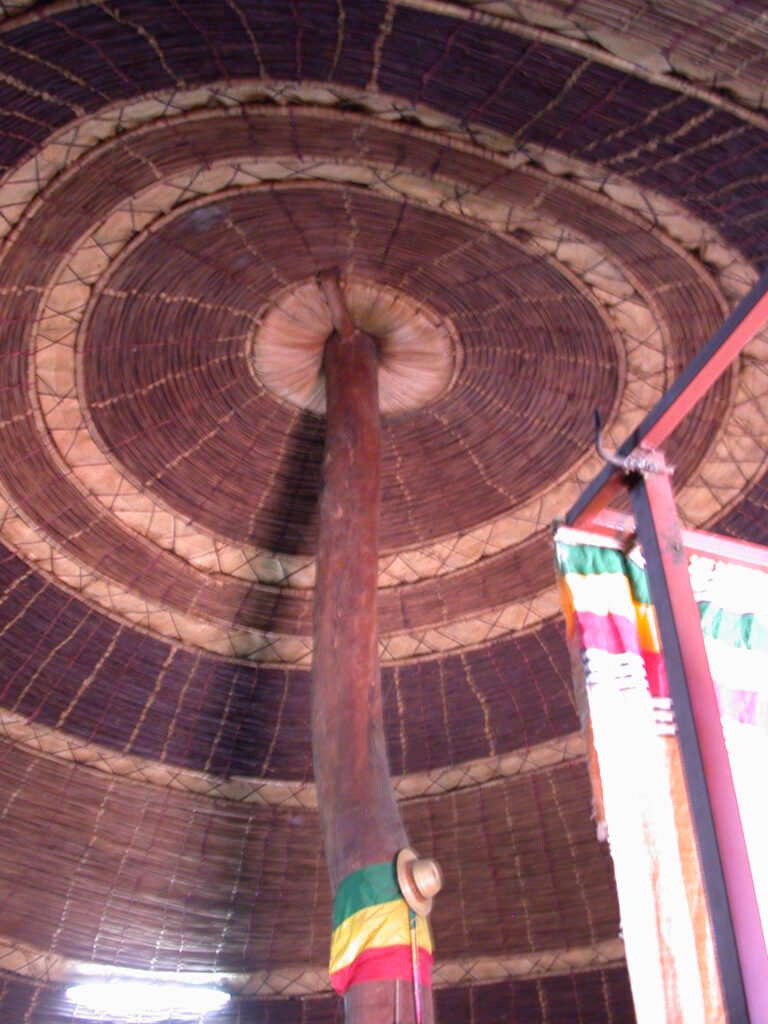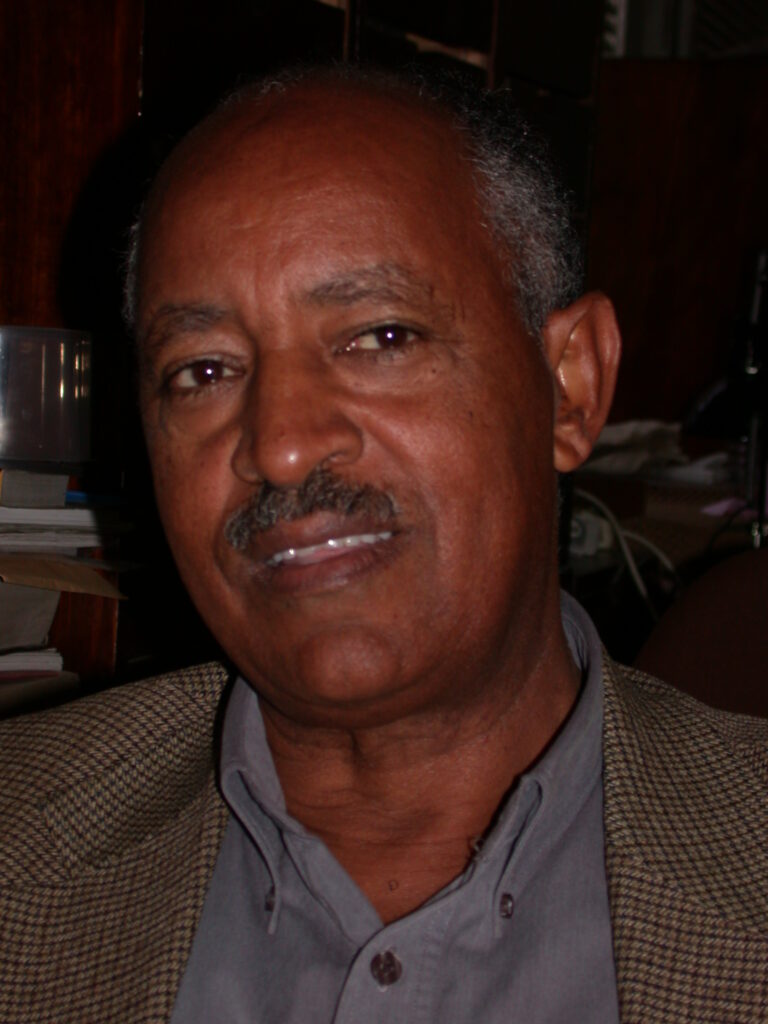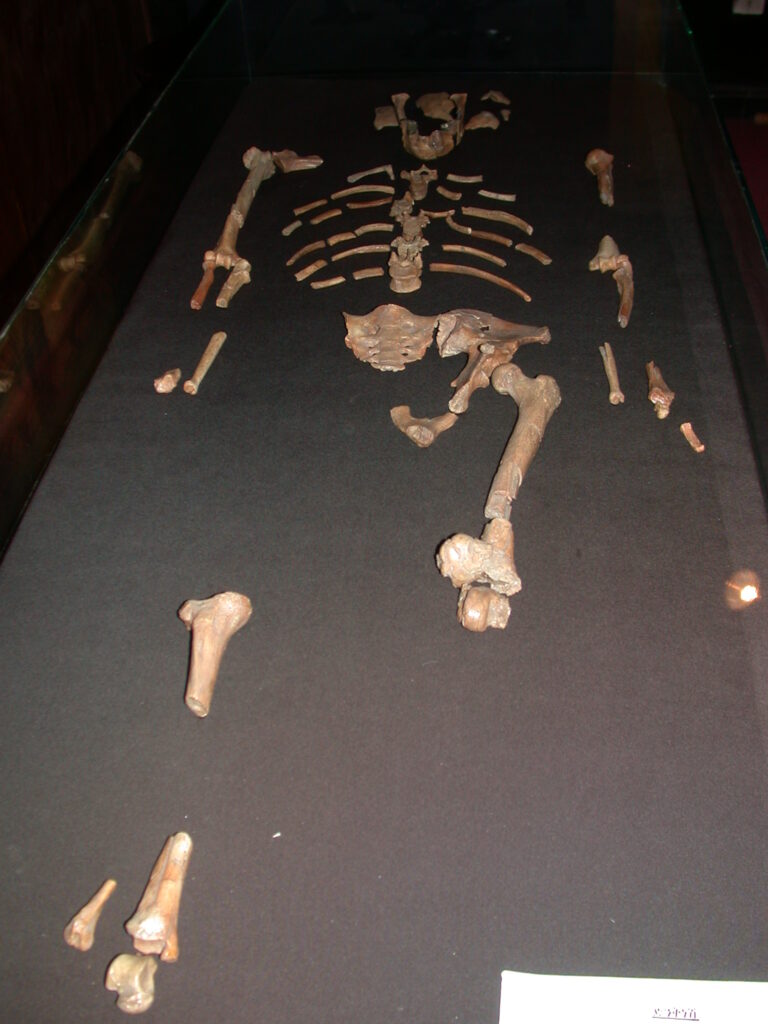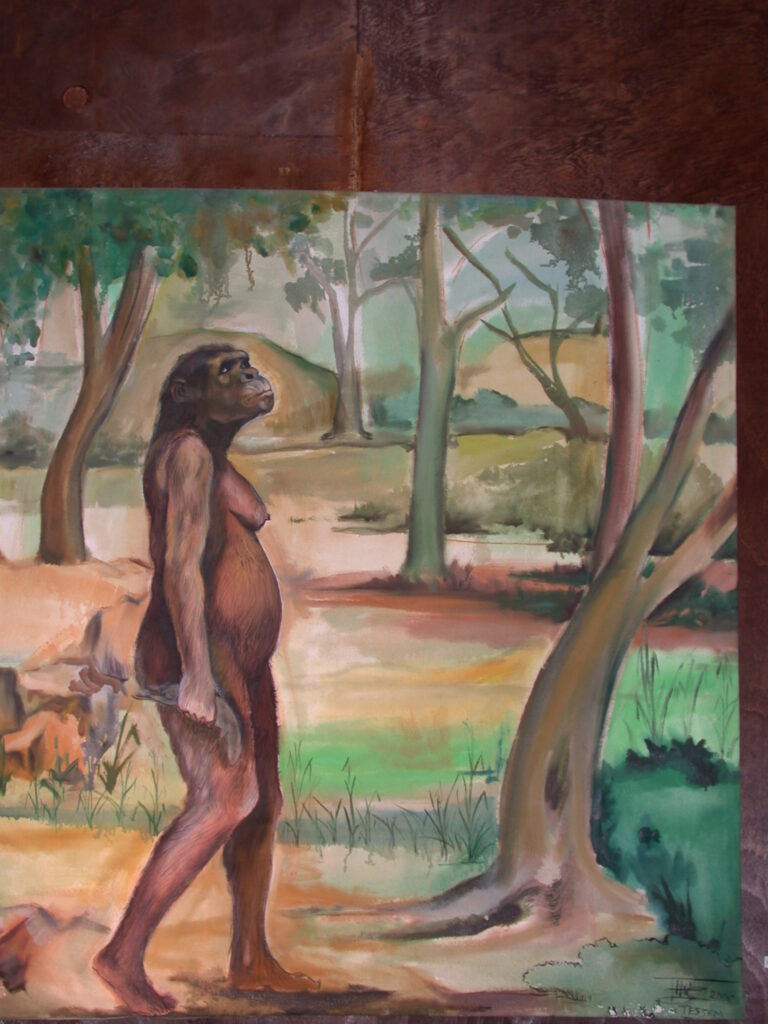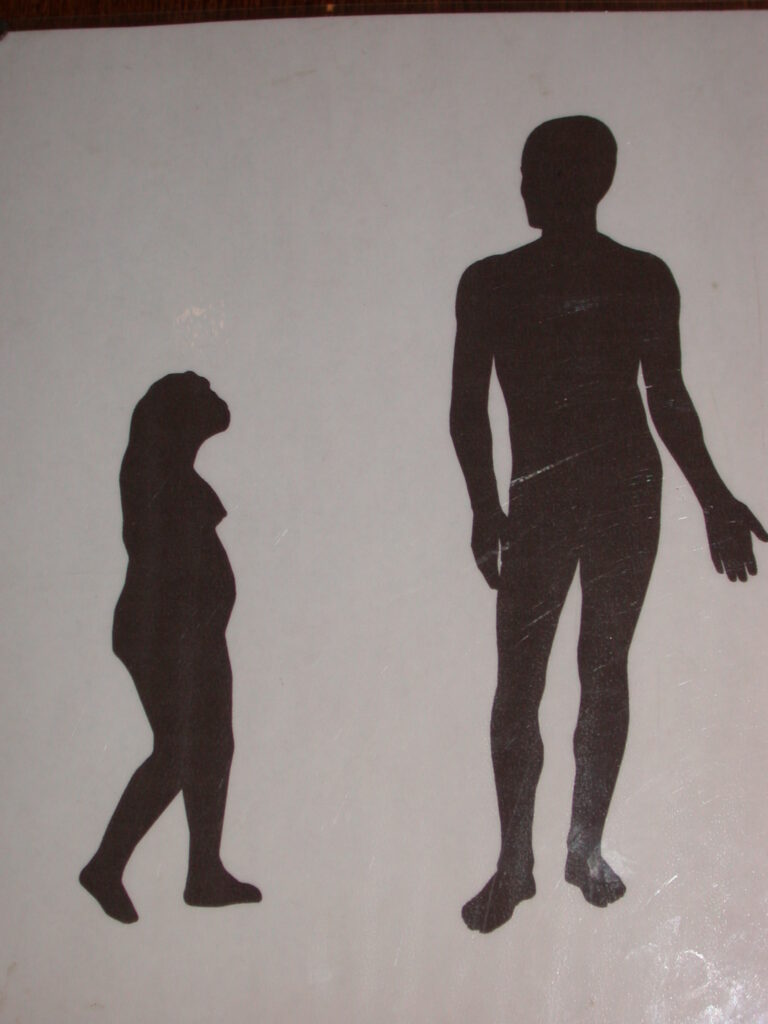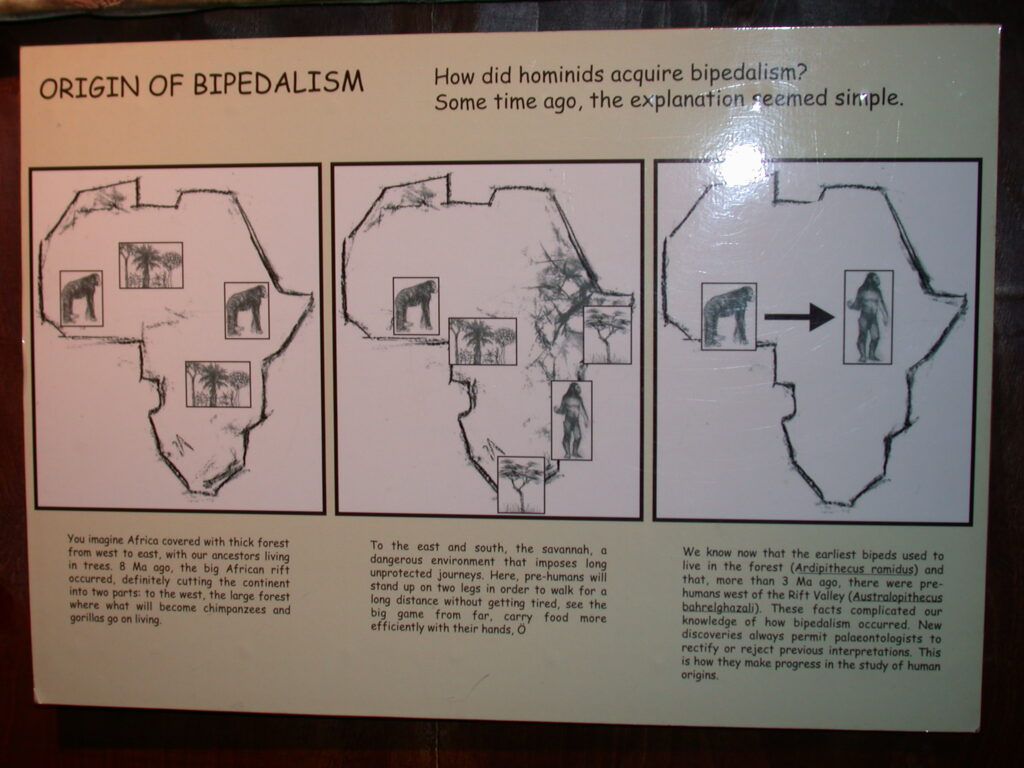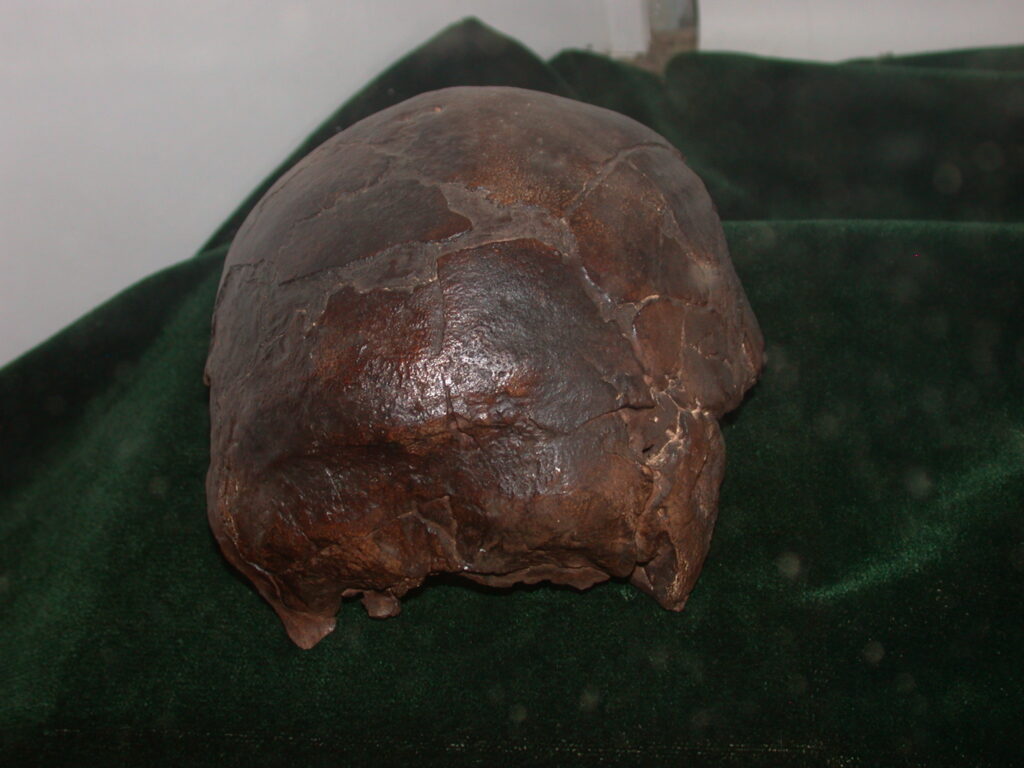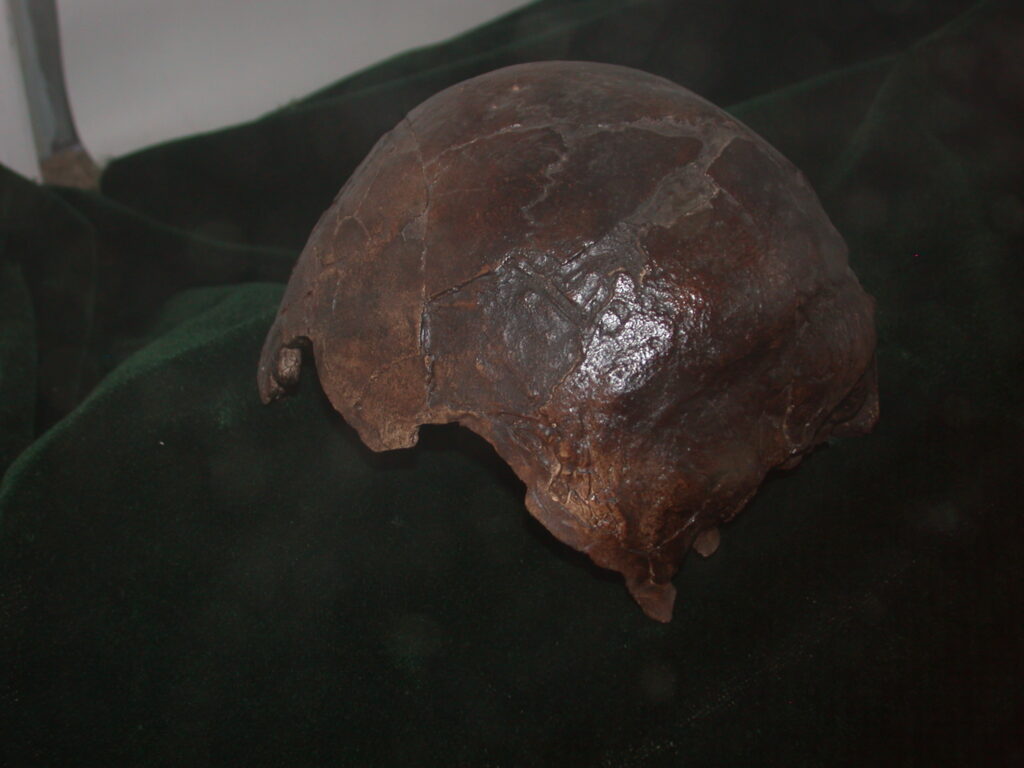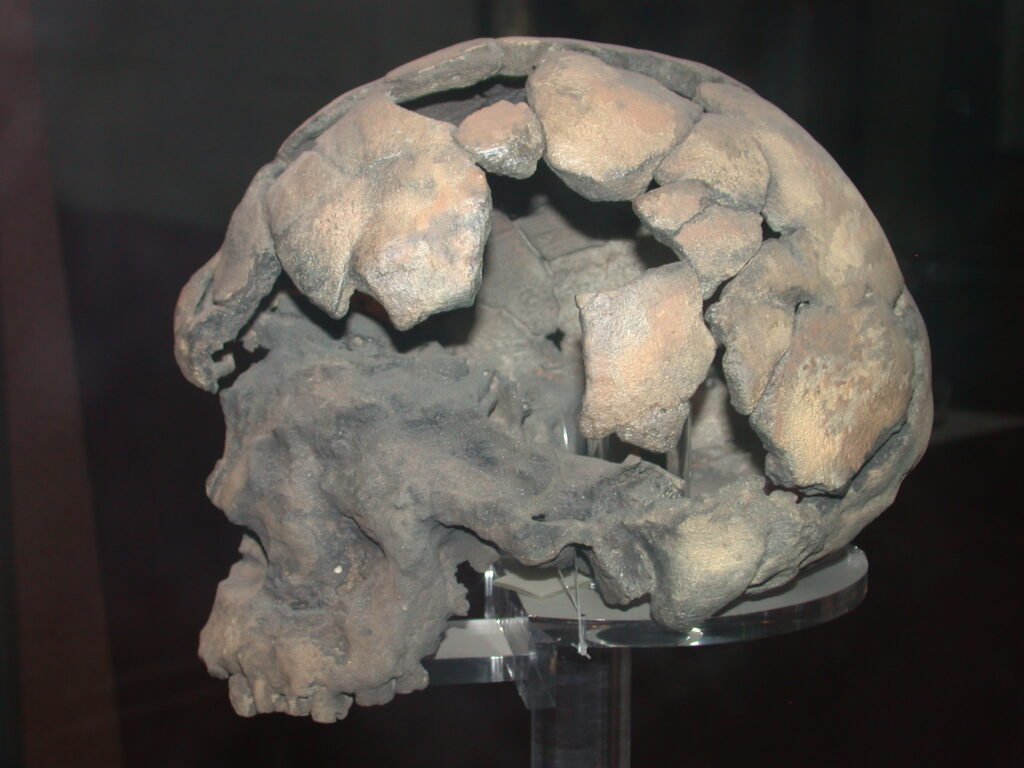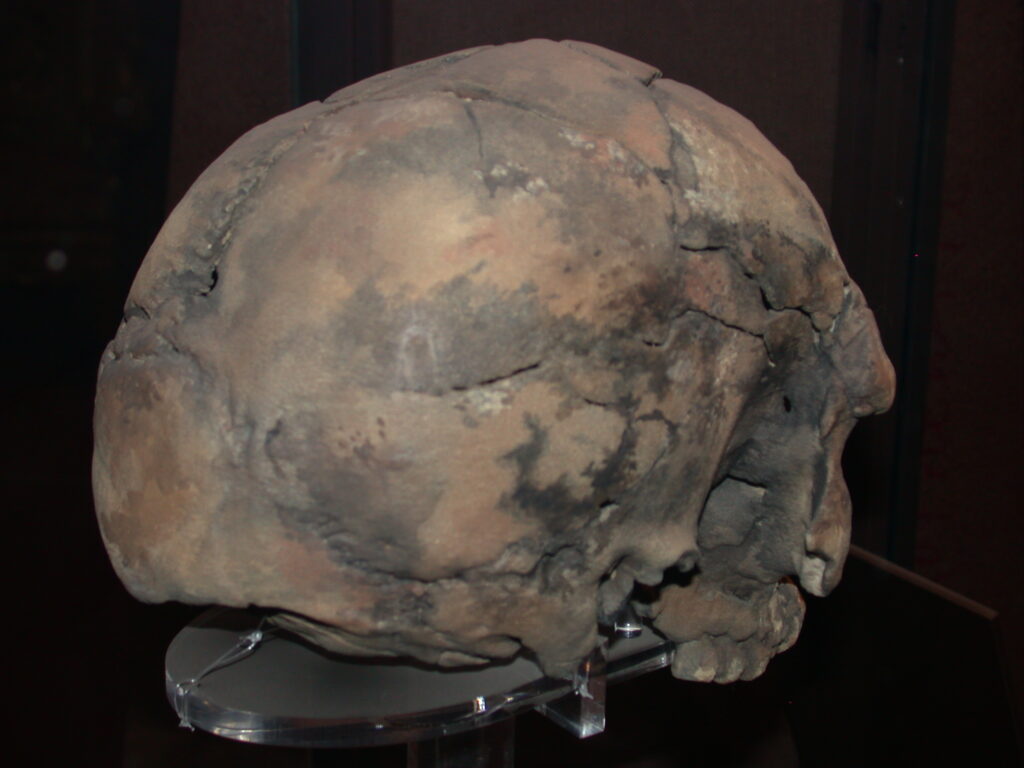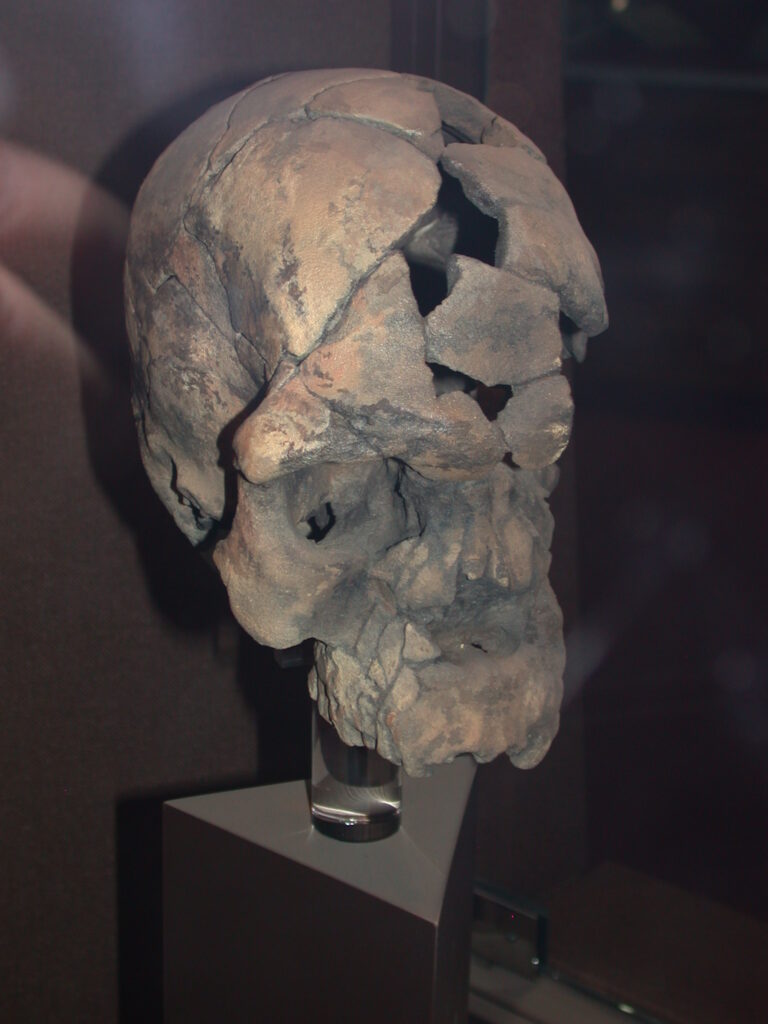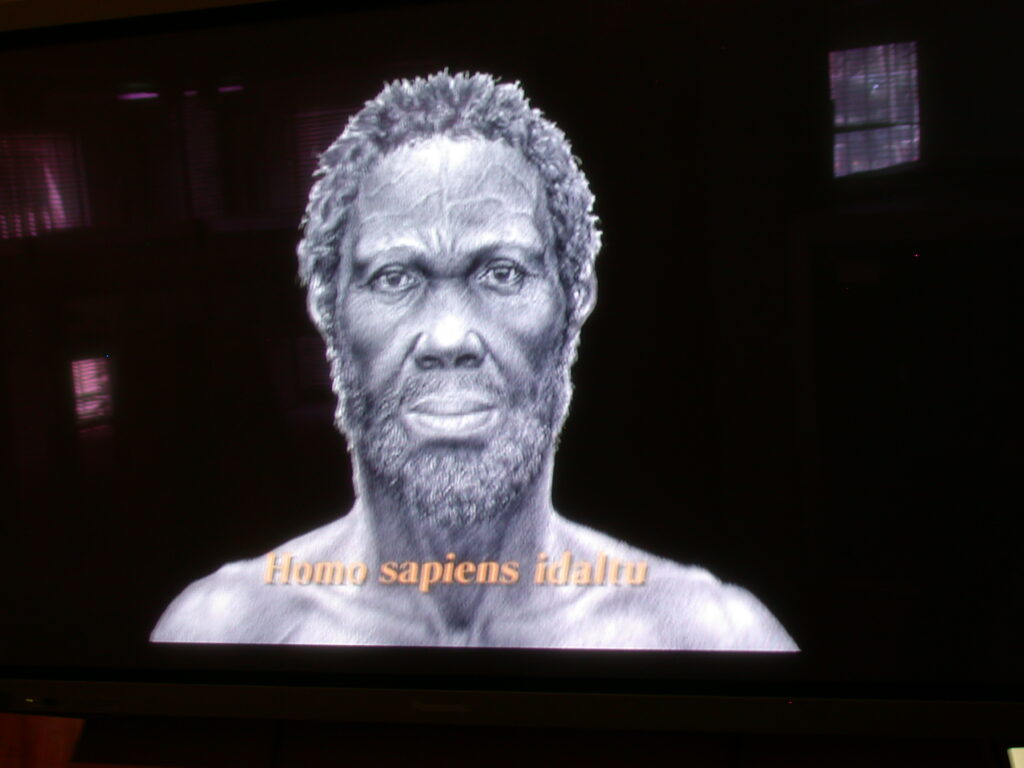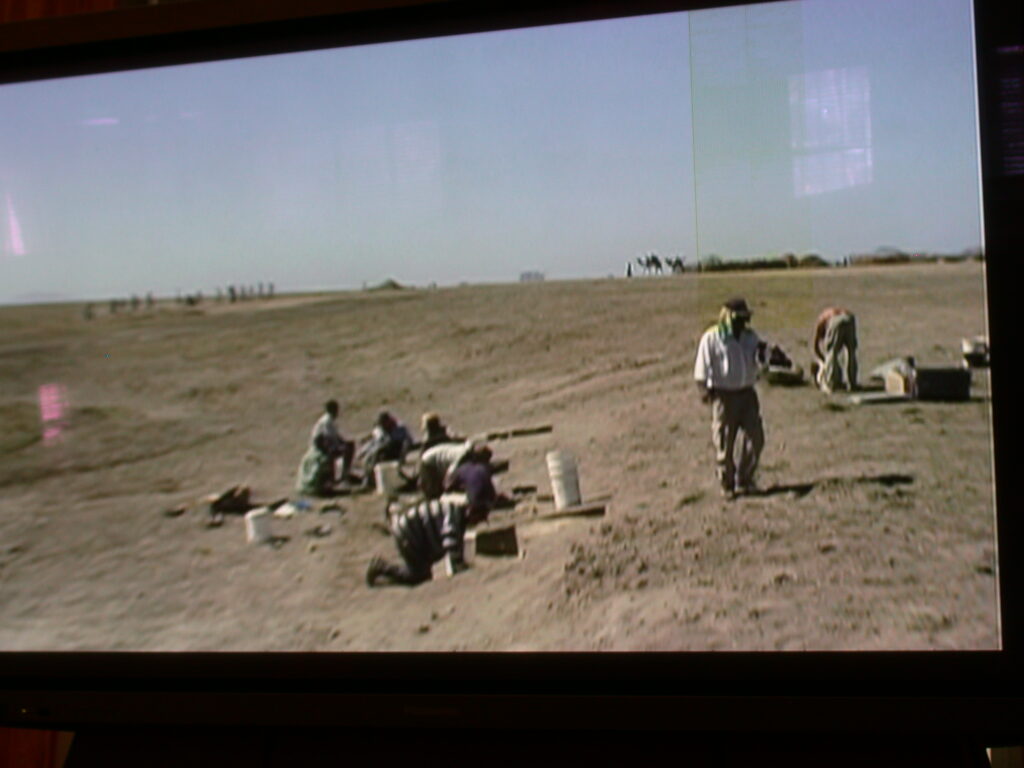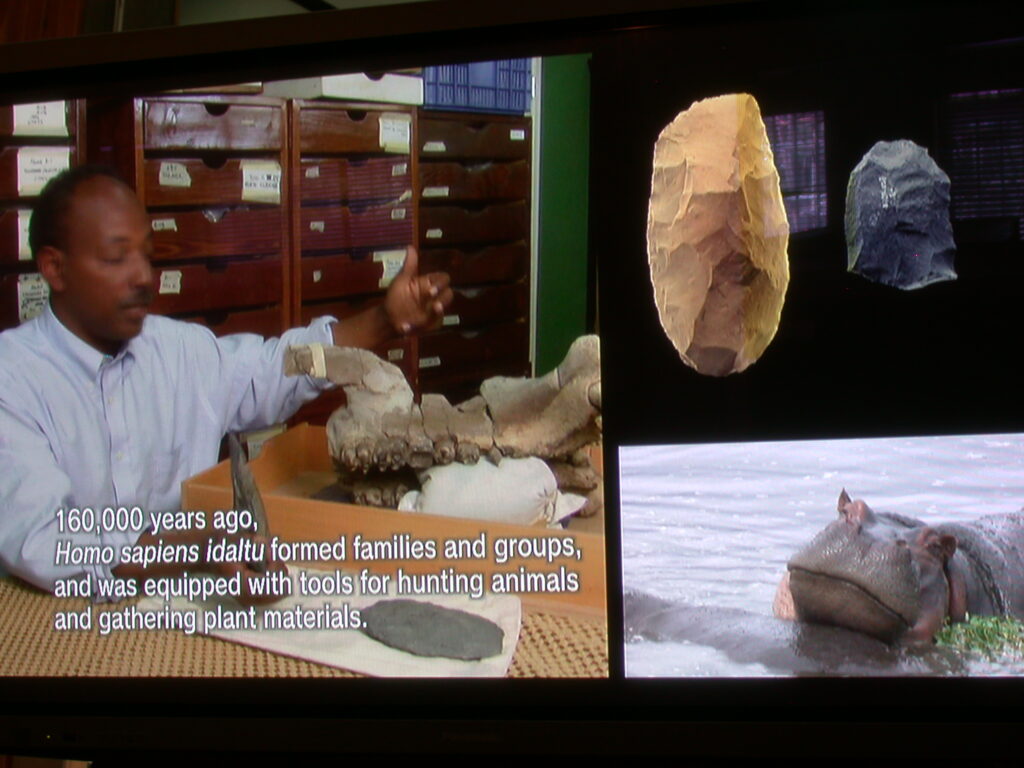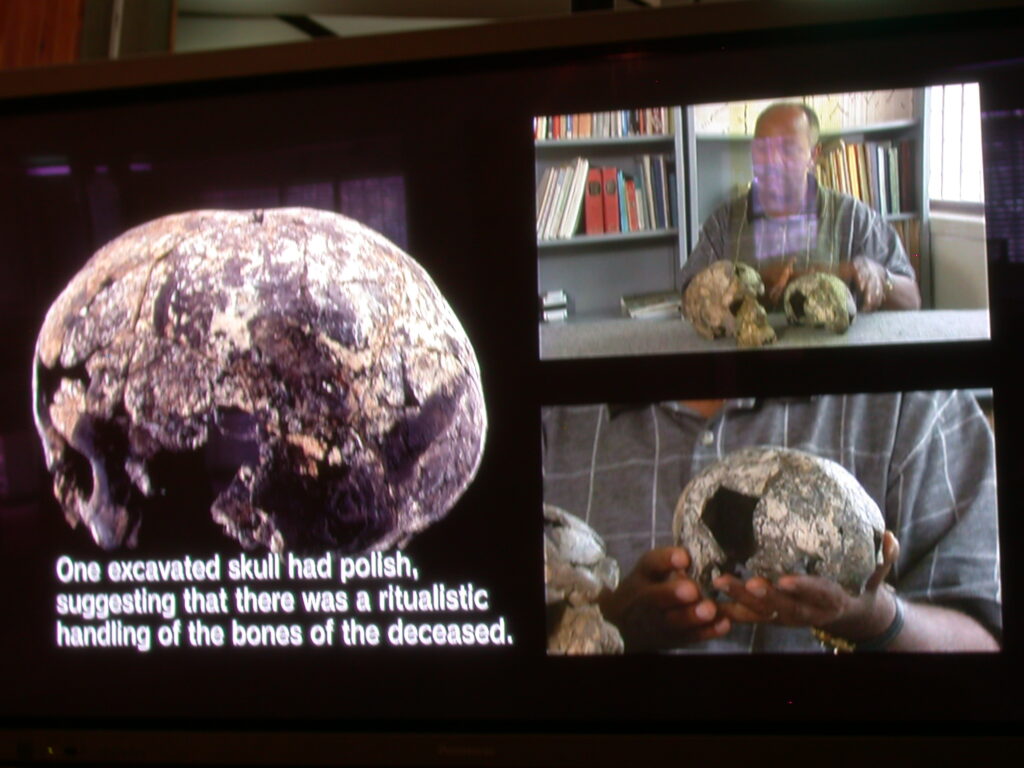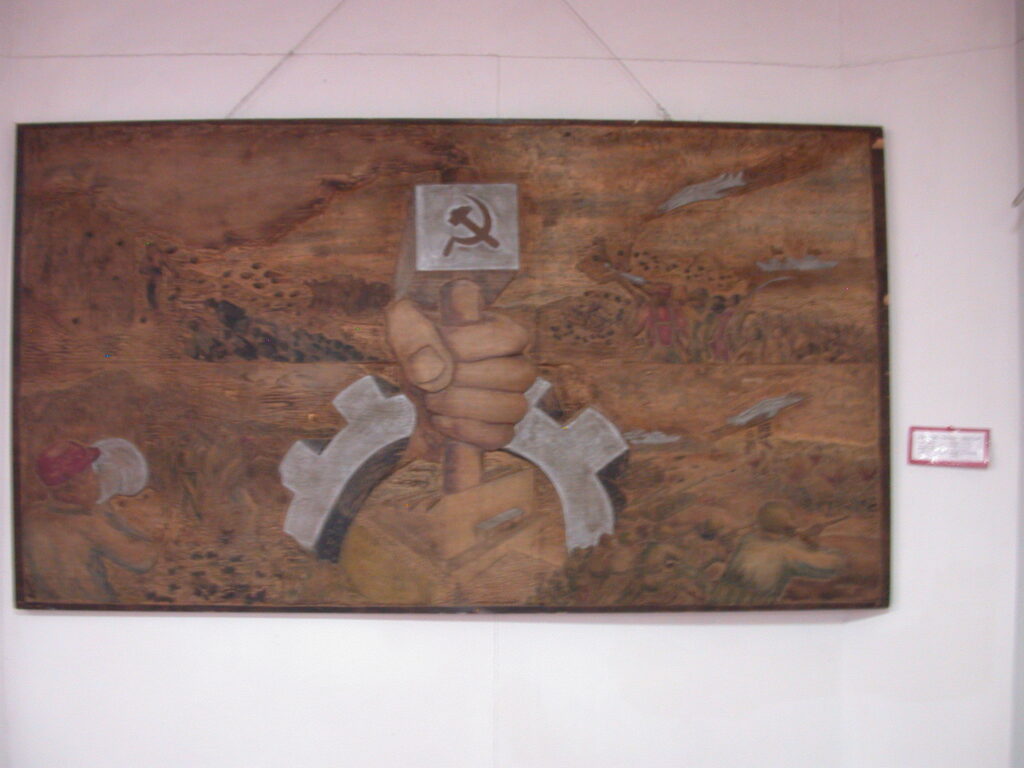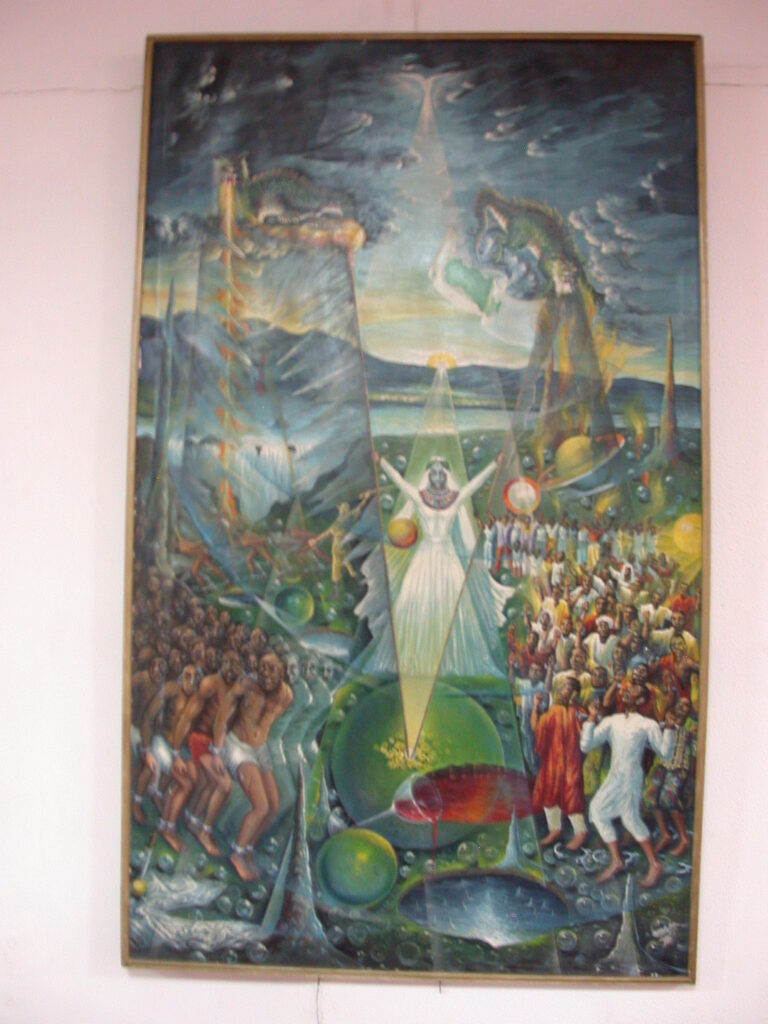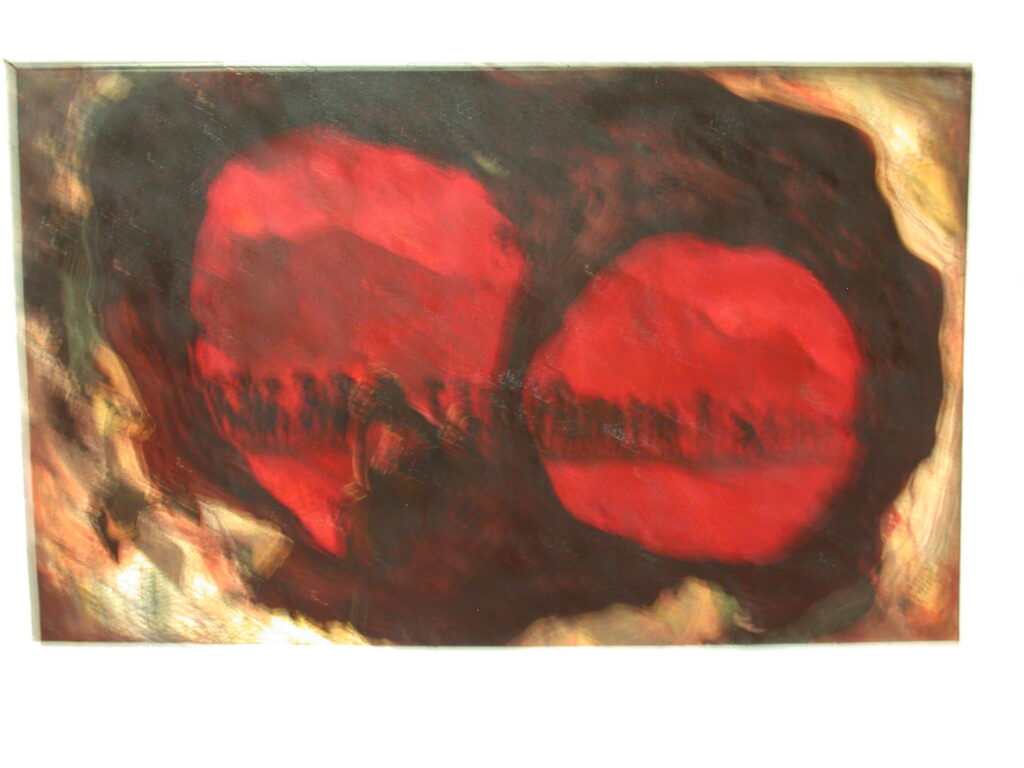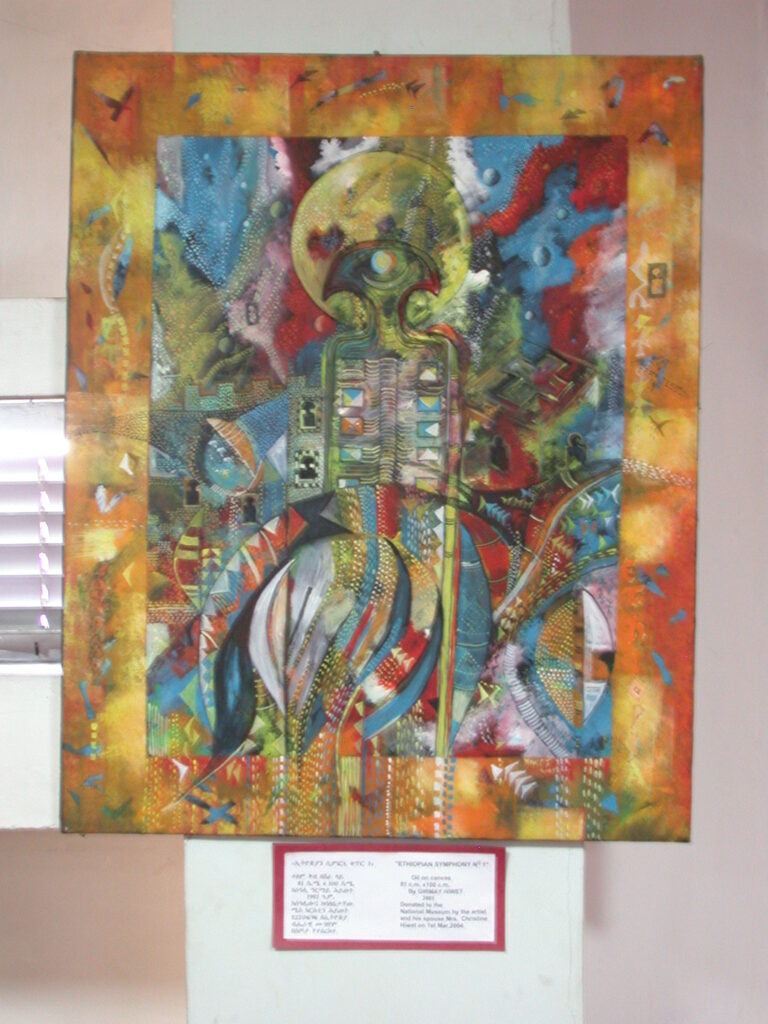On March 2 through March 4, I went camping at the Bilen Lodge in the Afar region of the Awash area of Ethiopia. Unfortunately, although I traveled near the Awash National Park, I didn’t get to see the park itself. This trip is probably the closest I’ll ever get to the Herto village near where archaeologists found the human remains, unless I later get invited to join the archaeologists in their fieldwork as was a journalist from the San Francisco Chronicle. However, while there, I had the distinct impression that the Herto humans had walked through the area.
This blog entry covers the first day, March 2.
To save money, I decided to take the local bus to Awash Saba, then find other transport to Bilen Lodge.
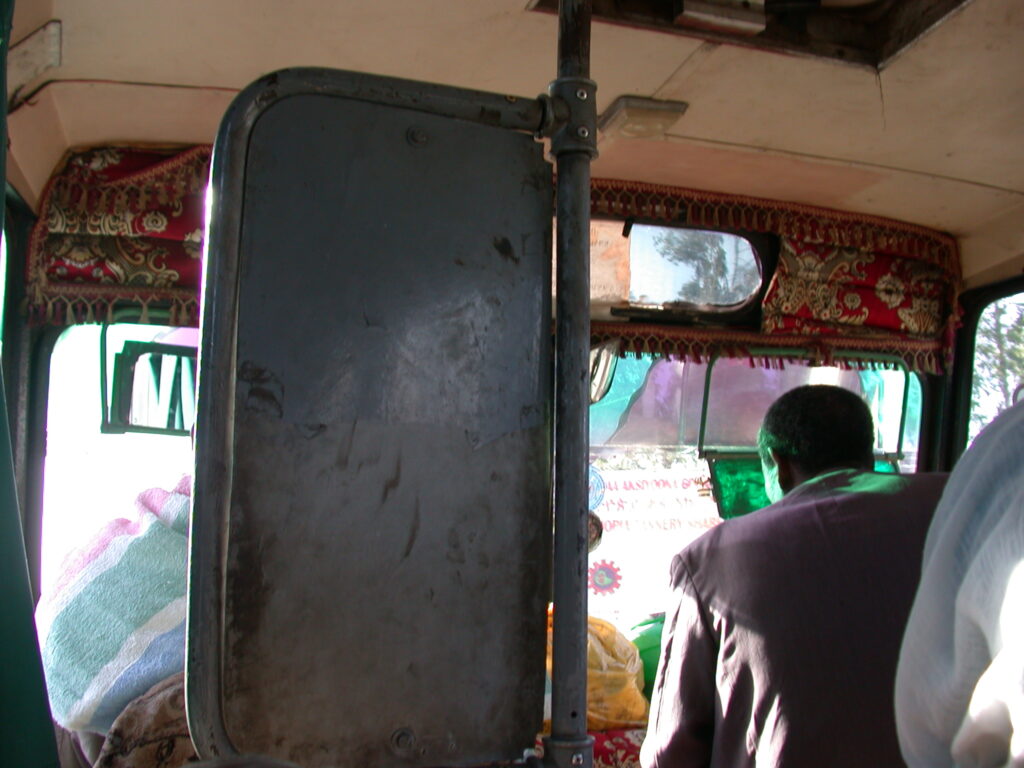
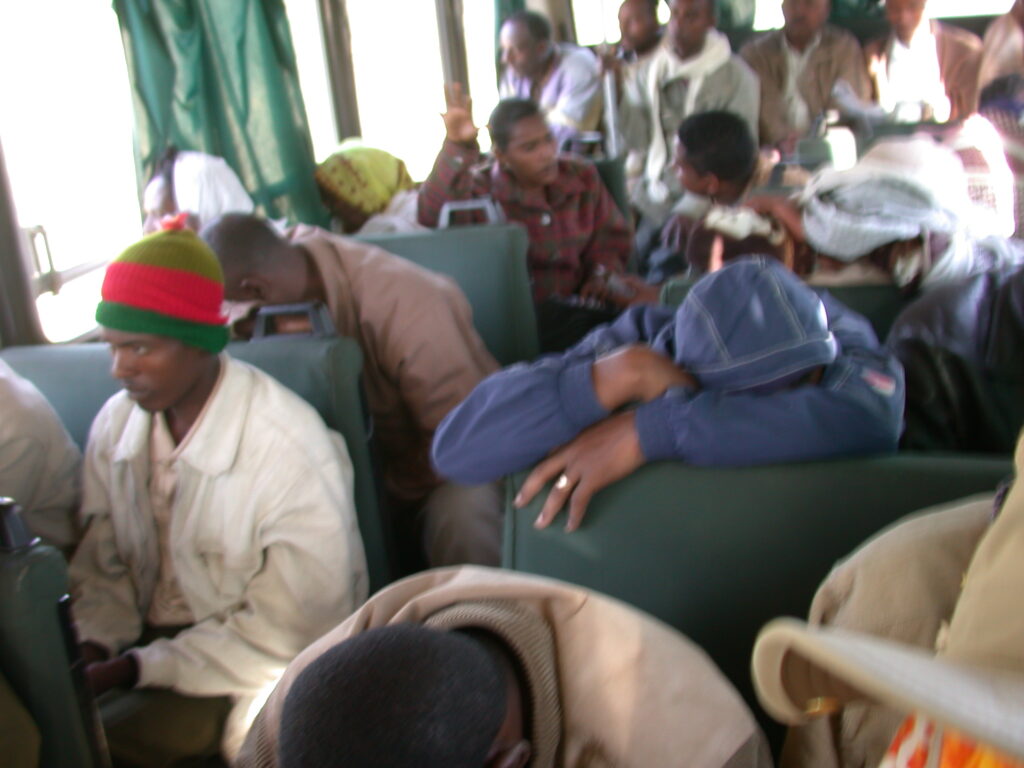
While riding on the bus, I saw the driver approaching a herd of cows crossing the road at a speed that seemed to fast to me, then heard a thump, another thump, then thump-thump-thump as the bus ground to a halt after running over two cows, one left on the opposite lane, the other lodged under the front door of the bus.
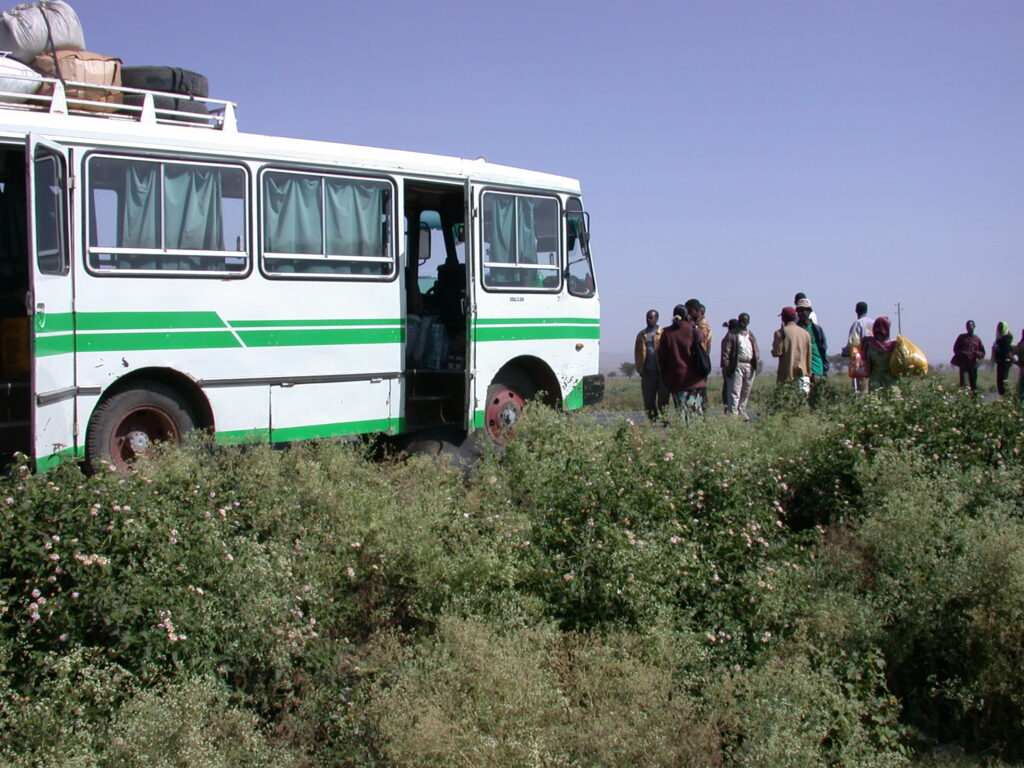
Another rider on the bus told me the first thing that happened after we hit the cows was that the cowherder grabbed his gun and pointed it at the bus until the bus stopped. Then, the bus driver got out and started negotiating with the cowherder. Amazingly, it took less than five minutes for a traffic police officer to show up, even though we seemed to be in the middle of nowhere. Soon, the driver had apparently agreed to pay around US$350 for the two cows, presumably out of his own pocket. This must have represented a significant amount of cash for him as each bus fare was only US$2-3.
While waiting for a substitute bus to arrive, the riders all started chatting and we watched the herd of camels led by tribal Afar people as they passed by.

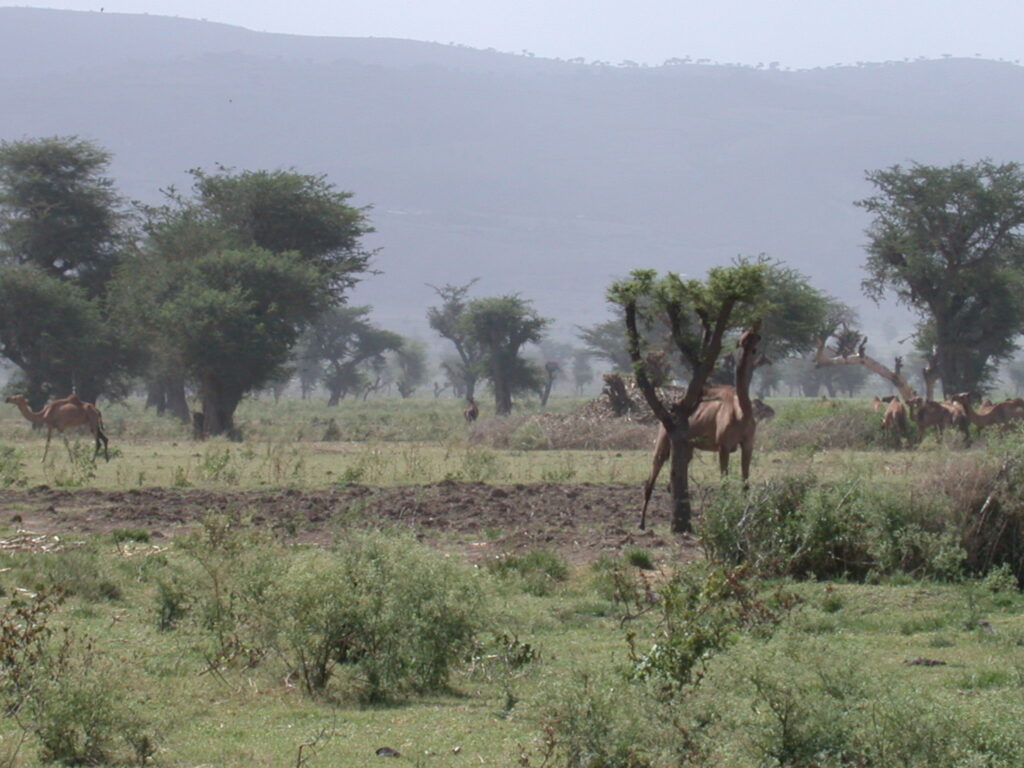
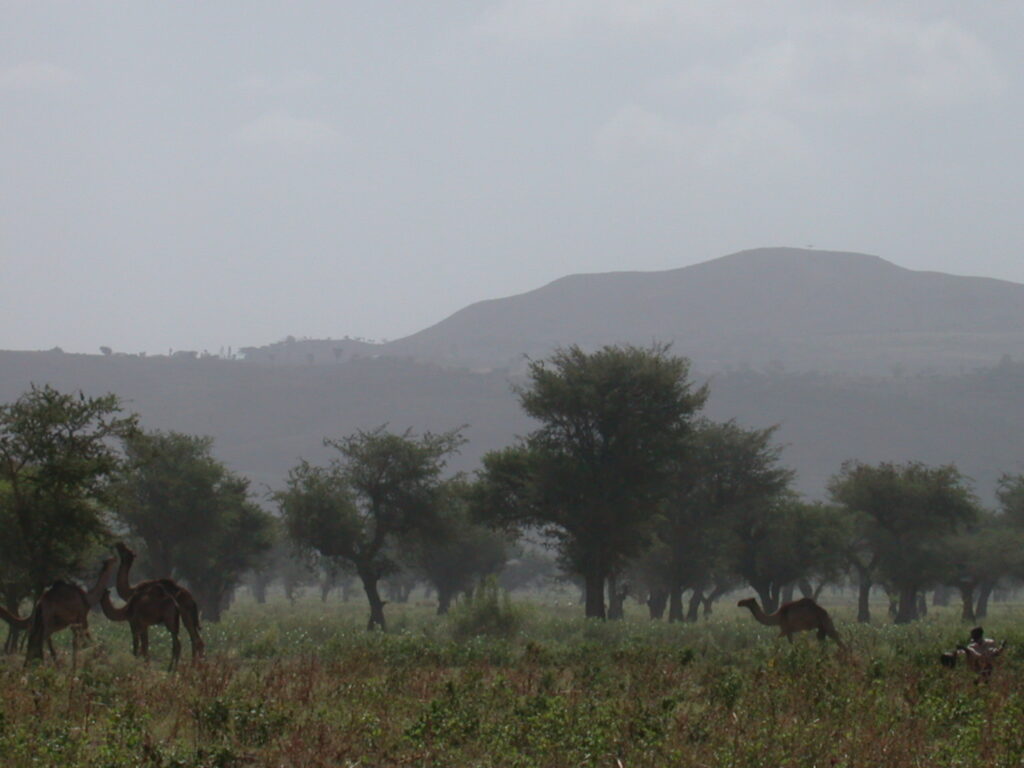
When the replacement bus arrived, it already had some passengers on it, so we had to really squeeze to get everyone and their baggage onto the bus. Some locals tried to hop the bus to the next town. The tickethandler guy had to demonstrate that he was checking everyone’s tickets on the whole bus twice. Then, he could let the others know that they couldn’t board without a ticket. All of this was taking a long time. Finally, he got a bit more assertive and started gradually pushing the local guys off the bus. Each eventually left out the front door, but the final one got angry and slapped the tickethandler across the face, then left the bus. The tickethandler spit in contempt onto the ground. The slapper ran from the bus to his buddies and got an axe, then started running back toward the bus. Bus riders started yelling and the slapper’s friends held him back from actually wielding the axe on anyone. The driver started up the bus, and we left. I made a couple of friends during the wait for the second bus and we had some interesting discussions about public health and other topics while riding on the bus.
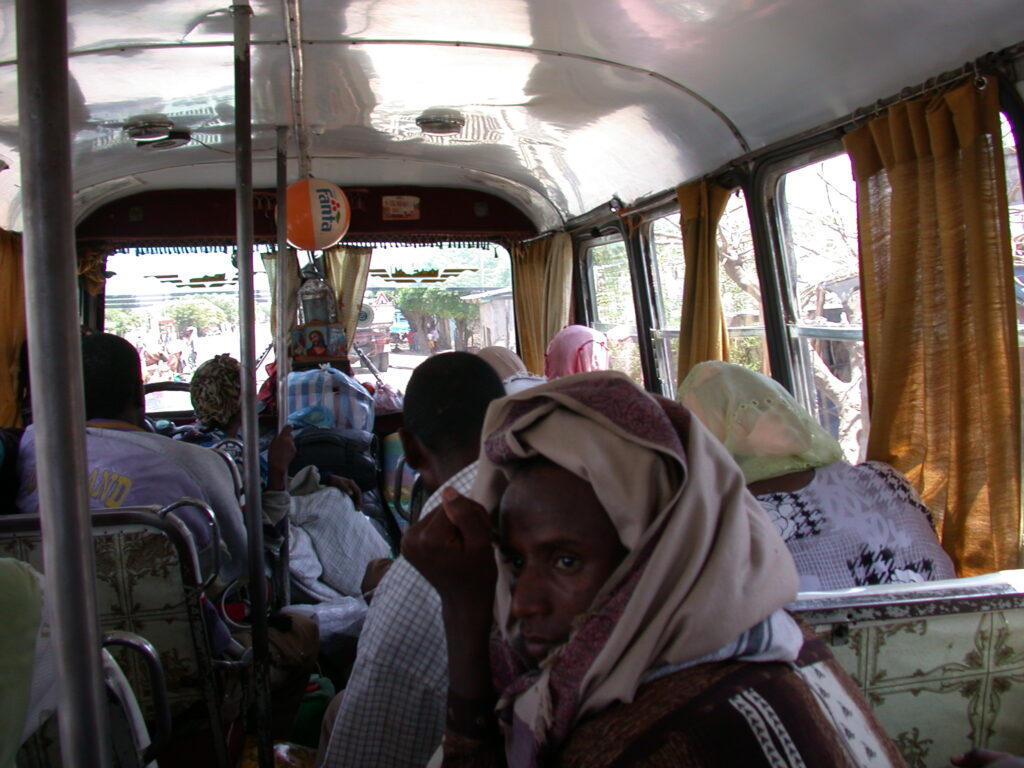
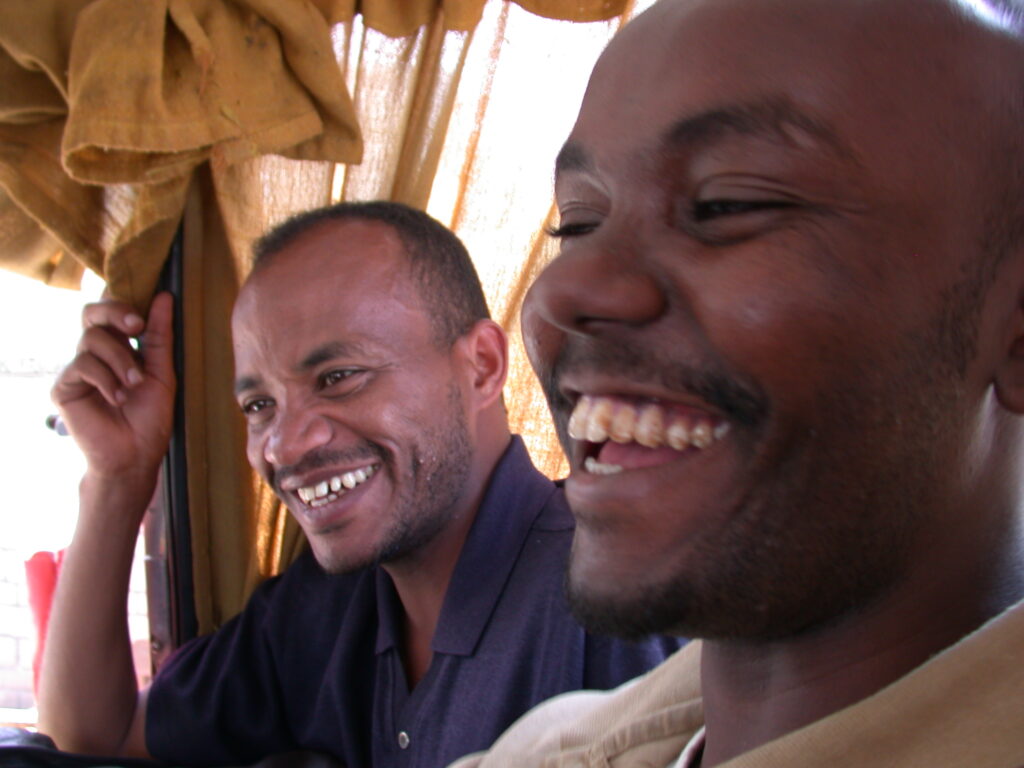
At Awash Saba, I paid an outrageous sum of 400 birr (about US$45) to get a ride the rest of the way to Bilen Lodge. I got some pictures of the landscape on the dirt road into the lodge.
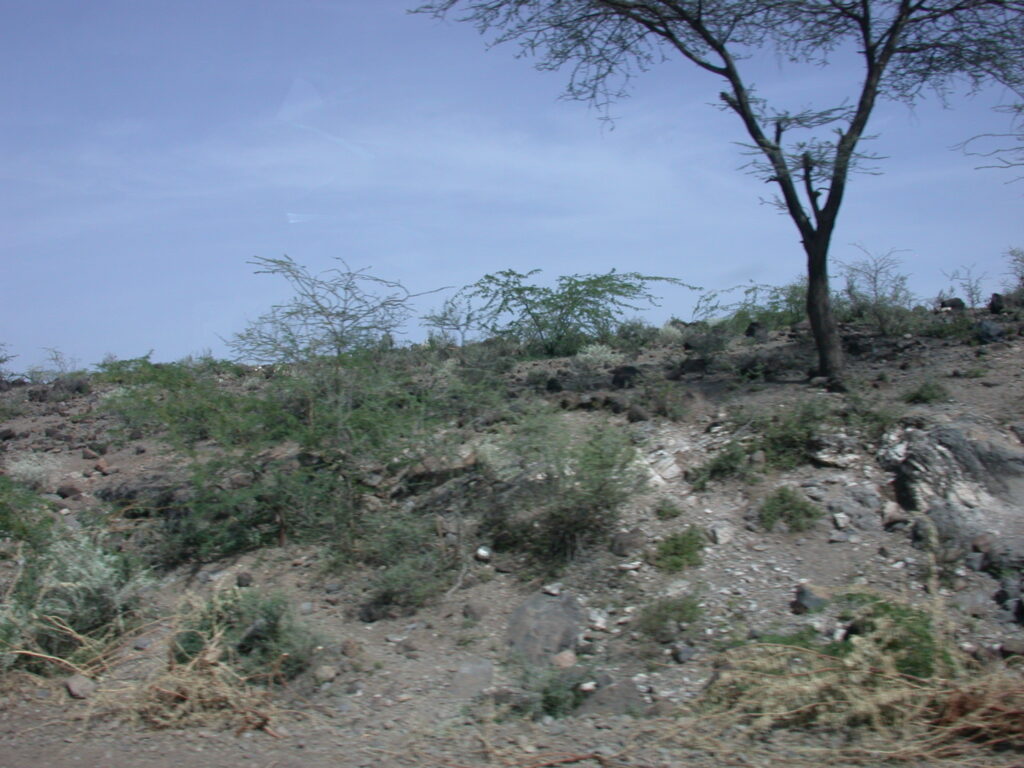
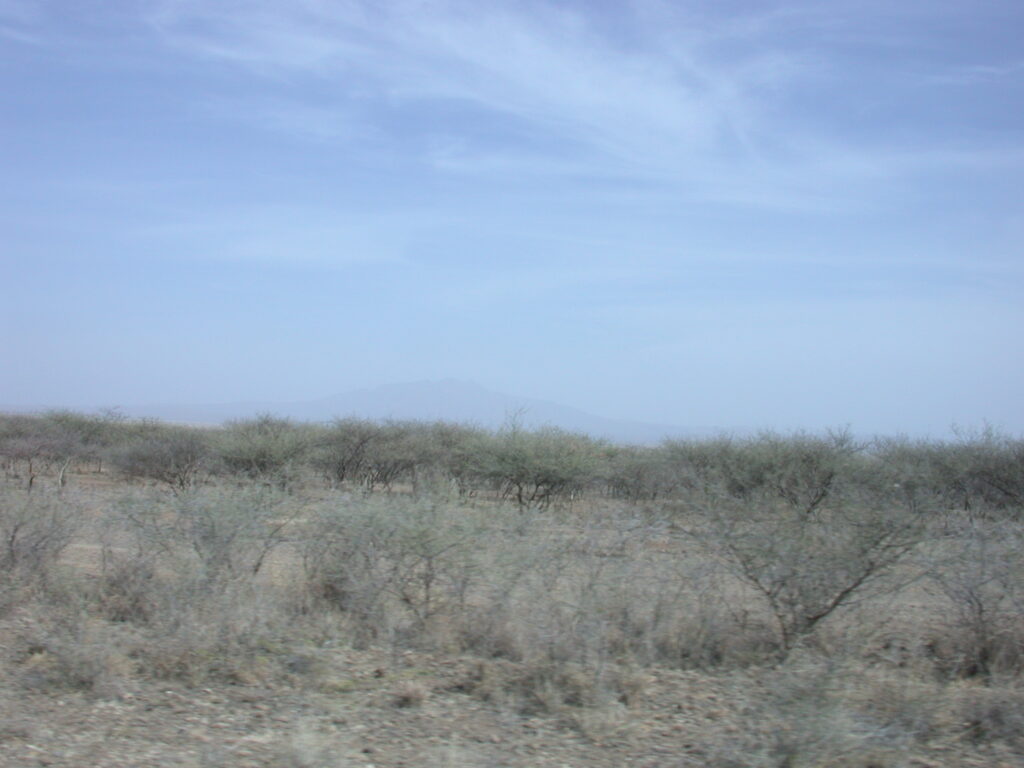
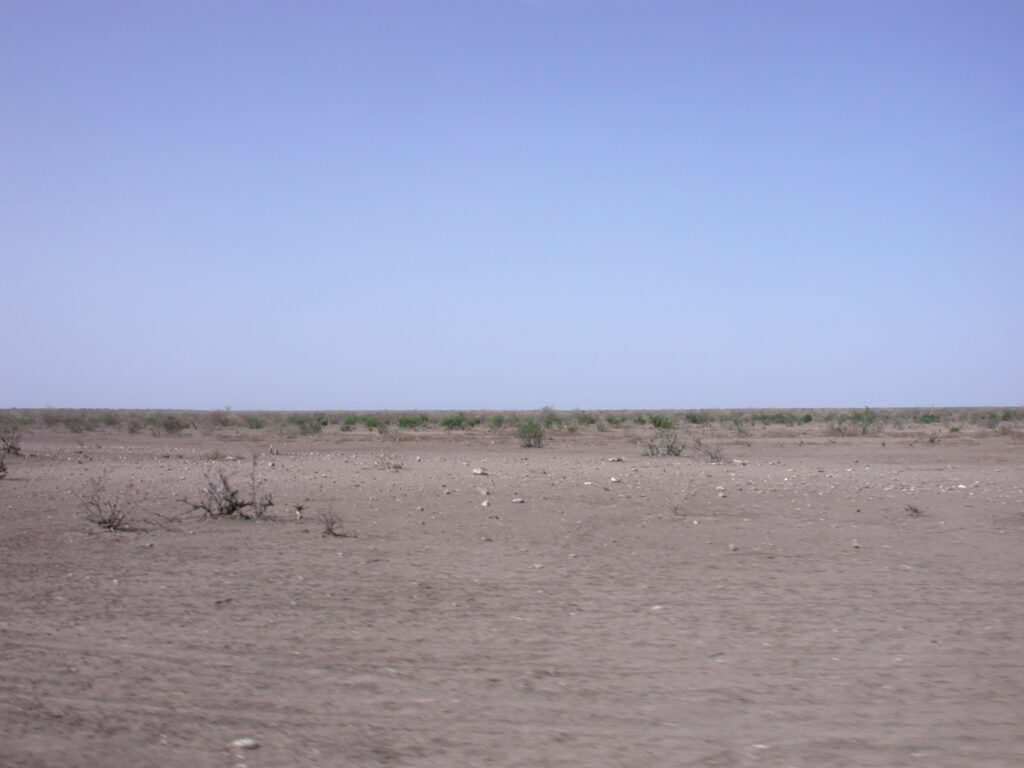
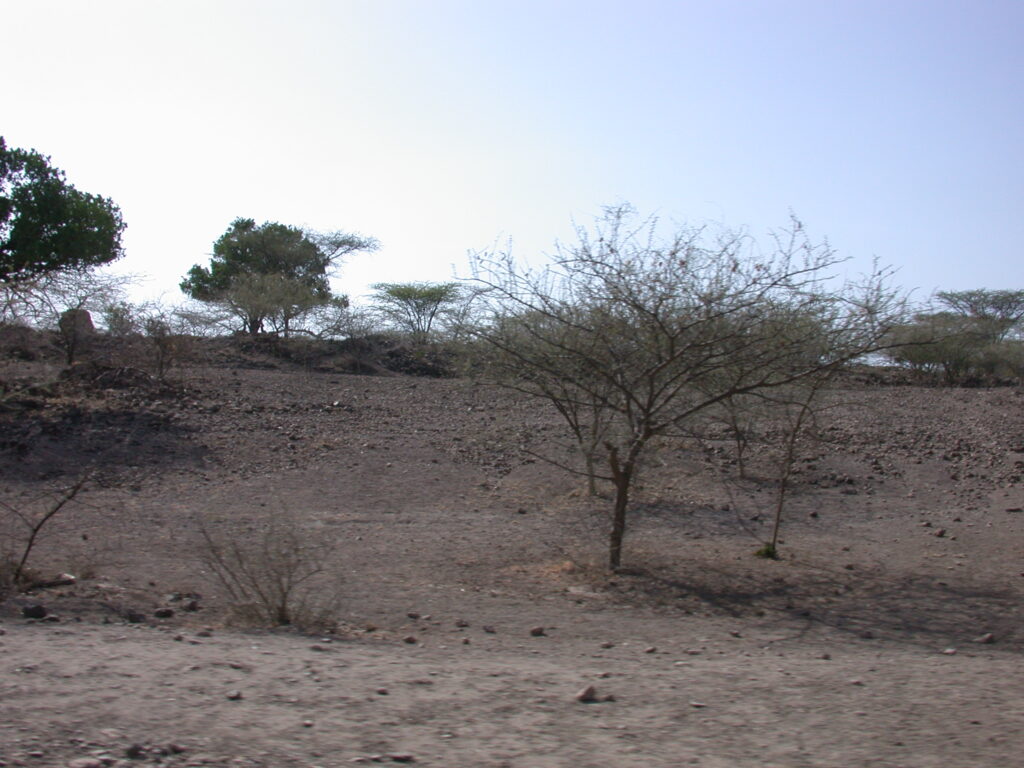
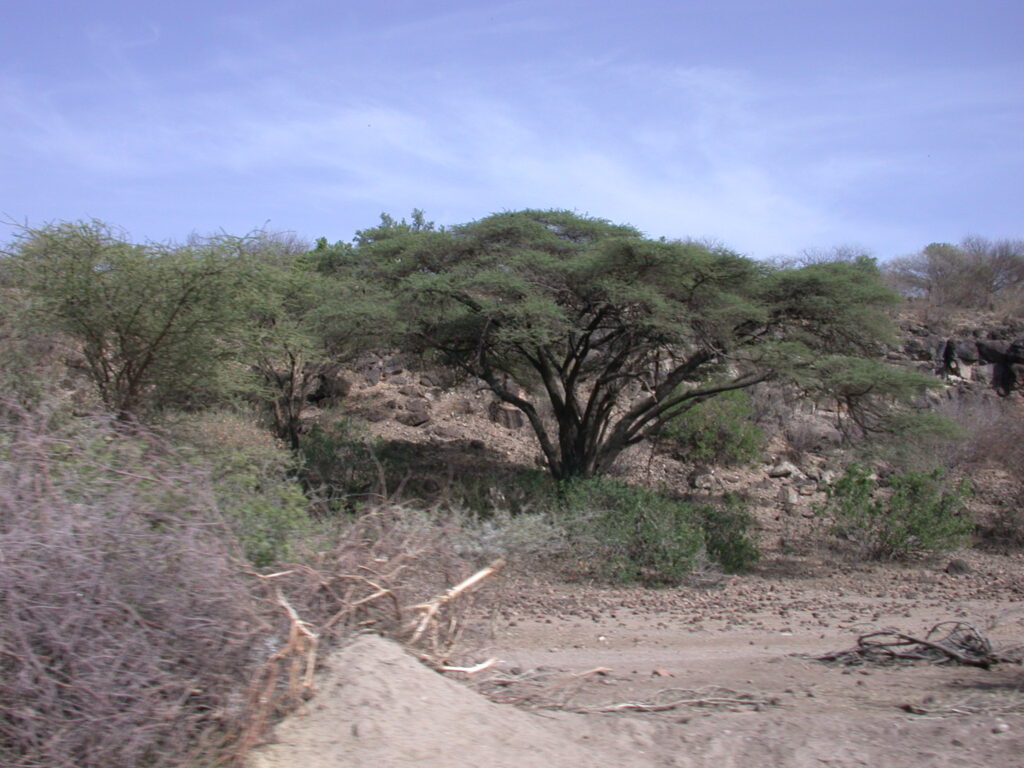
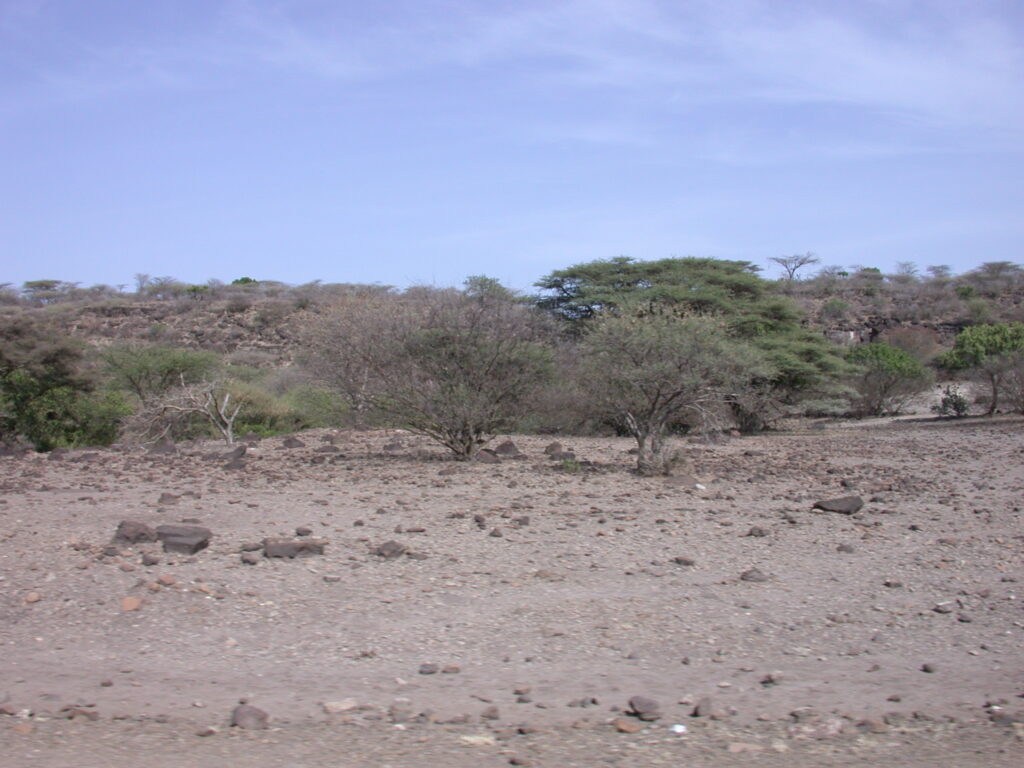
When I arrived at Bilen Lodge, Ato (aka Mr.) Makonen seemed concerned. He was worried that I wanted to stay in one of the tukuls. When I explained I wanted to camp, he was much relieved. Two Afar tribesmen associated with the Bilen Lodge helped me move my bags and I paid them a small tip. Then, I looked around for a campsite. I wanted a place that had shade in the morning and the afternoon, since the sun was quite bright and hot. After awhile, I found a place I liked and started moving my bags over to the campsite. One of the Afar guys saw me and helped move one of my two heavier bags.
I got everything set up at the campsite, then went into the lodge. There, I met three Canadians — Gordon, Lynda, and Richard. They immediately welcomed me into their group, buying me drinks and chatting up a storm. Gordon mentioned my Tilley hat right away and we made some jokes about that. Richard and I chatted quite a bit as he drank the afternoon away.
After awhile, everyone headed back to their tukuls to get ready for dinner. I just hung out in the lodge and met people. A group of young people working at various NGOs was traveling together as was a group of Germans and a group of French people. I met a German lesbian couple living in Addis Ababa, one a health administrator (who I ran into again later at the Hilton Hotel in Addis) and the other a school teacher. I ate the buffet-style dinner with the lesbian couple.
I was tired after dinner and went back to my tent to crash.
The next morning, I headed in to the lodge, hoping to meet up with some people to go on one of the excursions from the lodge. The excursions required a local Afar guide to keep on good terms with the local Afar villages. The young NGO types were good enough to let me join them on a trip to the local hot springs where we encountered Afar tribespeople herding camels through the pools for their morning bath and drink.
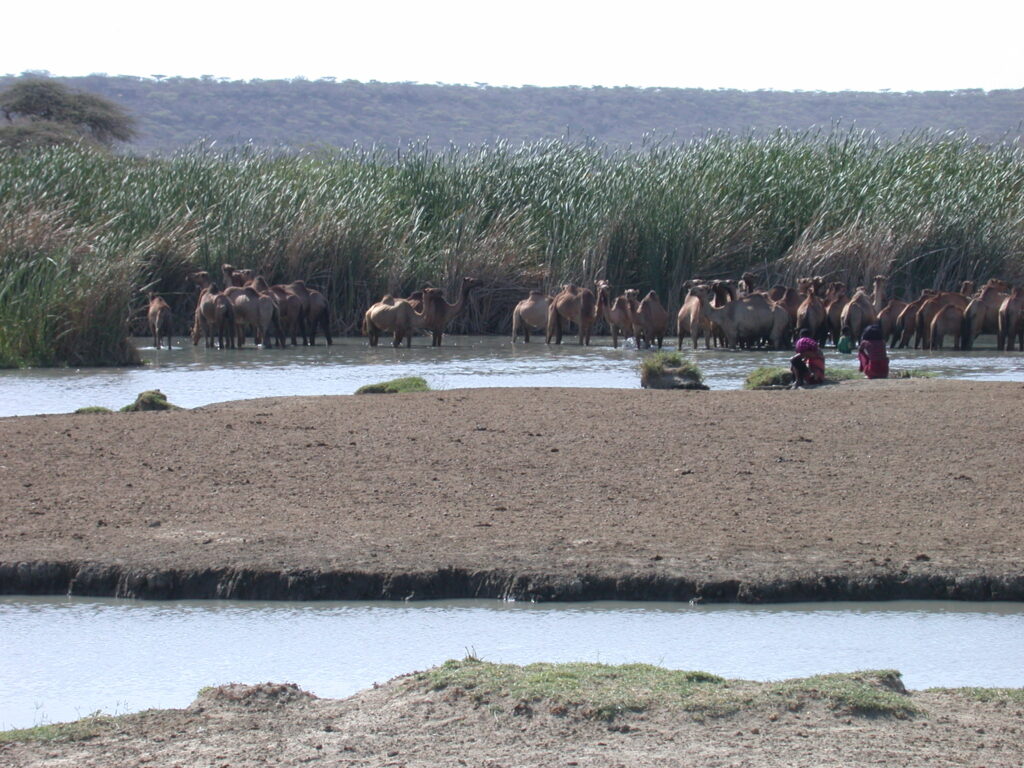

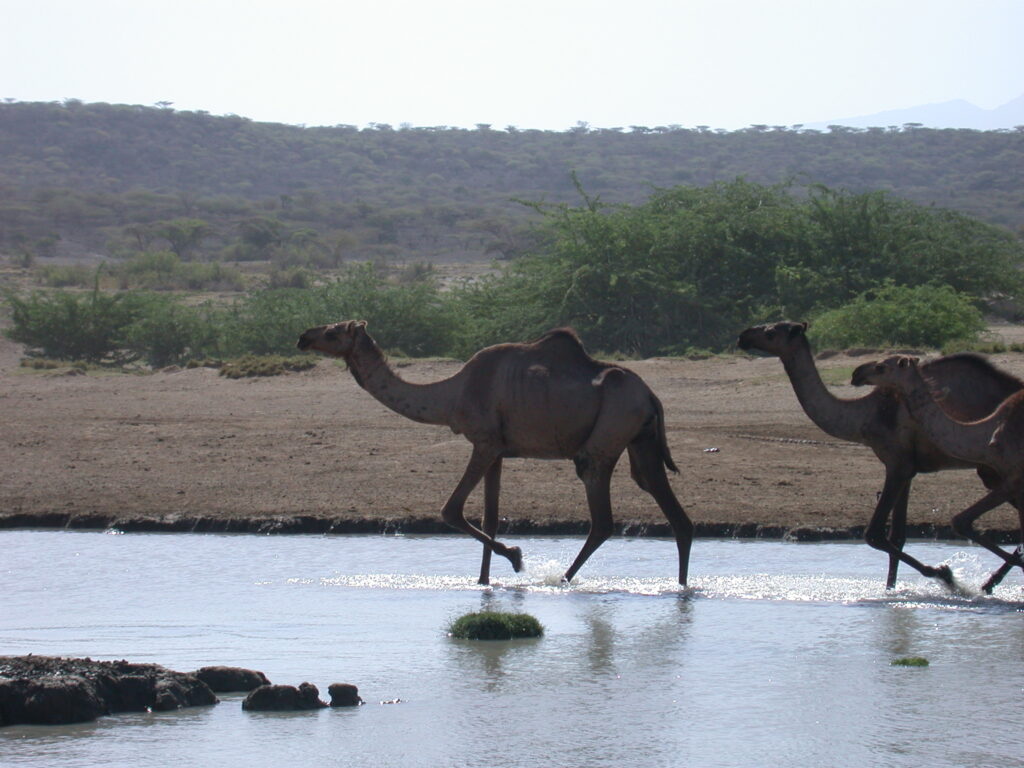
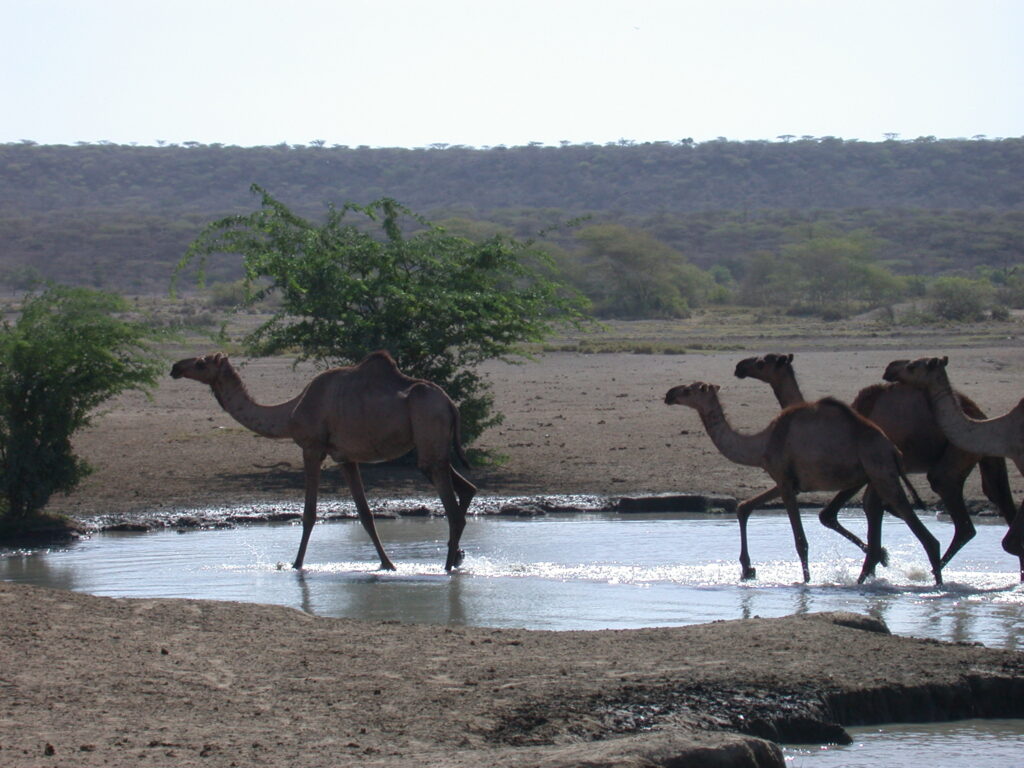
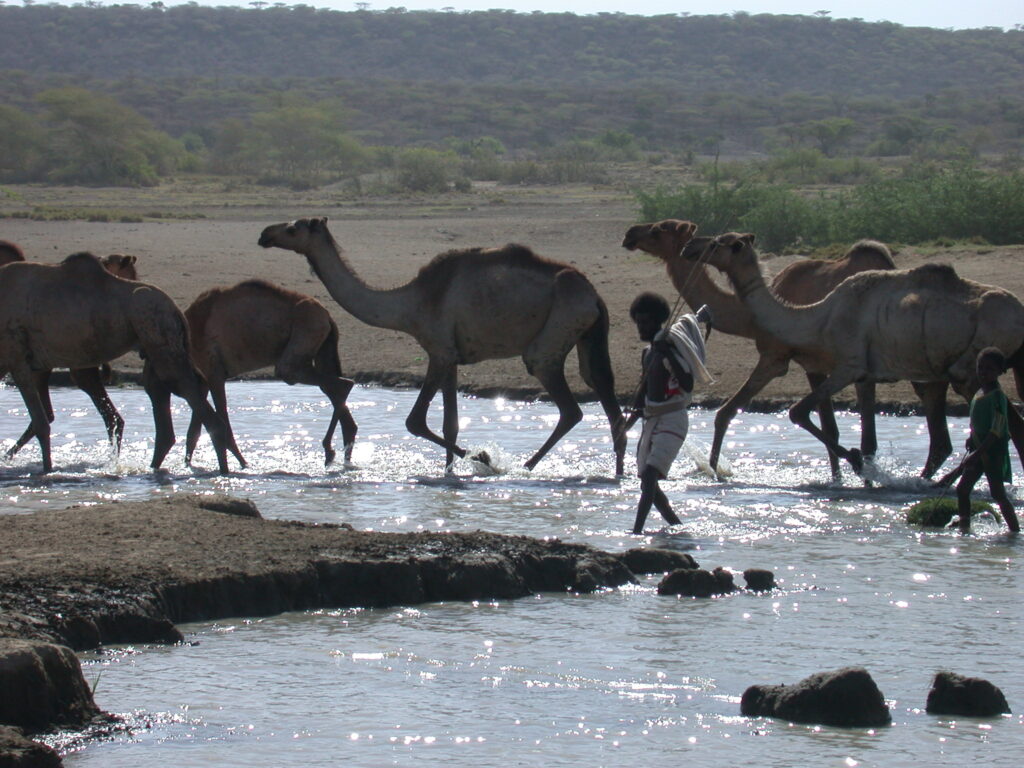
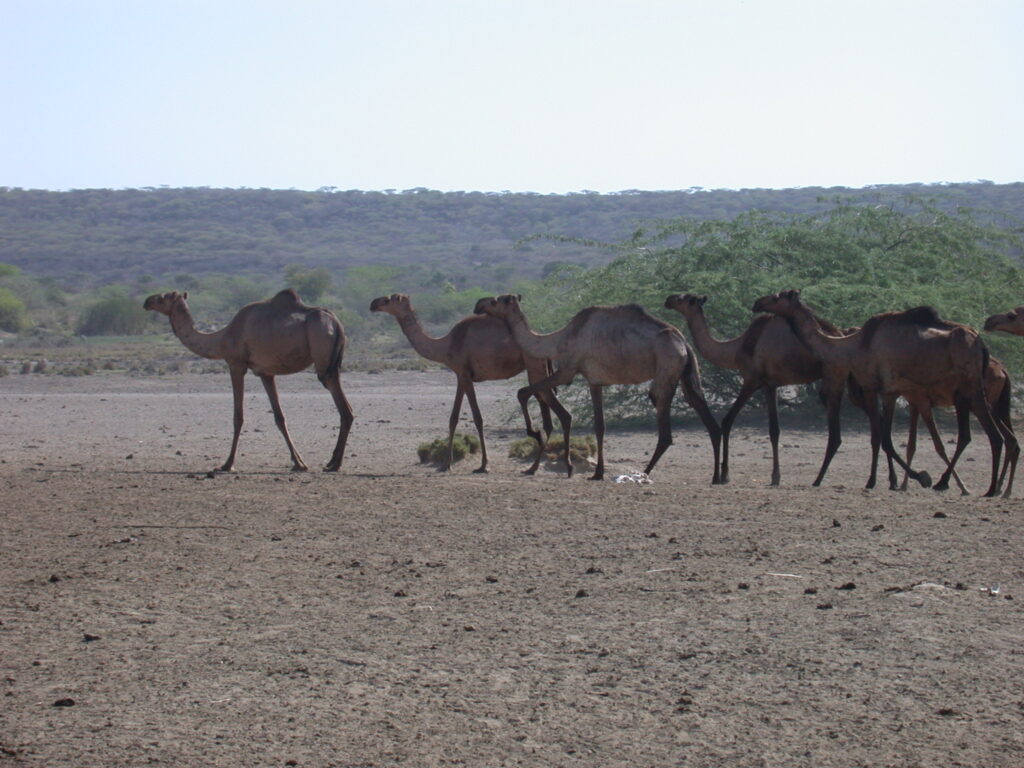
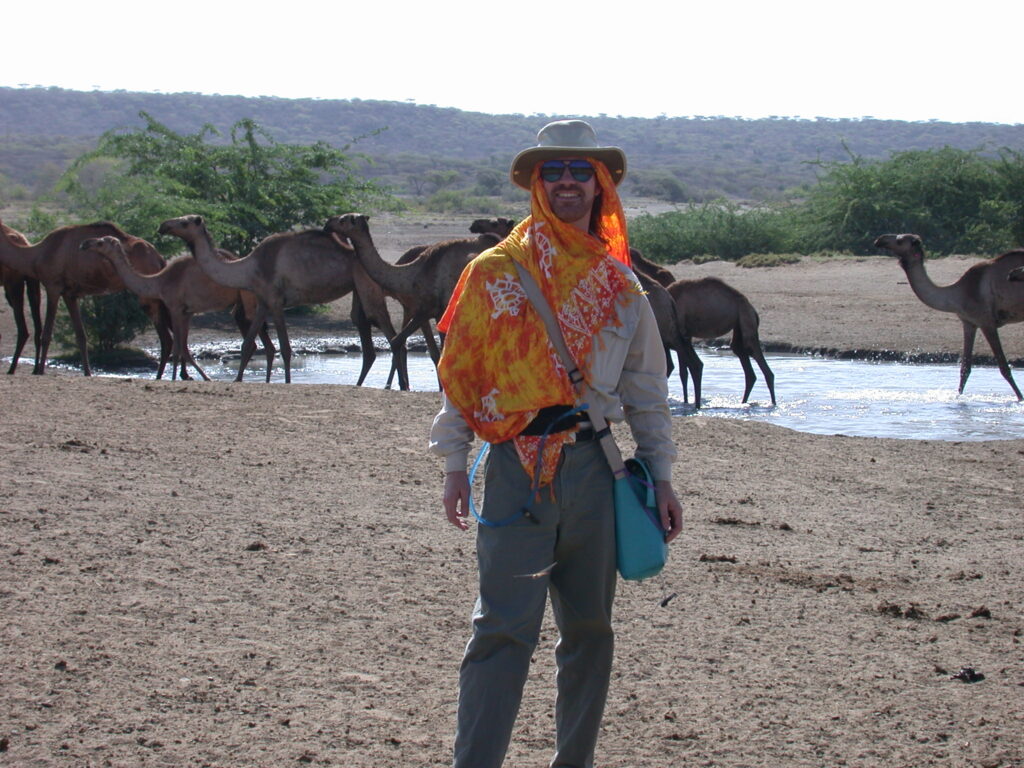

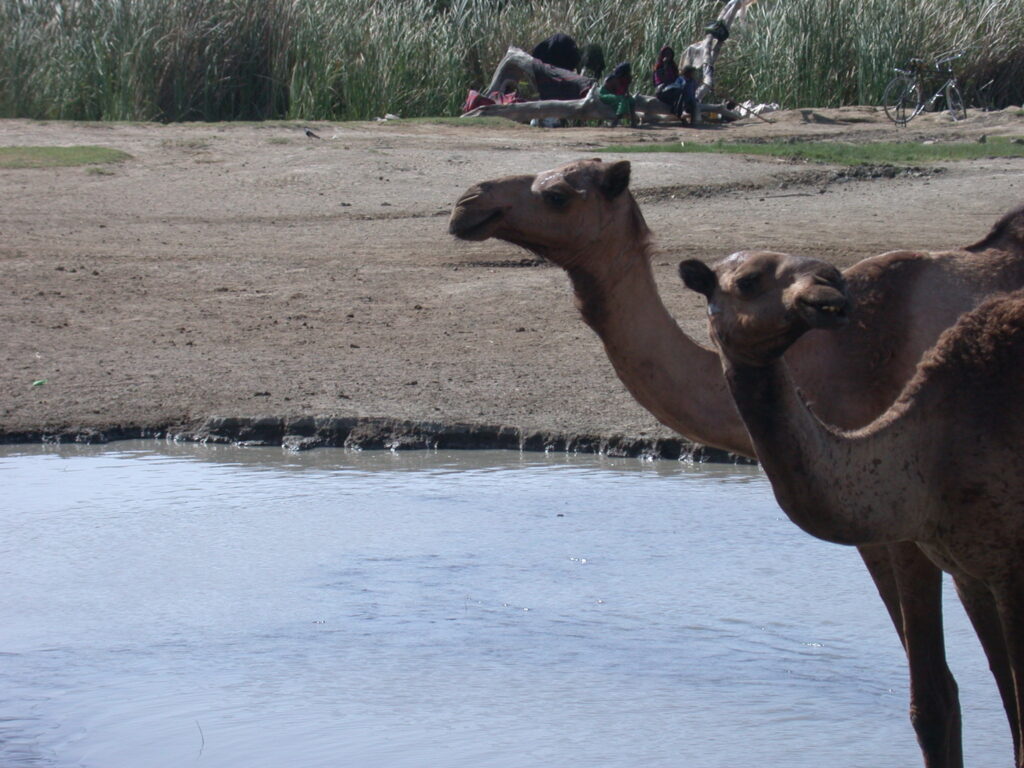
The camels and people stayed mostly at one end of the hot spring pools. I found out the reason why – two crocodiles wandered around the other end of the pools!
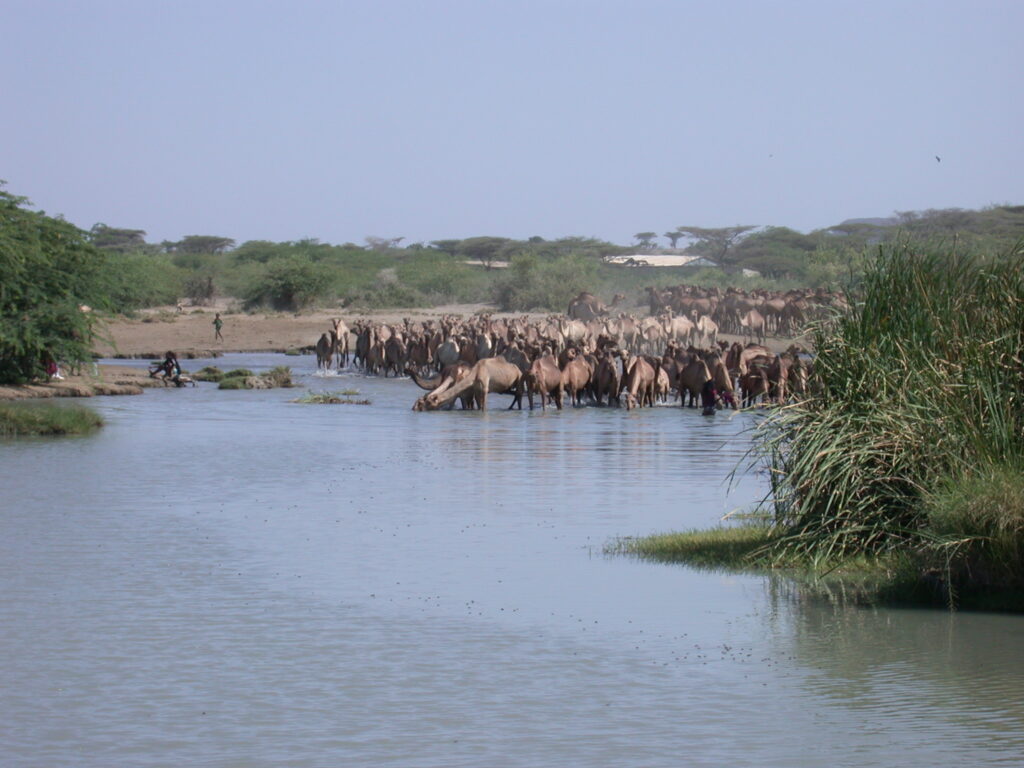
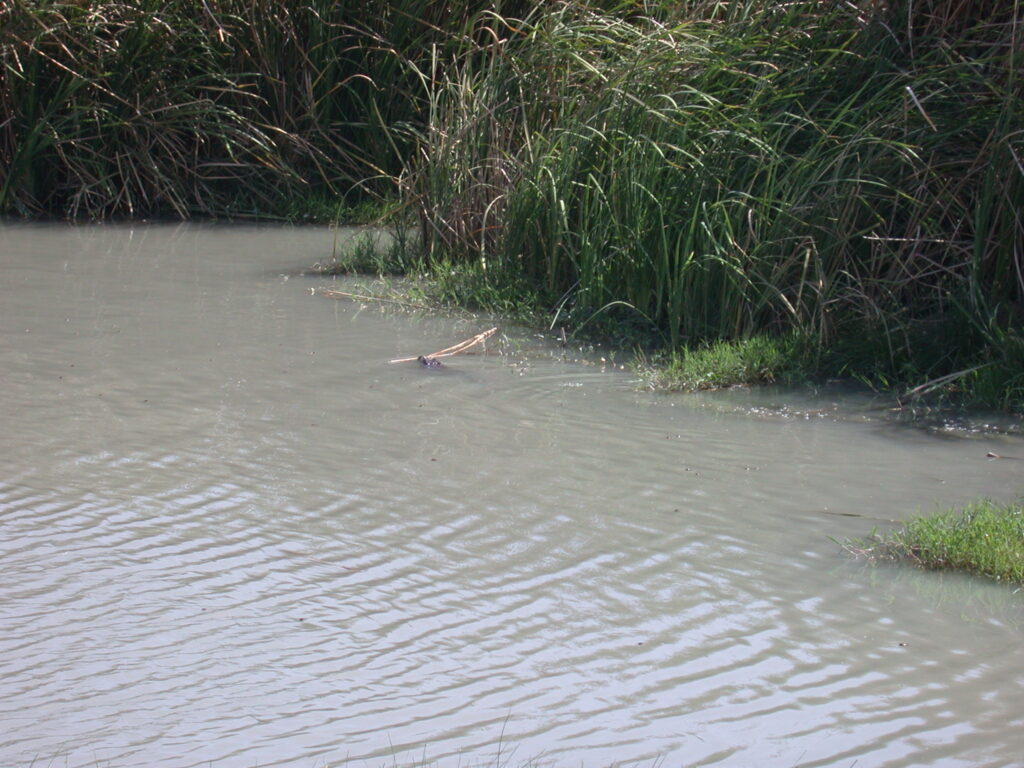
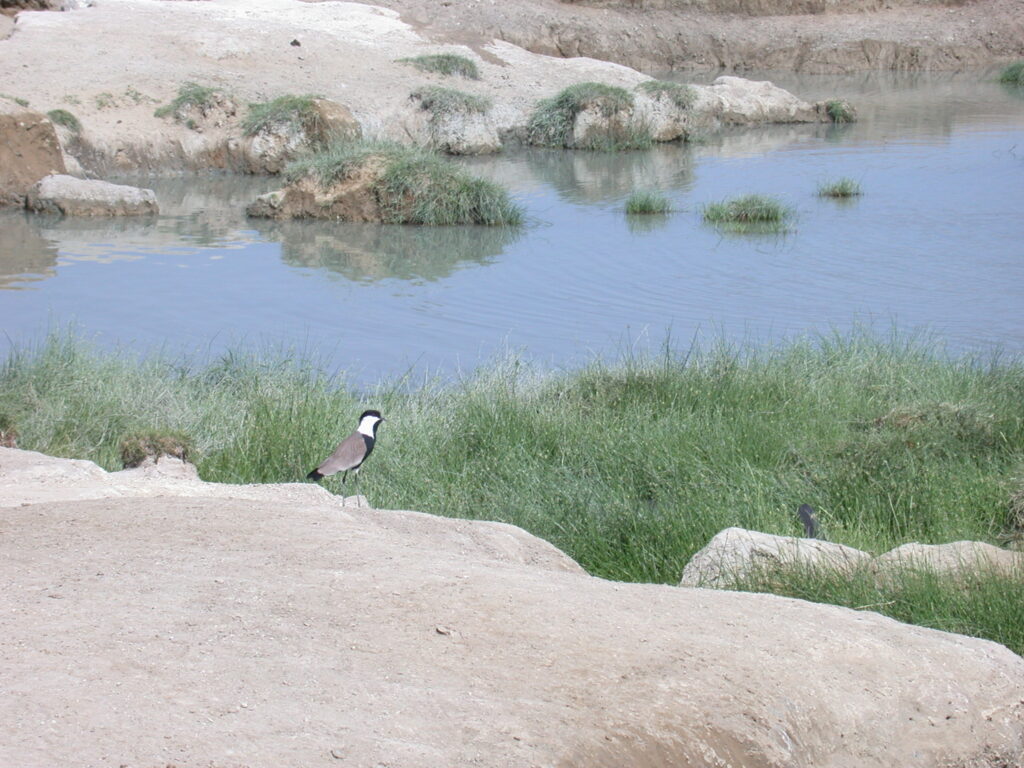
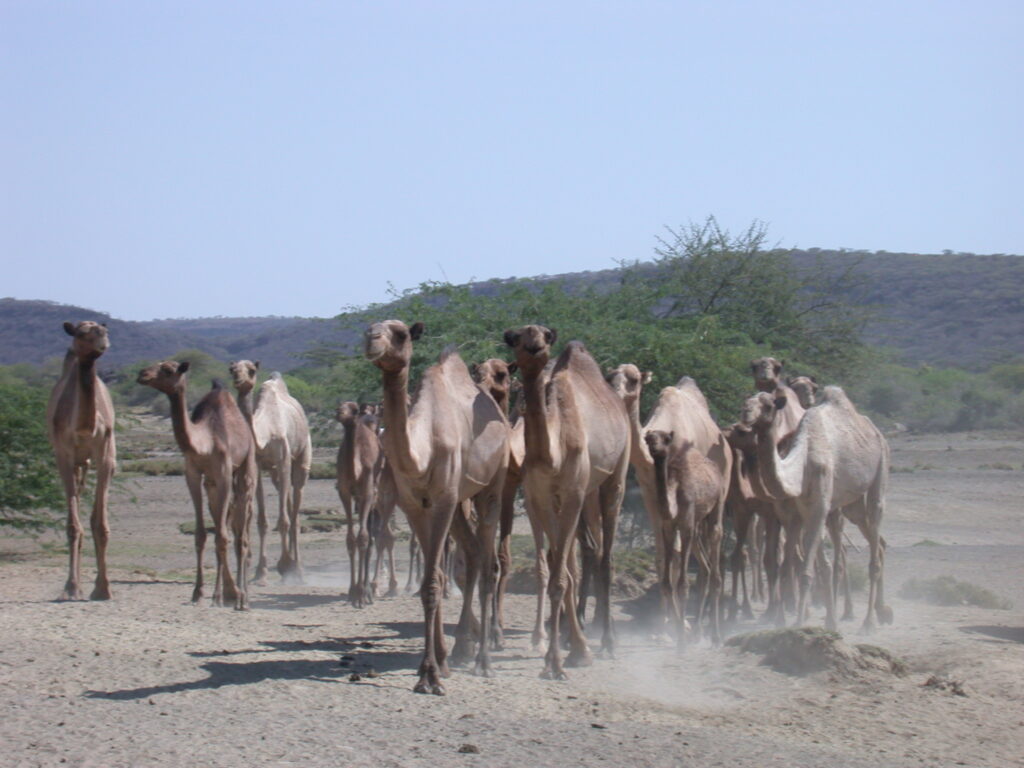
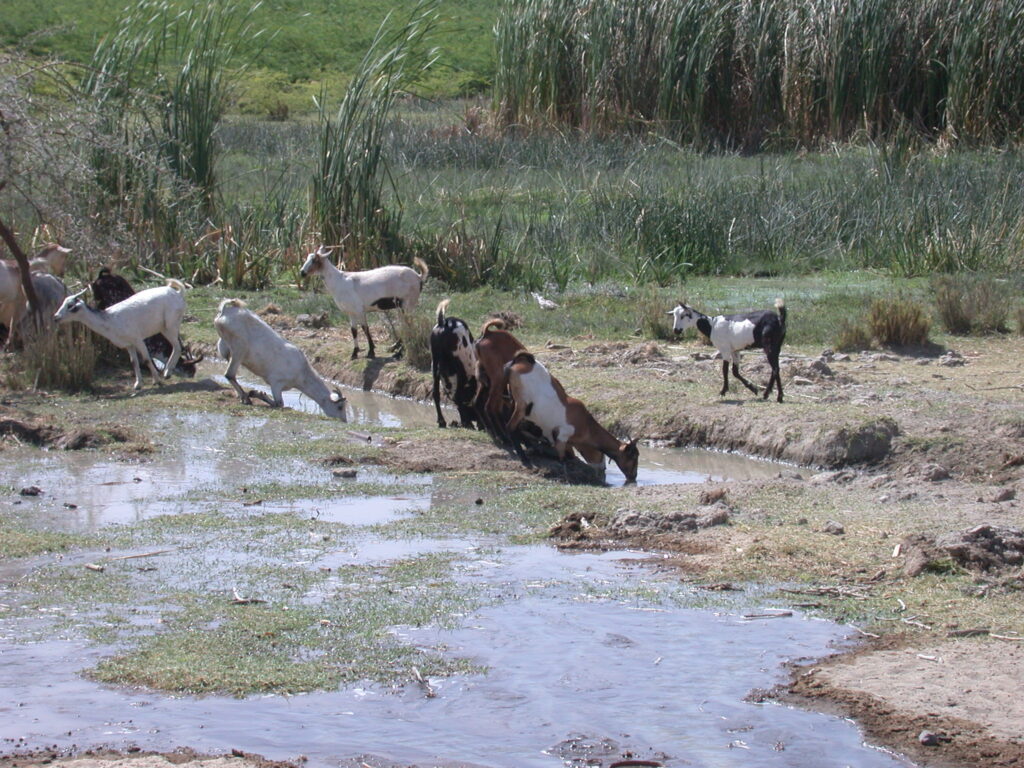

The last picture above is the shower that the lodge cook Alemayo lent me since I was camping and didn’t have a tukul with a shower of my own.
On the excursion, I chatted a bit with some of the NGO folks, but mostly got to know Rudy who works with the UNICEF Children’s Fund developing metrics and methods for auditing their funding programs.
The Afar tribespeople are proud and territorial. The Afar tribesmen carry sharp sheathed swords and often a gun. In previous times, they used to remove the scrotum of unwanted visitors, which amounted to a rather painful death. Nowadays, they negotiate a bit more.
One of the French guys staying at Bilen Lodge wandered uninvited to an Afar village. Some Afar tribesmen came to Bilen Lodge upset and trying to identify him. Apparently, he looked a bit like me, but fortunately they could tell he wasn’t I. When they found him, they told him that if he showed up again uninvited to the village, they would shoot him.
In the evening of March 3, some of the guys gathered around a dying campfire started for a group of Germans. The fire seemed like a crazy idea, since it was so hot out, but what the hey. One of these Germans had stolen a lightbulb from the porch on Gordon and Lynda’s tukul the night before, as observed by Richard. At first, Richard was just stunned, then he decided to try talking to the friend of the guy who took the lightbulb. The friend told him he was telling a fairy tale and went to bed. So, a feud of sorts started between the Canadians and the Germans. Eventually, Richard even stole some of the Germans’ lightbulbs. I didn’t get involved.
After the Germans had left the fire, Richard, Gordon, Rudy, a guy named Martin from Madrid, and I went over there started singing songs. They drank lots of beer. They poured some of the local araki liquor on the fire, which made large flames! Toward the end of the night, I sang “The Garten Mother’s Lullaby” and everyone went to bed.

